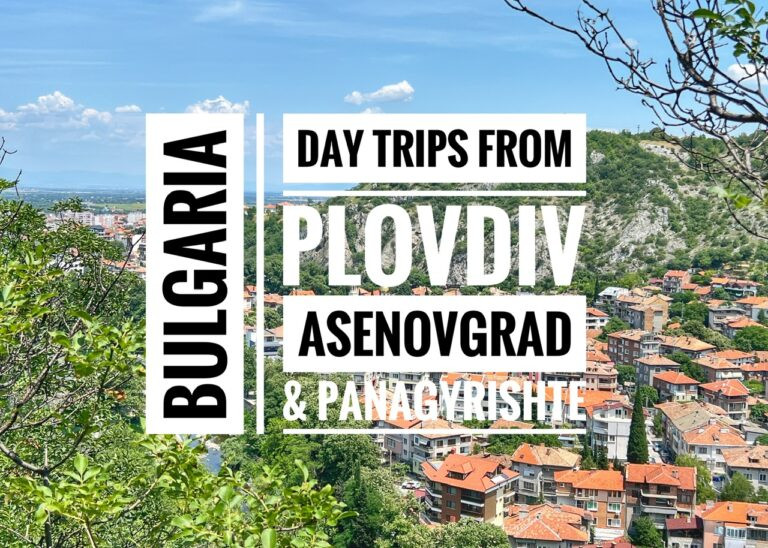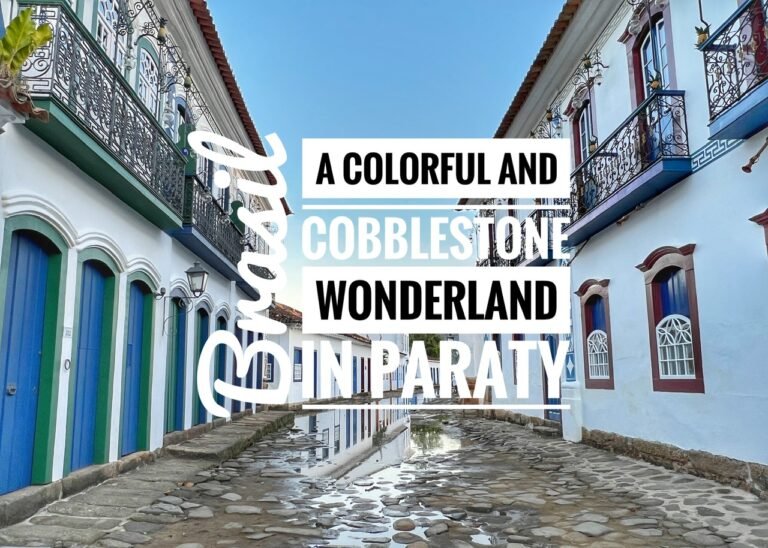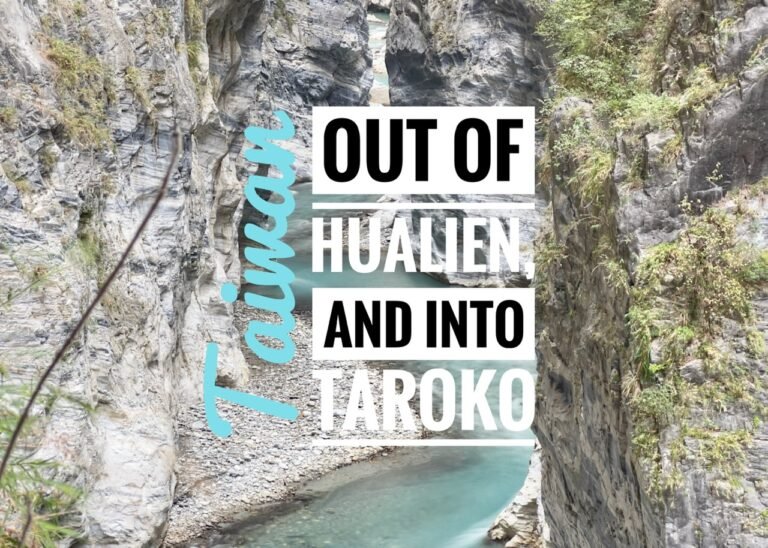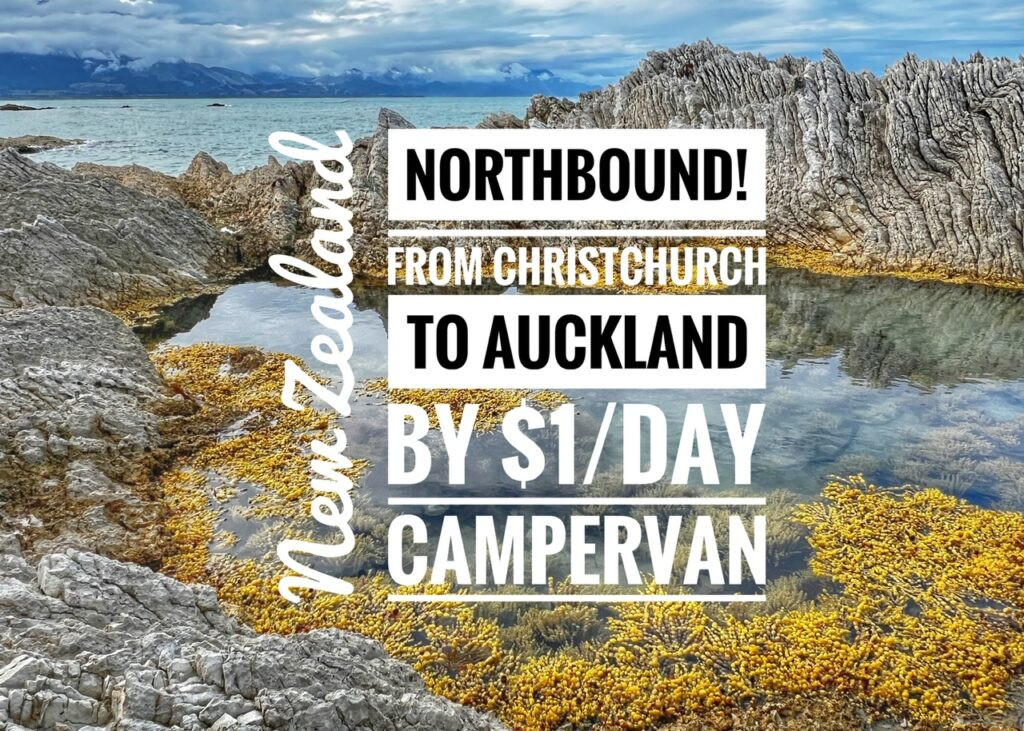
Day One: Christchurch to Marfells Beach Campsite (~4 hours)
Our third and culminating roadie in New Zealand was much anticipated because we finally ditched our tent and camping supplies we’d been hauling around since we first found it as street candy in Melbourne and lovingly collected at NZ’s opp shops. On March 8, we fetched an all-in-one adorably packaged Jucy Campervan, which guaranteed us the opportunity to “Find our Happy.”
The rental was booked about two weeks prior to departure, and would cost us $1/day from Imoova (com)* to relocate from Christchurch to Auckland and allow us to live our final days in New Zealand in functional luxury.
It also included a $100 stipend for a gas, and the vehicle fee for the ferry from the South to North Island. In short…it’s THE way to travel in New Zealand (Or, Australia, or USA, or Canada, or Europe…because Imoova is also available in these places…)
Our first day was packed with one dreamy coastal view after another, including the cutest baby seals we’ve ever laid eyes on, seaweed pearls, rocky scrambling and an actual good night of sleep.
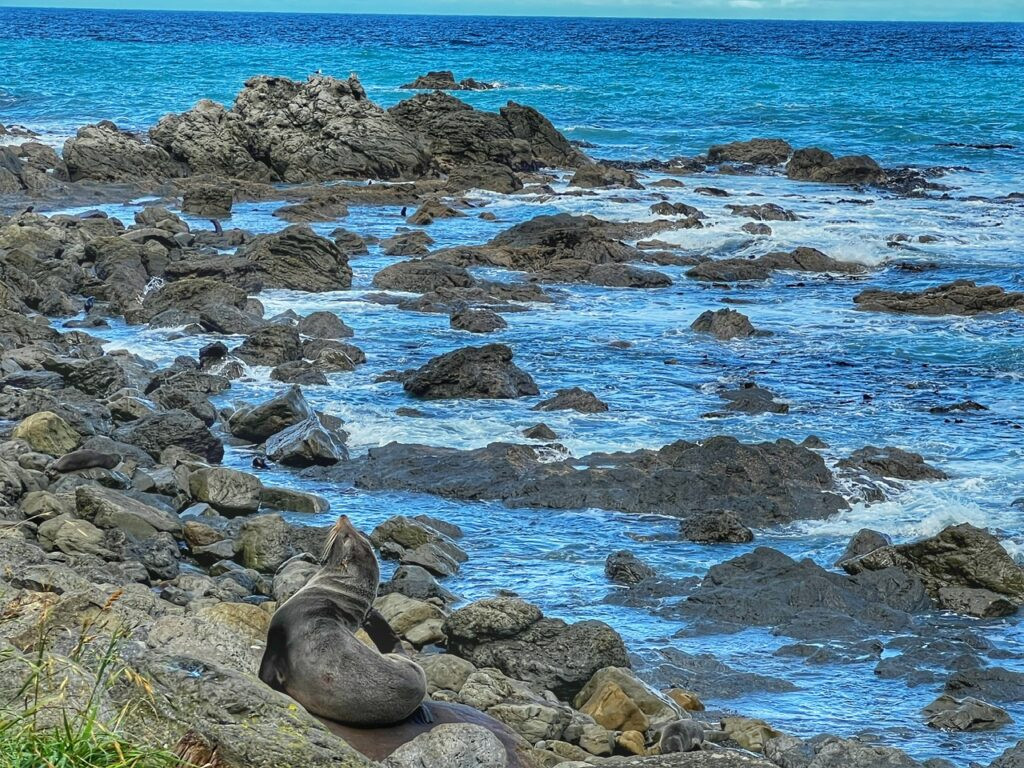
Our first stop was just south of Peketa on the side of the road where we spotted an entire seal colony flouncing ungracefully amongst the rocky outcrop like toddlers learning to walk.
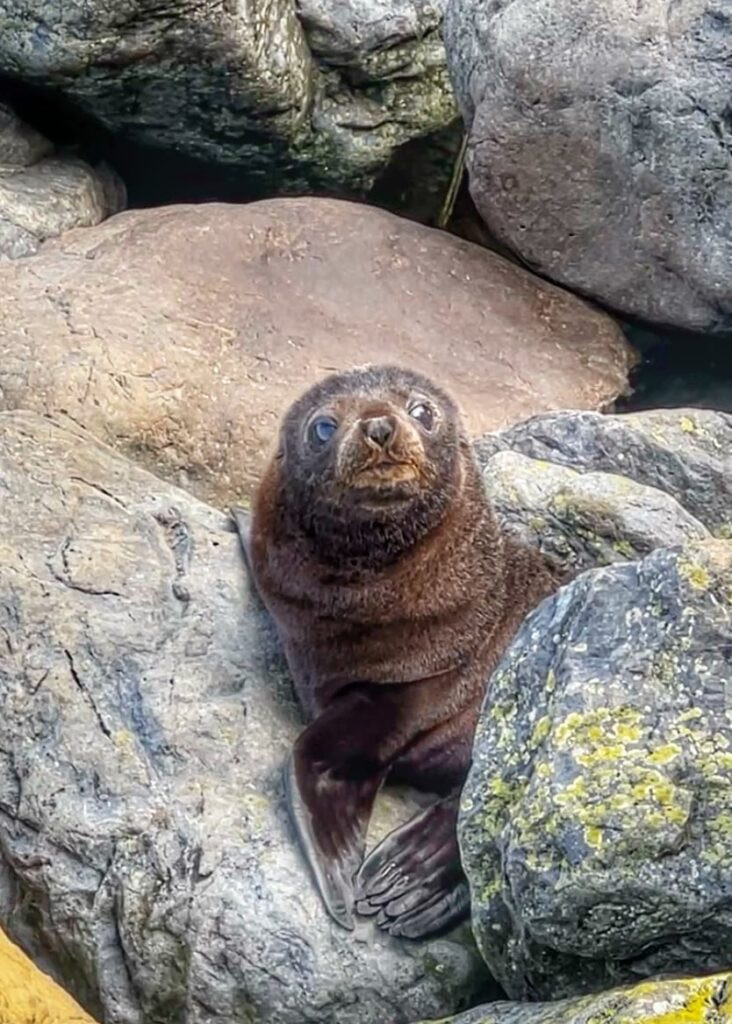
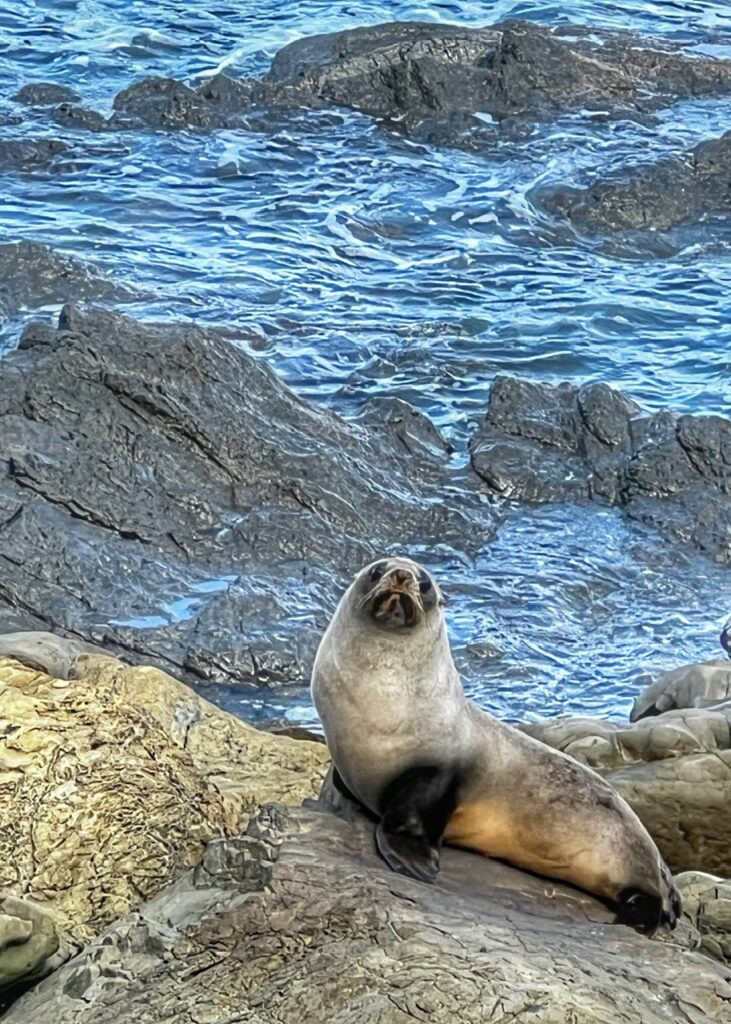
Although some of the most endearing were amenable to pose for a picture.
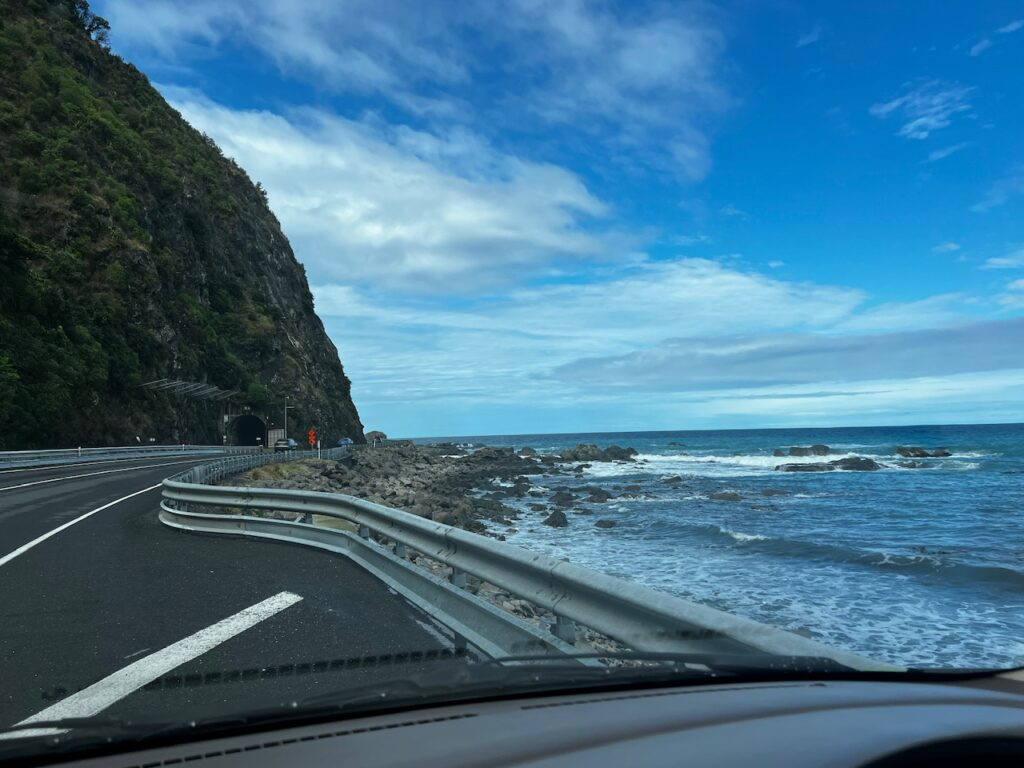
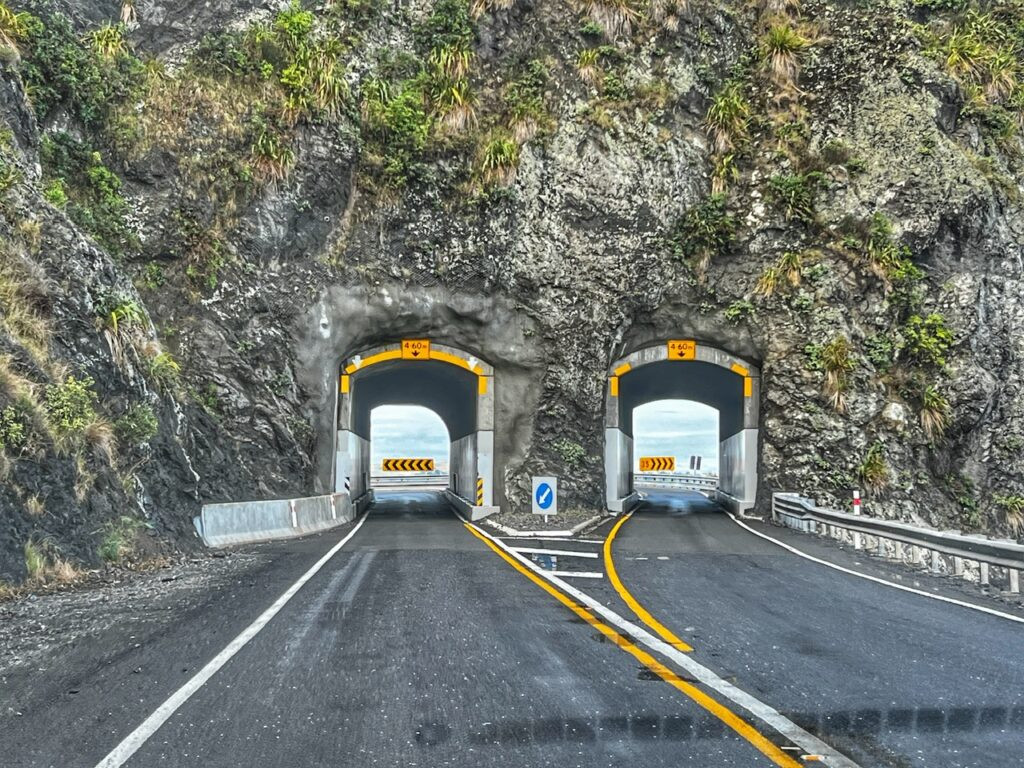
Most of the road hugged the coast throughout the morning. The numerous tunnels bored into the rock faces along the way.
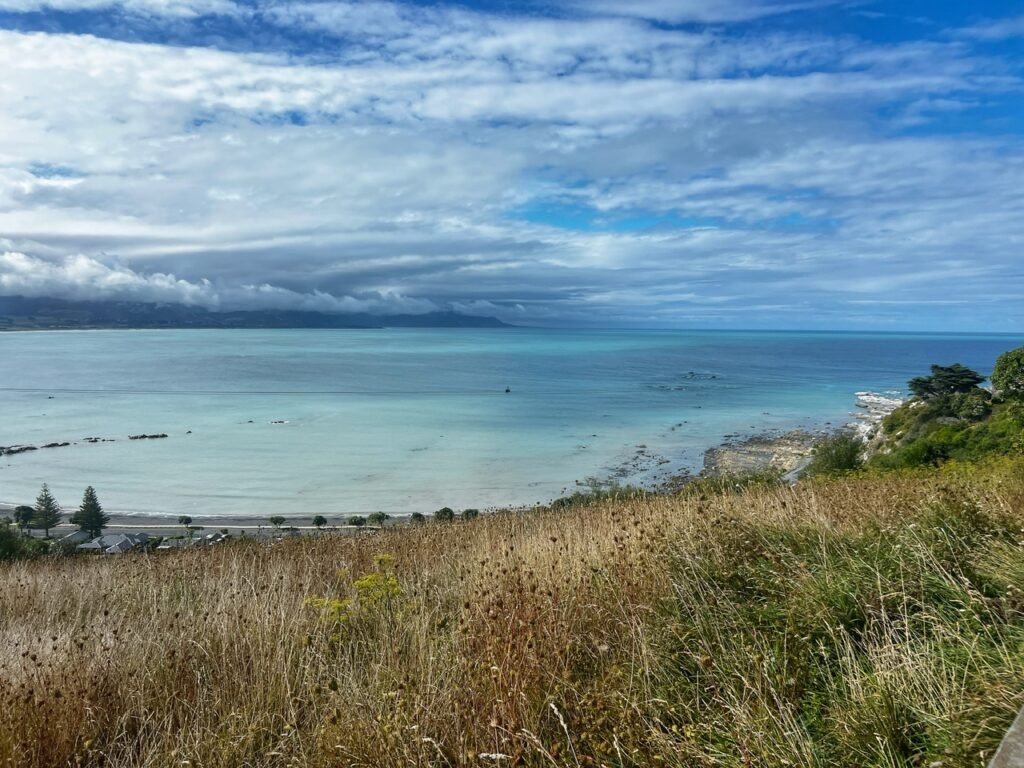
Pulling into the popular seaside stop of Kaikoura where the waters seemed infinitely painted with fifty shades of blue.
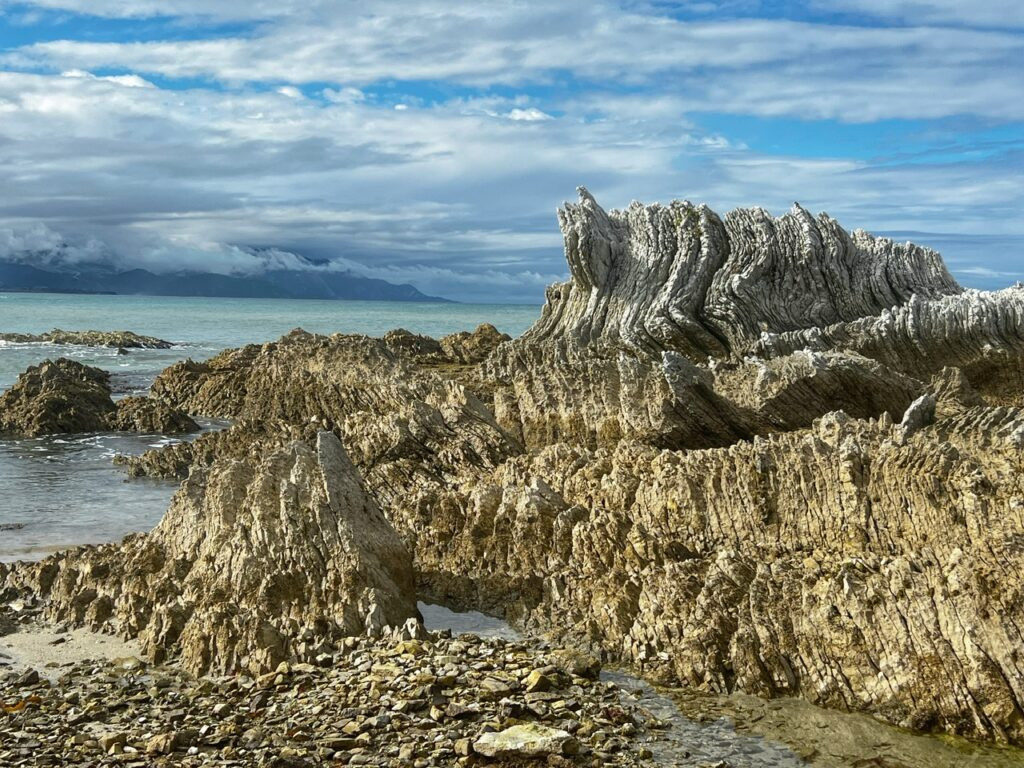
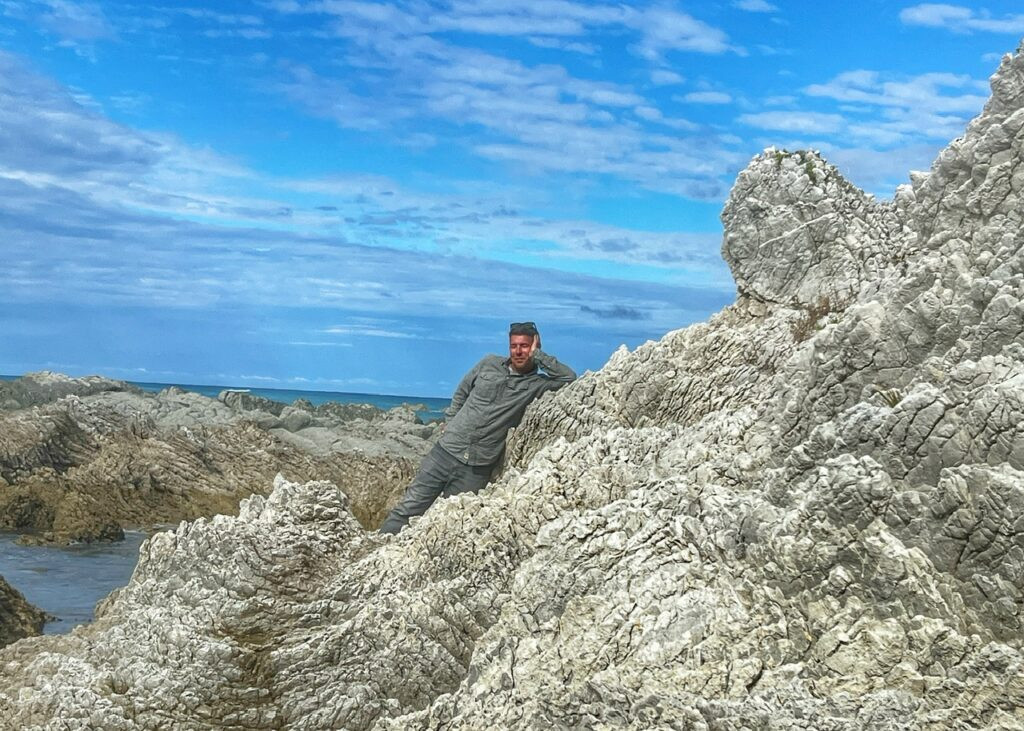
The rocks themselves seemed to be folded like the waves that surrounded them. Greg adds his touch of jocks on rocks to a picturesque scene near Kaikoura’s “Historic Chimney” which is marked on Google.
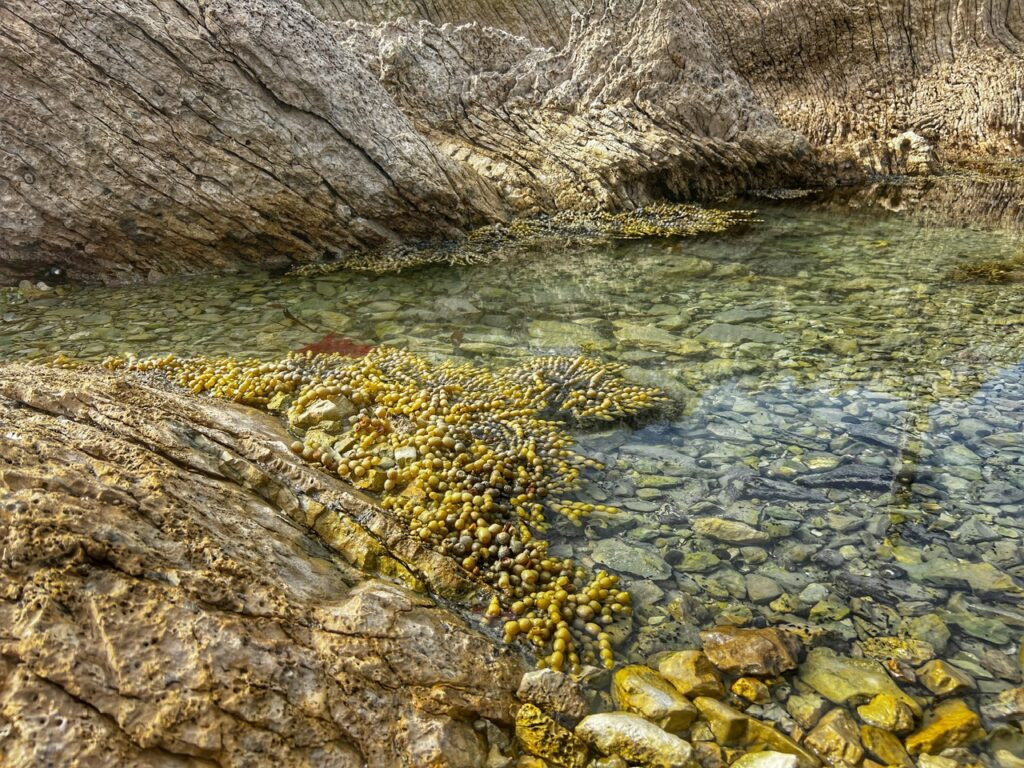
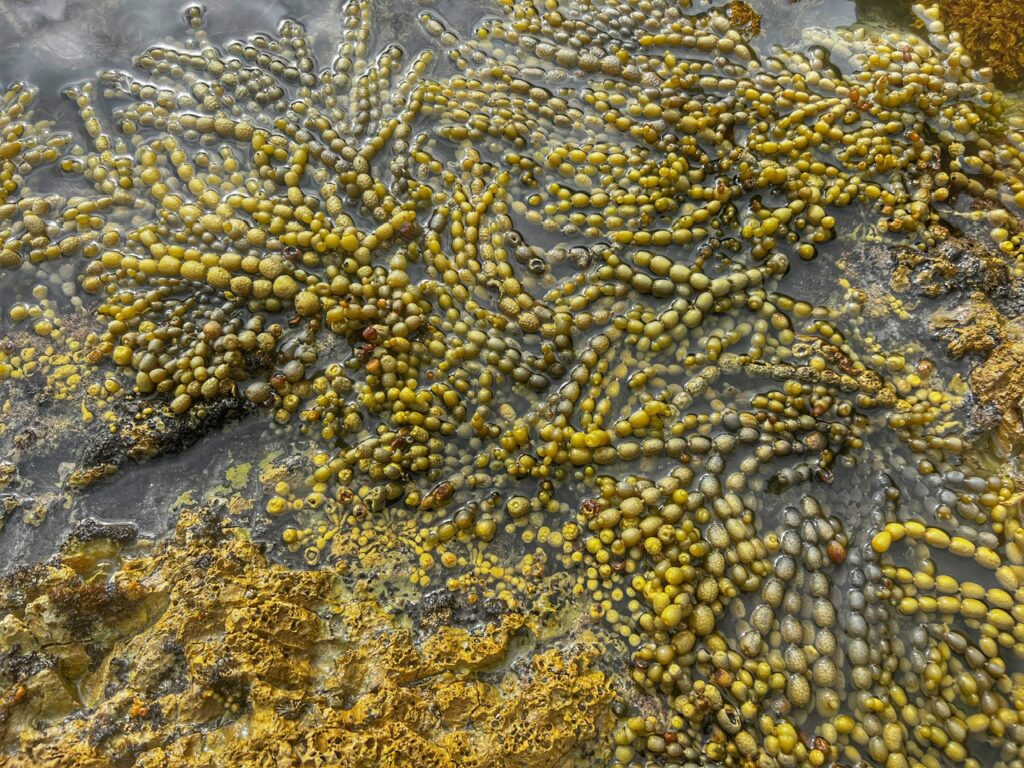
This area, also known for seal sightings, offered multiple tide pools, which cradled some extraordinary seaweed fittingly known as “Neptune’s Pearls, or Neptune’s Necklace” which is native to Australia and New Zealand. According to our plant identifying app, Leaf Snap, it is abundant on low-energy rocky reefs at mid-tide levels, where it outcompetes other algae species due to its high tolerance to desiccation.
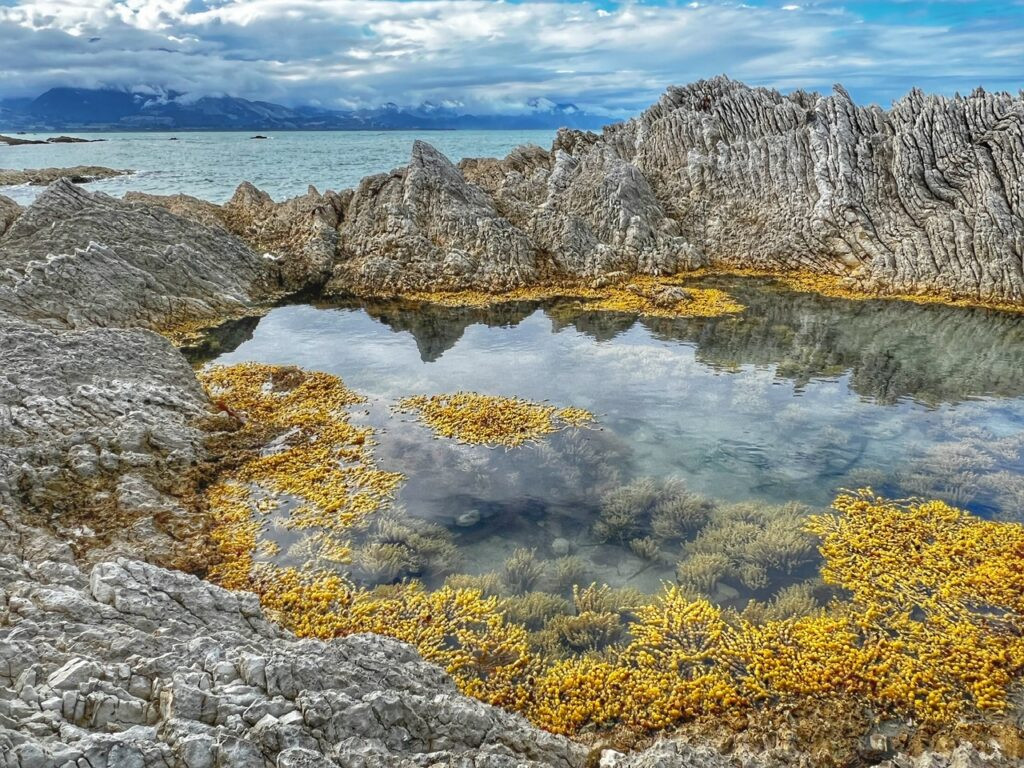
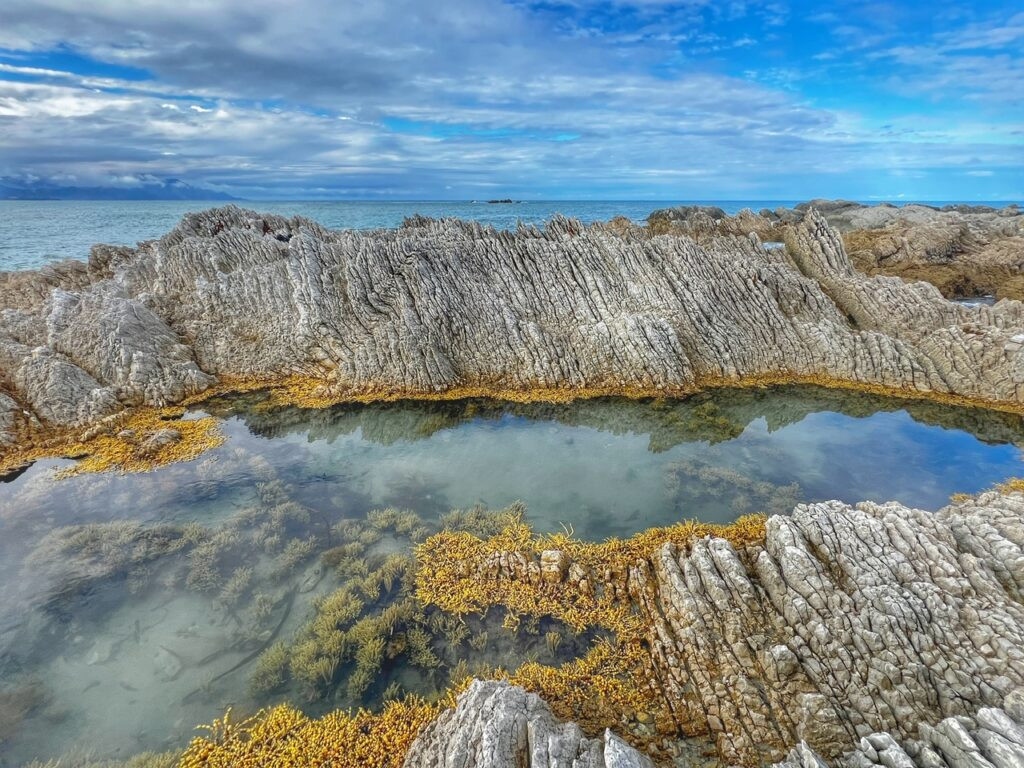
And, fringed with the rocky ring, it set the scene beautifully.
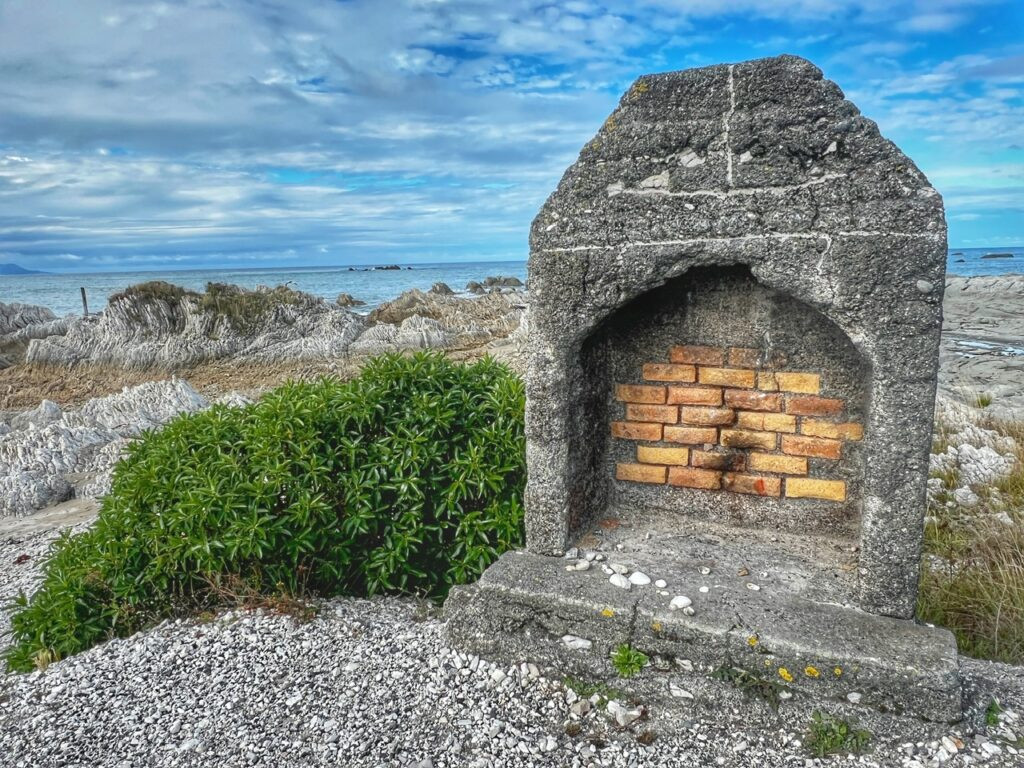
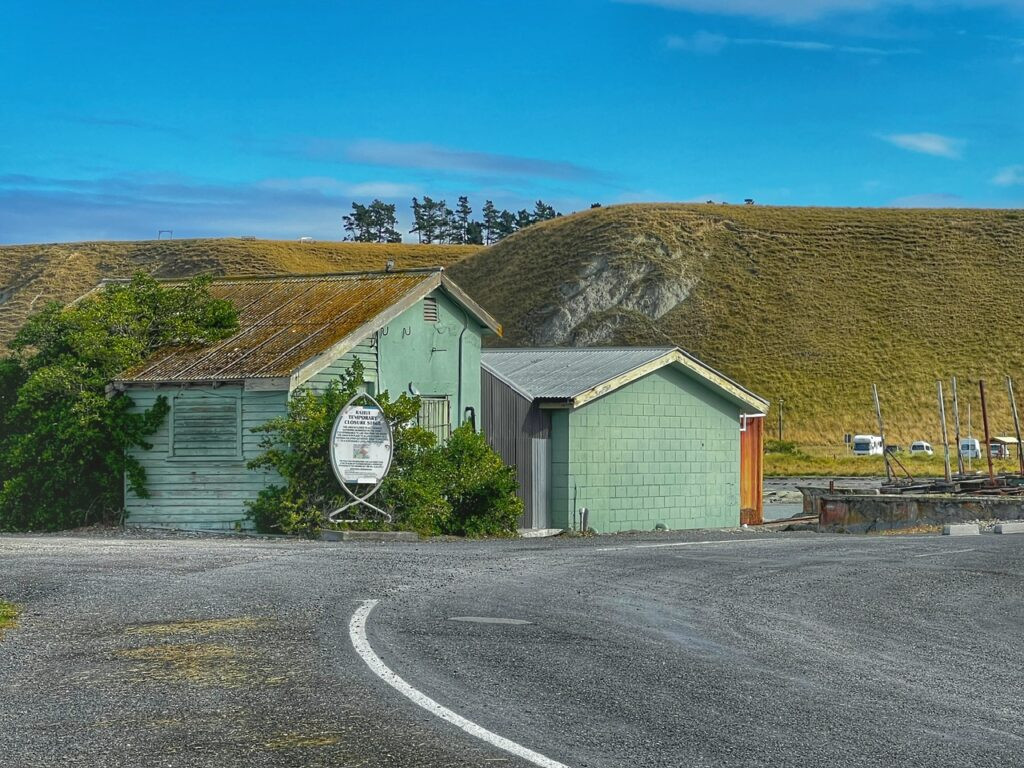

The only thing that’s on the map is the “Historic Chimney,” which is a notable remnant of the town’s rich past. It’s the last vestige of a 19th-century hotel that once served travellers and locals alike during Kaikoura’s hospitality heyday.
Nearby, one of the 1840s historic buildings that survived was once used as a whaling station. Other than this, the town of Kaikoura is known for boutique wineries, cheese, and lobster, which you can buy from roadside food carts.
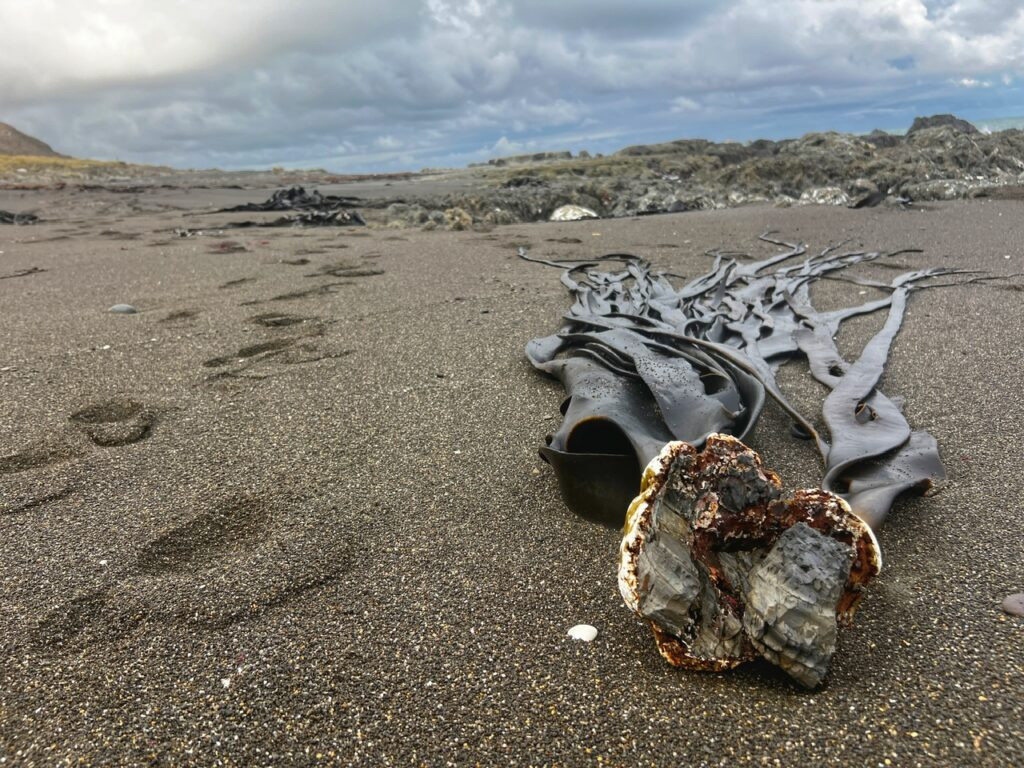
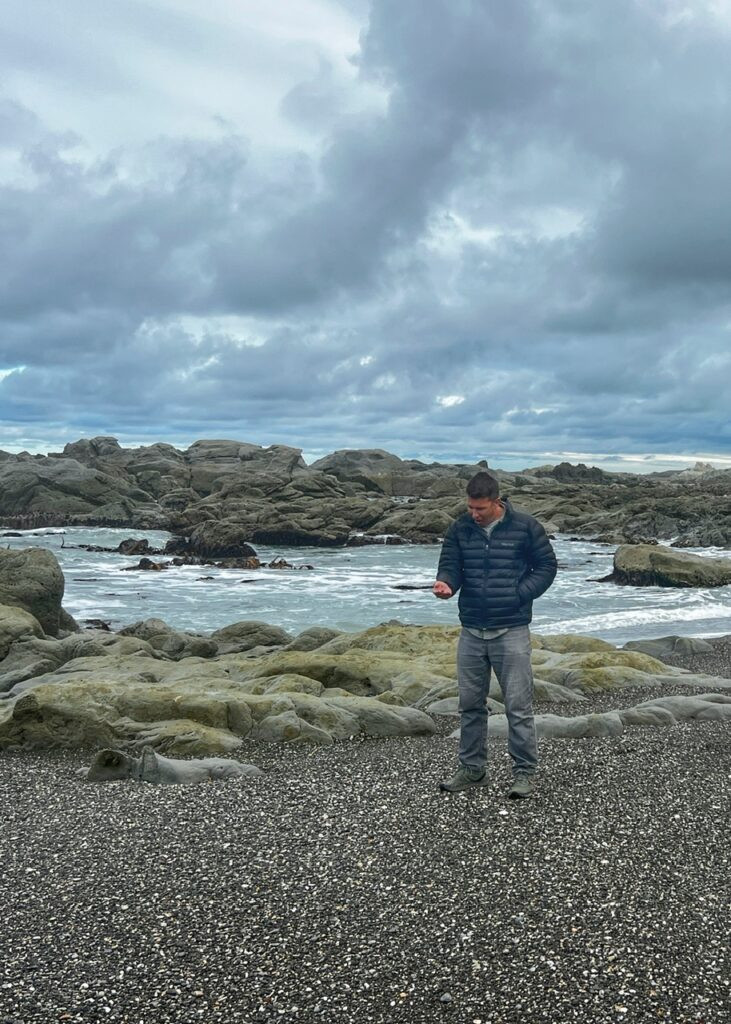
Moving on, we found ourselves at the Ward Beach Boulders, where we found some more unique seaweed…this time far more “classic” looking as it lay slaughtered by the waves on the beach. Greg searching for goodies….
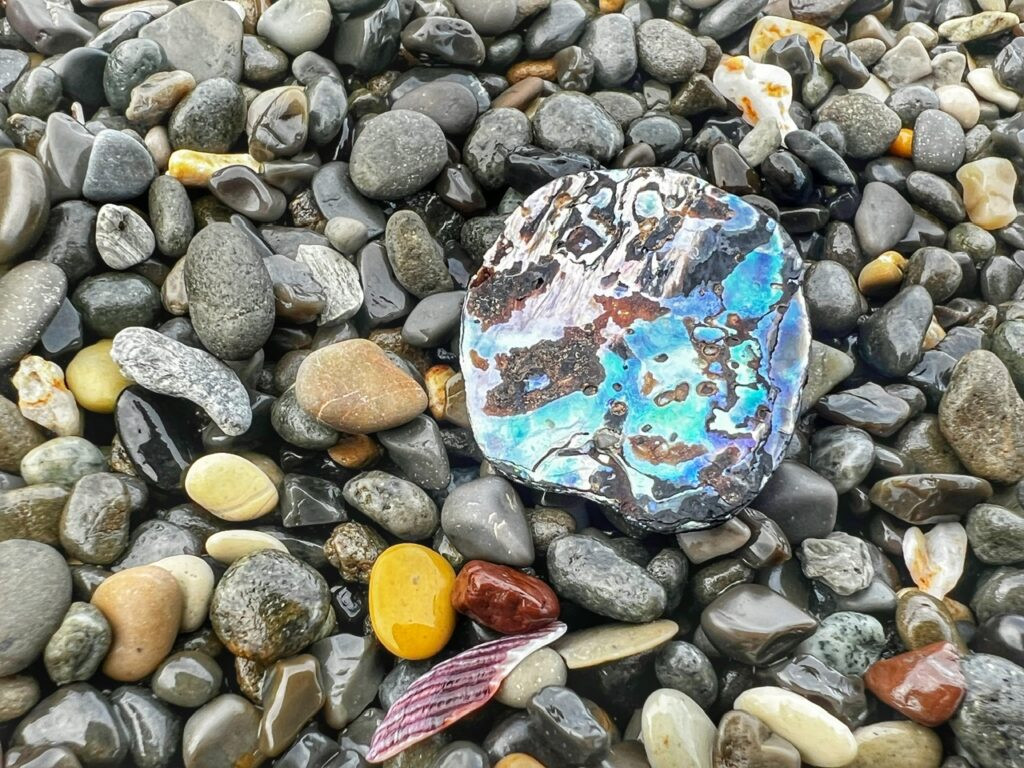
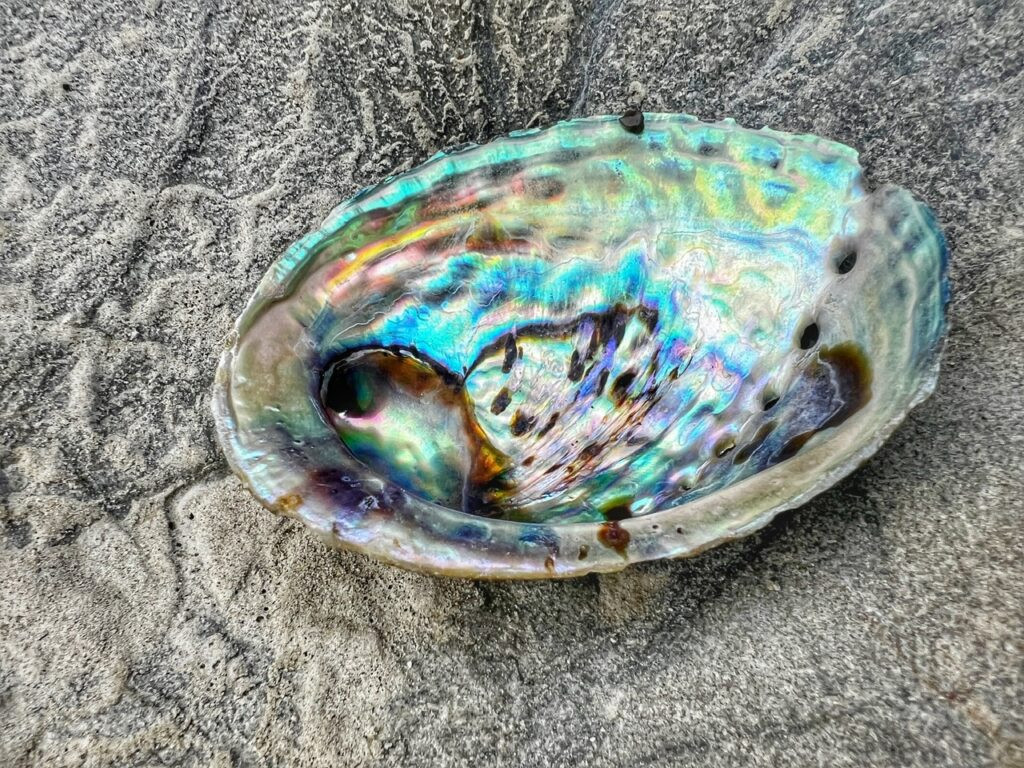
…which didn’t take long to find! In fact, there were plentiful iridescent paua shells, which come from the New Zealand abalone. These creatures are native to NZ and highly prized for their meat and their stunning abodes. They are important in Maori culture, often used in jewellery, carvings and art. We were definitely tempted to bring one along with us, but that would, of course, not be right.
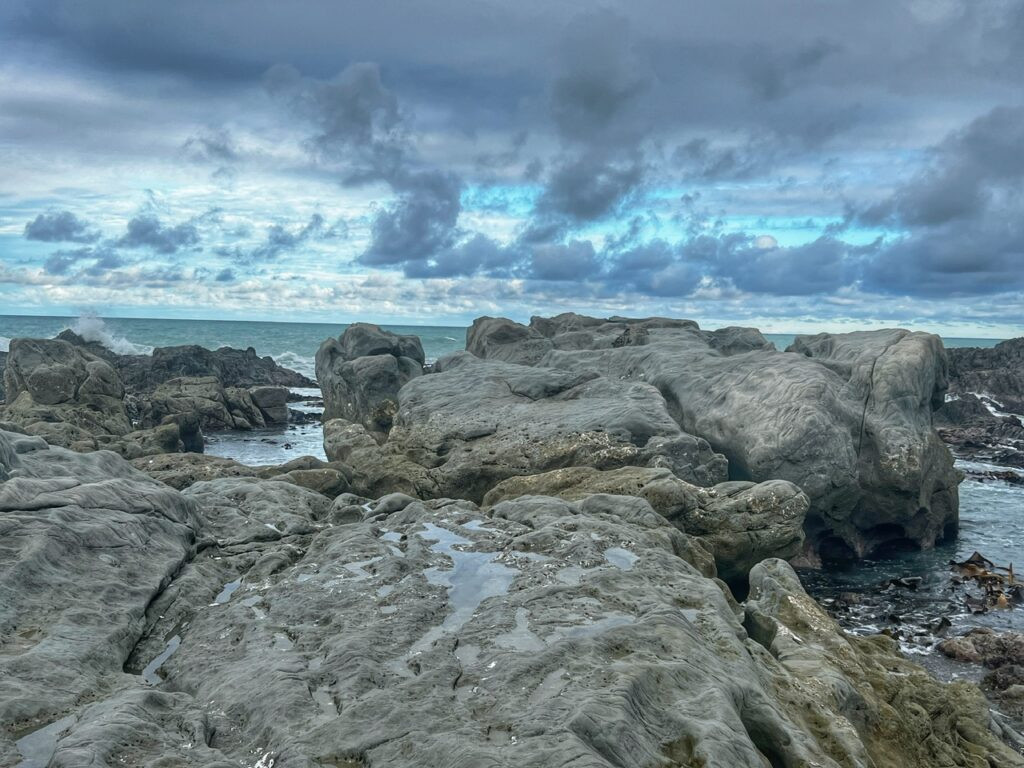
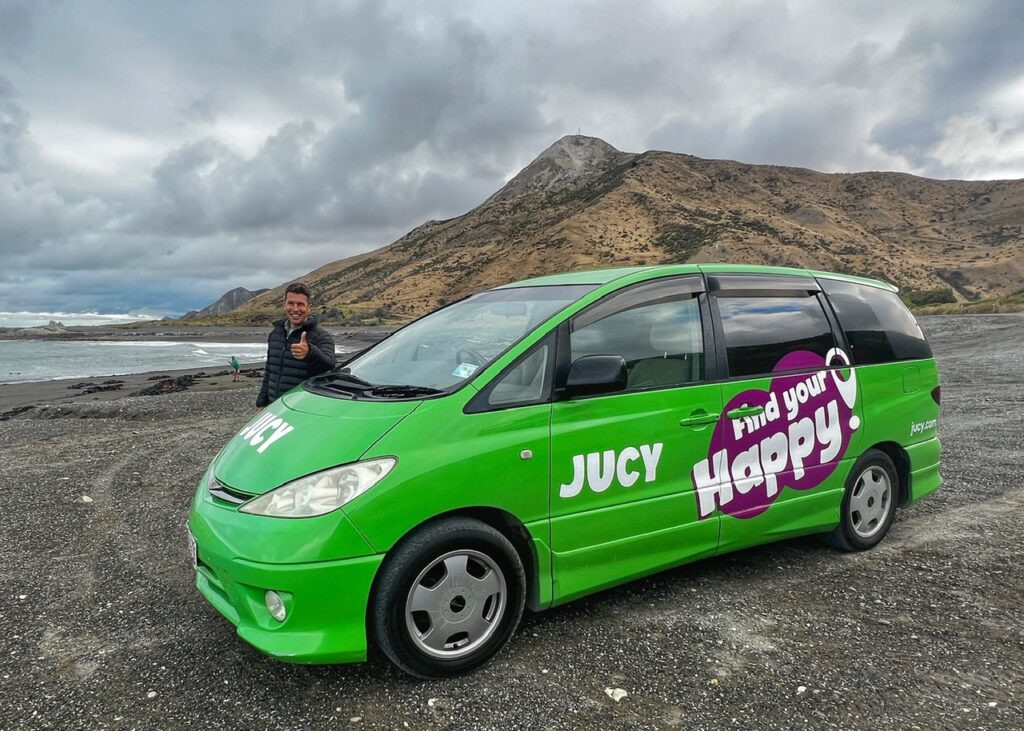
Scrambling amongst the beach boulders to find them was a very worthwhile half hour though. Our Jucy near the Boulder Beach.
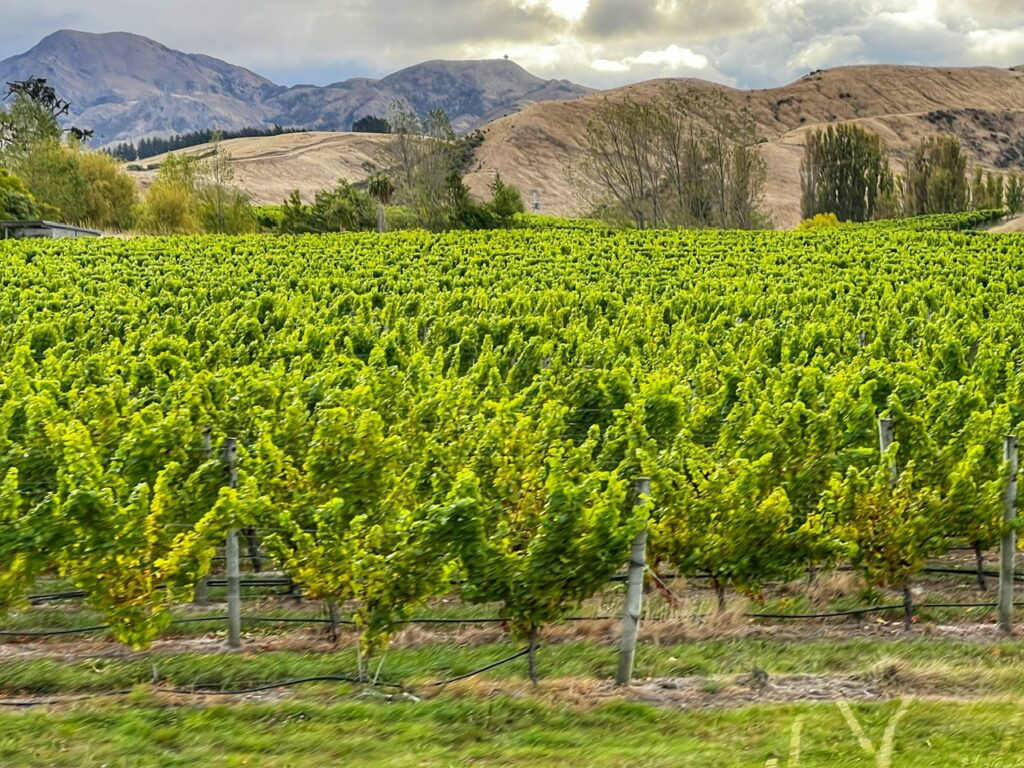
This area is also popular for vineyards as we witnessed rows and rows of wine grapes.
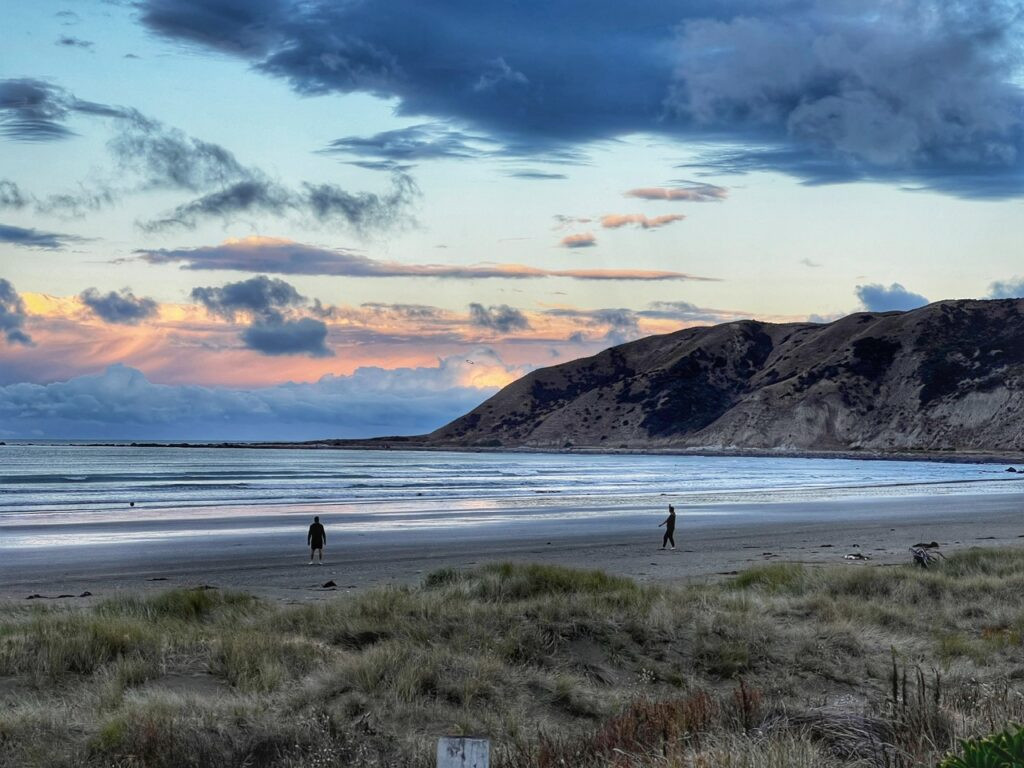
Finally, we made it to our spot at Marfells Beach Campsite, for $11/night and one of the best.
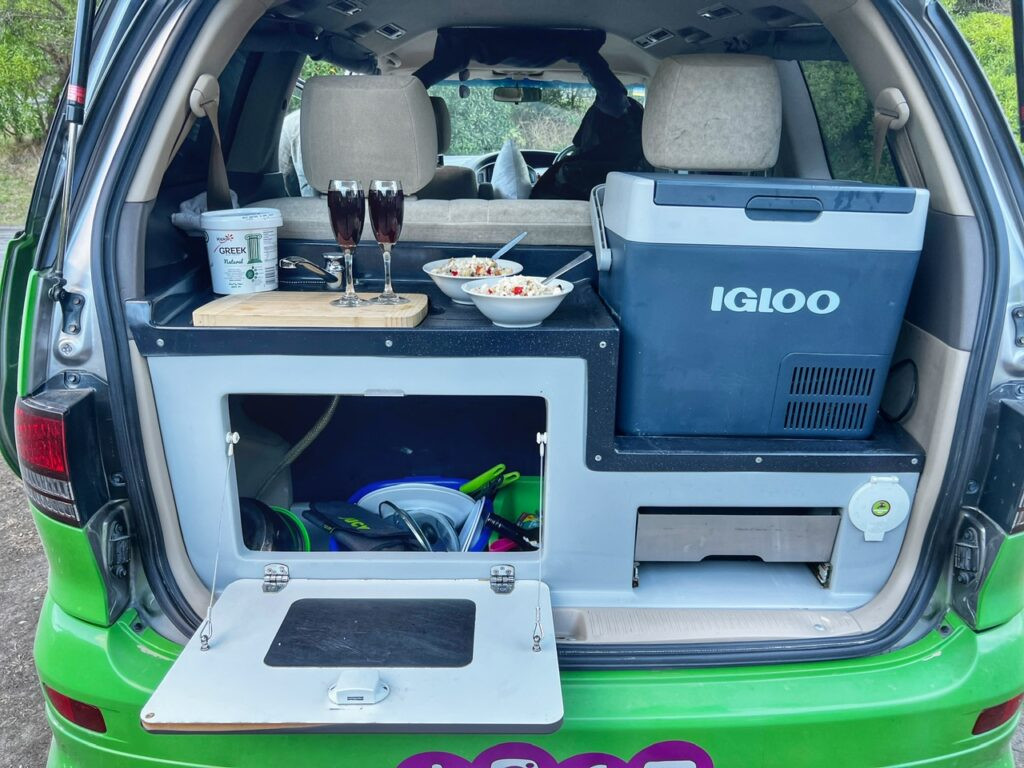
Here we got to test out our camper van kitchen, a brilliant use of space wedged into the back door of the van. It included an igloo cooler so we finally got to have refrigeration, a propane stove, cooking utensils, and a small hand-pump sink.
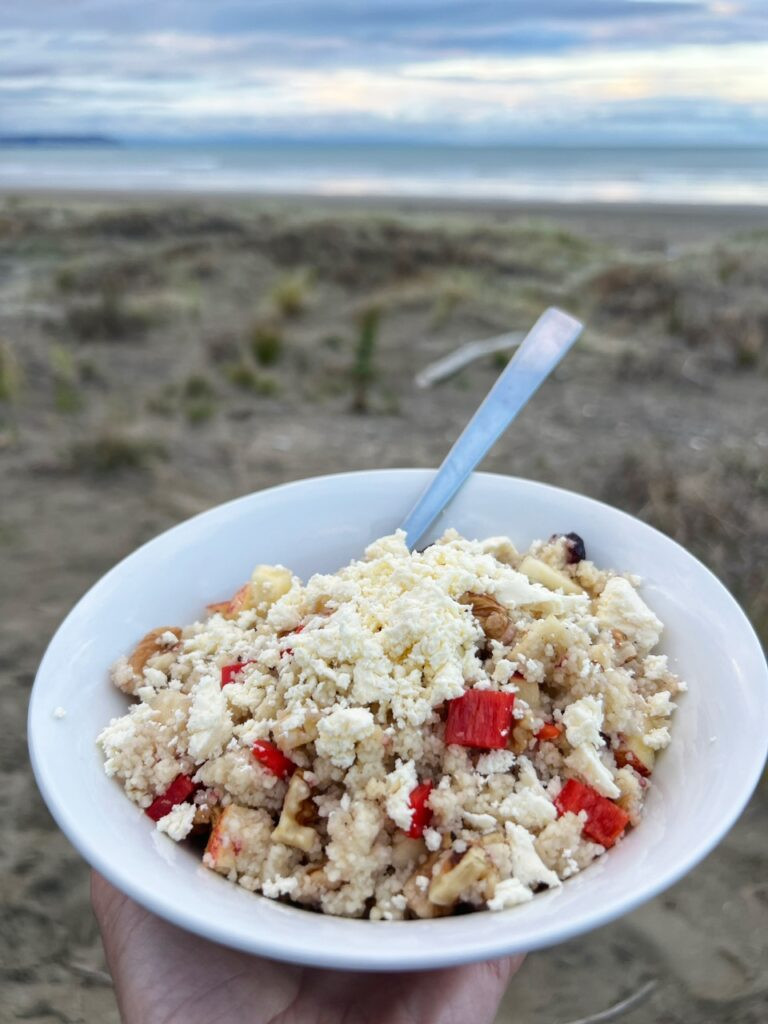
The meal Mandy whipped up for the evening was couscous, walnuts, red peppers, cranberries, feta cheese, olive oil and lemon. Of course, we enjoyed it on the beach.
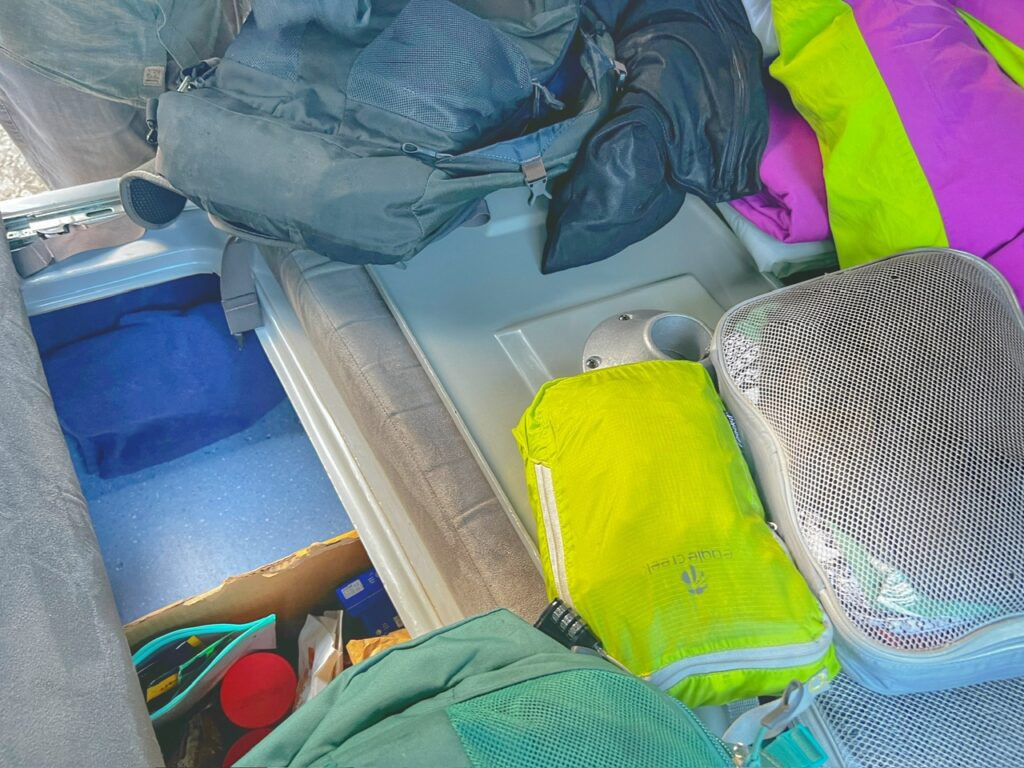
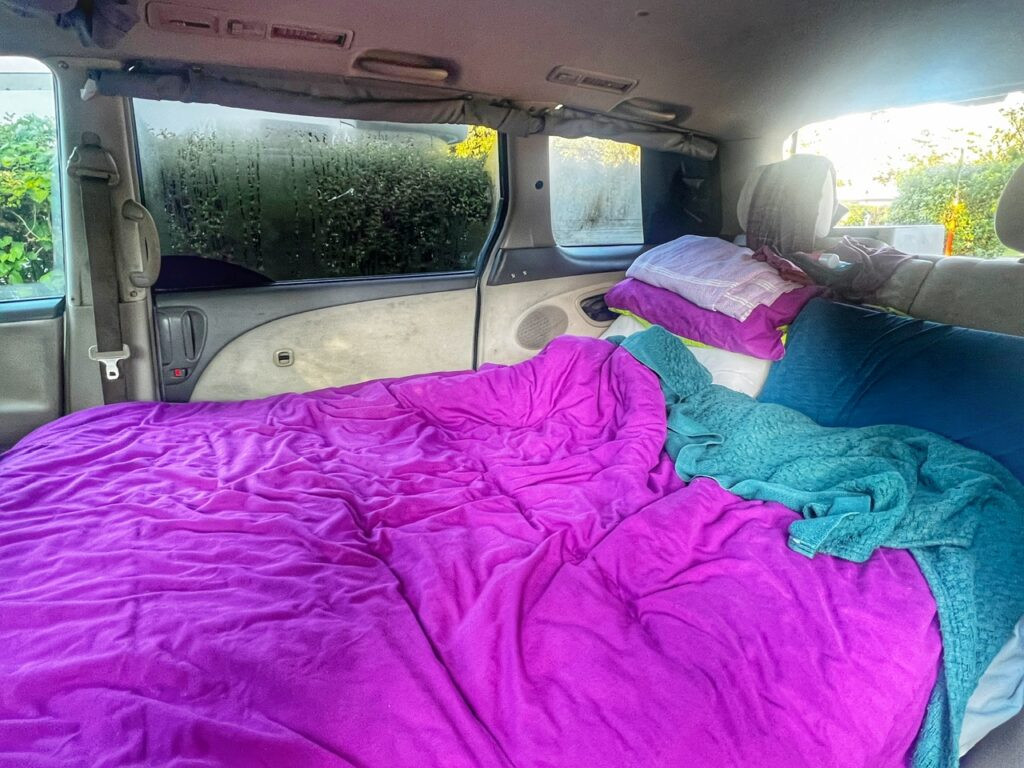
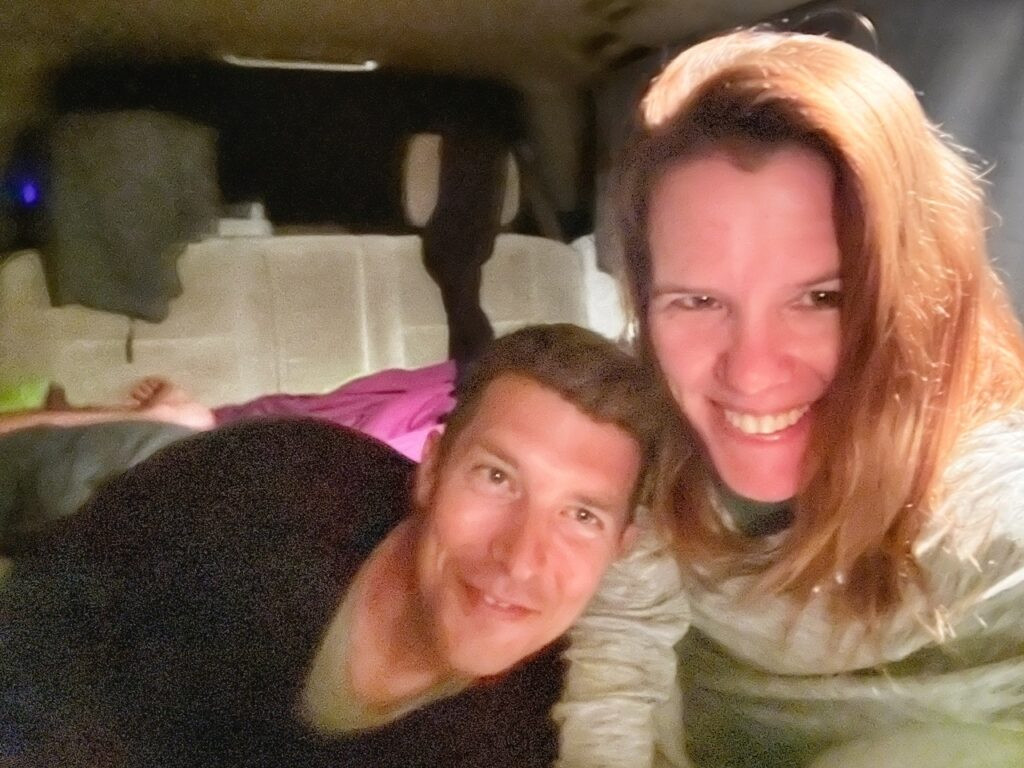
Back inside the van, you can see how the benches converted into storage space for all our crap, and then folded down into a reasonably comfortable and warm bed. For us, this was five star!!
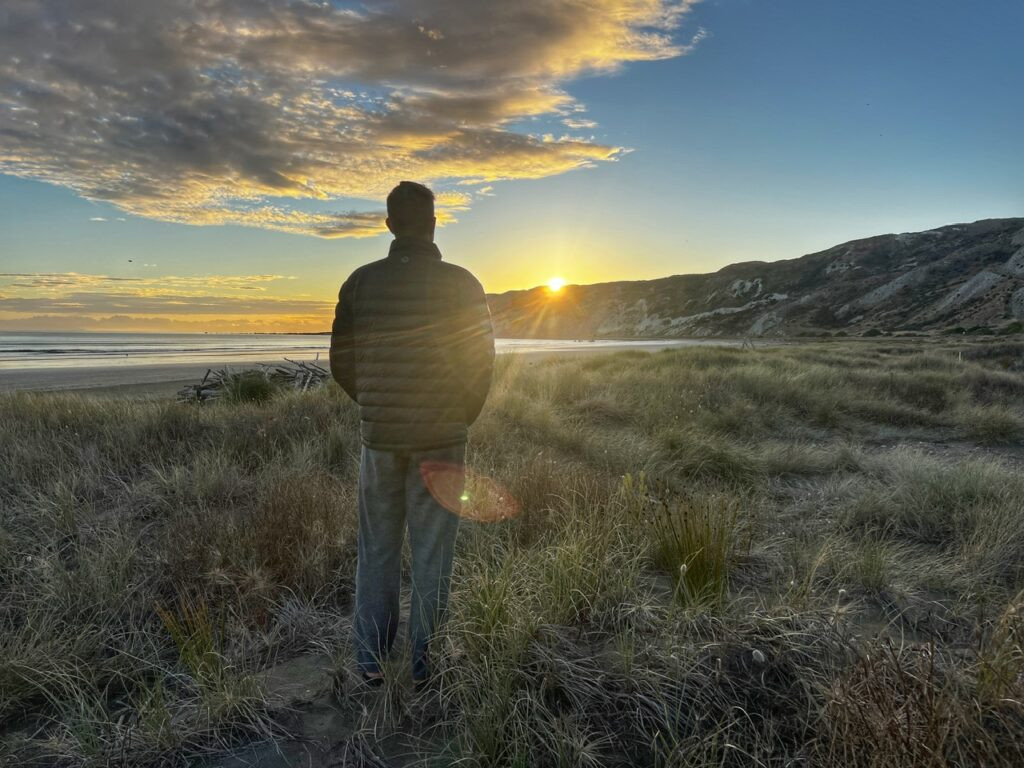
Greg enjoying the sunrise the following morning.
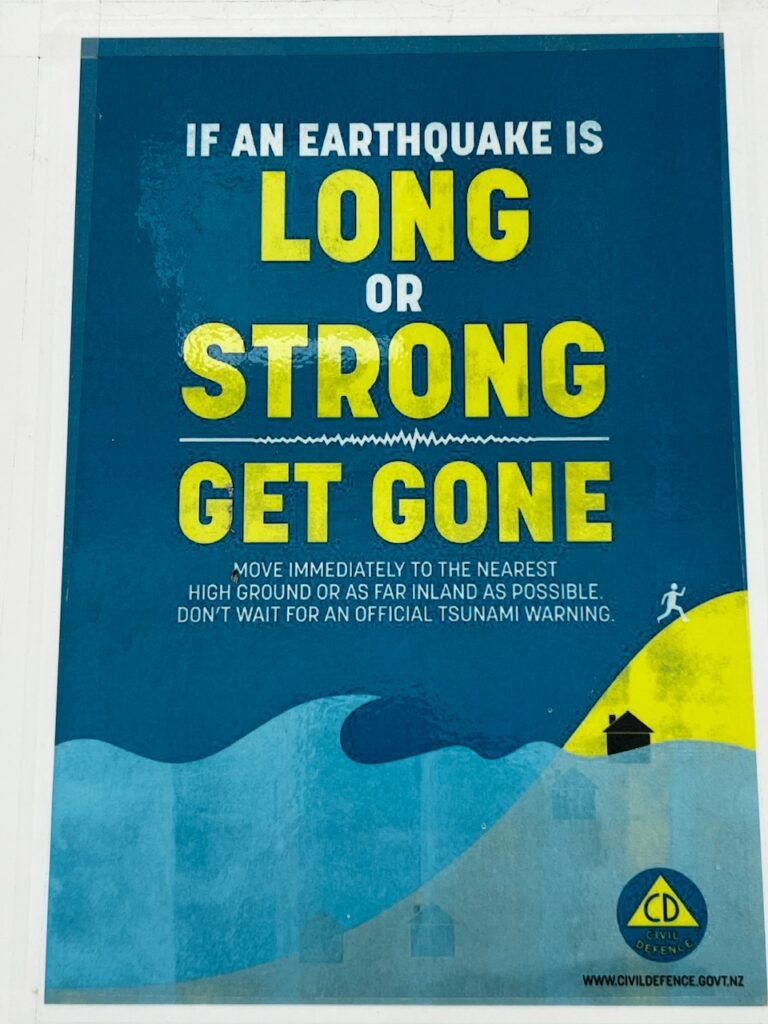
And fortunately, we didn’t need to heed this warning, which was placed in the camp’s bathroom…just in case.
Day Two: Marfells Beach to Wellington (1 hour driving, 4 hour ferry)
On day two of our camper van roadie we had a lot of time to slow down as we waited for our 7 p.m. departure on the astronomically expensive, but partially paid for ferry that would whisk us across the Cook Strait from the South to North Island of the country. But we soon realized, we unshockingly could have spent a lot more time in this area.
What we did get to experience was a NZ Salt Mine, a heritage park which meticulously crafted a replica of an early NZ town, a bustling farmer’s market, a charcuterie board lunch overlooking a spectacular bay, and Picton, a seaside port and marina which serves as the base for ferries crossing between the two islands.
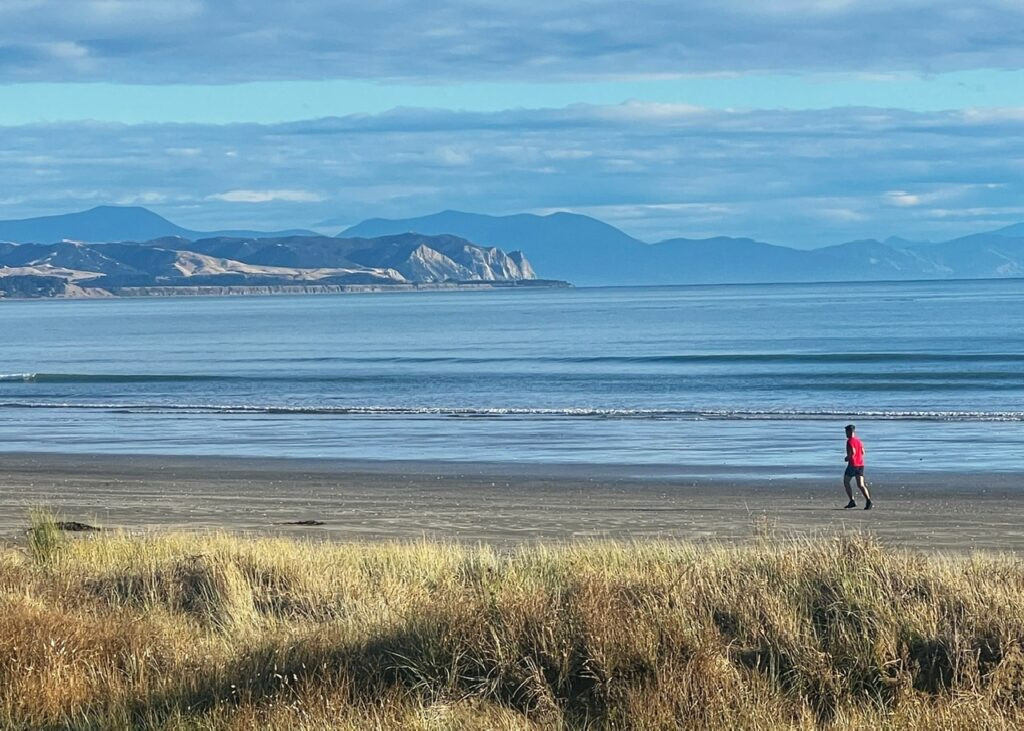
It was hard to leave our campsite at Marfells Beach, which was probably our favorite of the trip. Greg made sure to fit in a run before we did so.
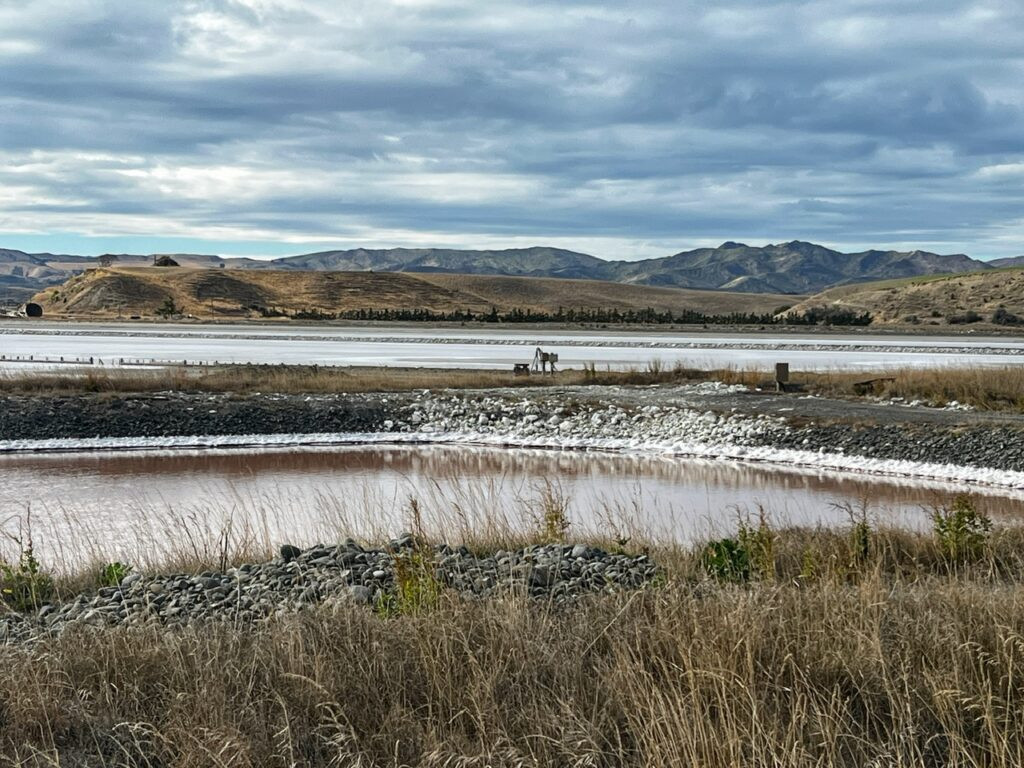
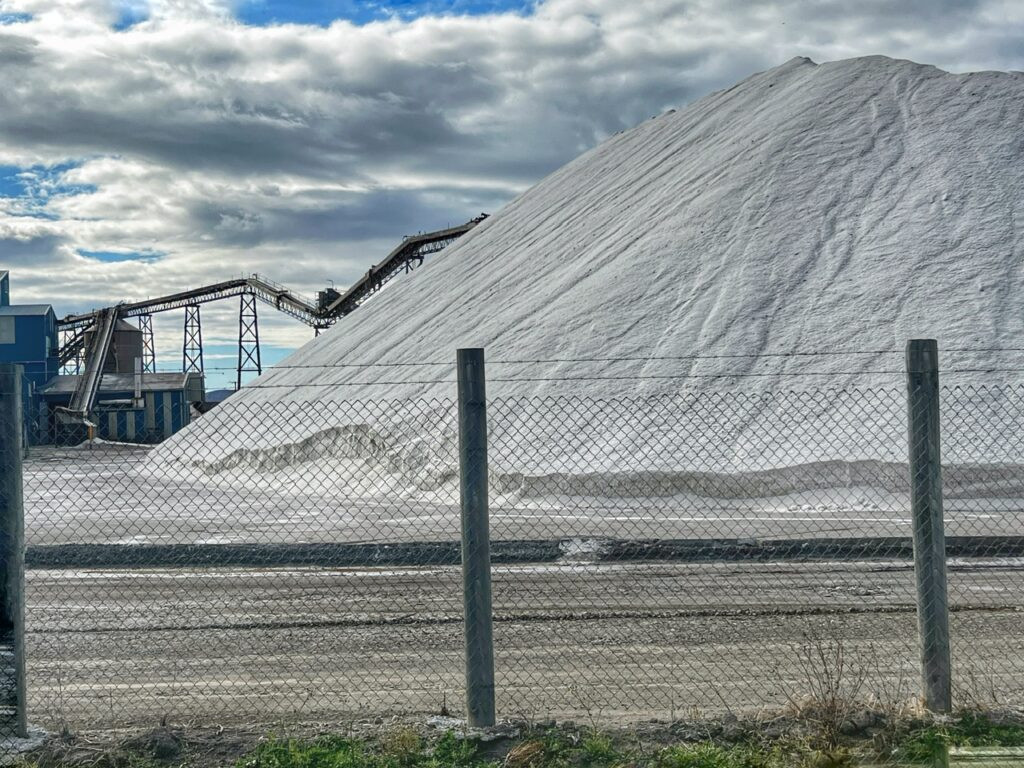
On the way out, we stopped at (FREE!) “Saltworks” which is a nearby salt mine which loves to tease Instagrammers with the possibility of witnessing brilliant pink salt flats. Without a good dose of photo shop, this is a complete fallacy, but if you bobble your head from side to side, perhaps you’ll see the slightly rosy hue. Regardless, it was interesting to see the mountain of salt which is being mined from the nearby waters.
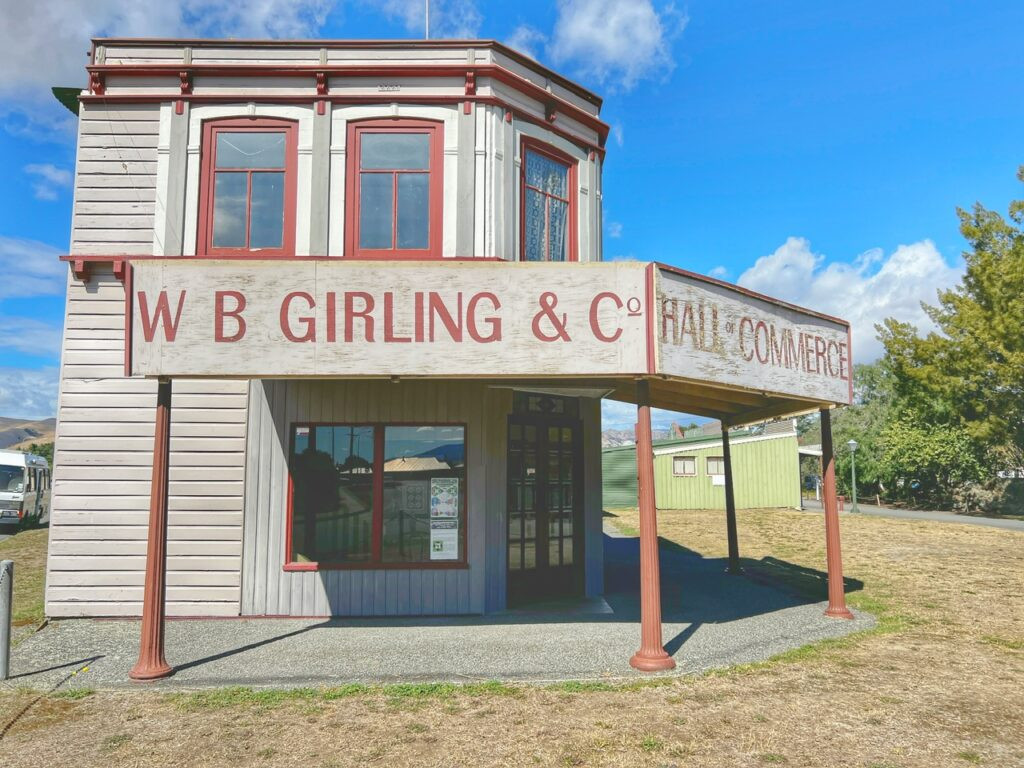
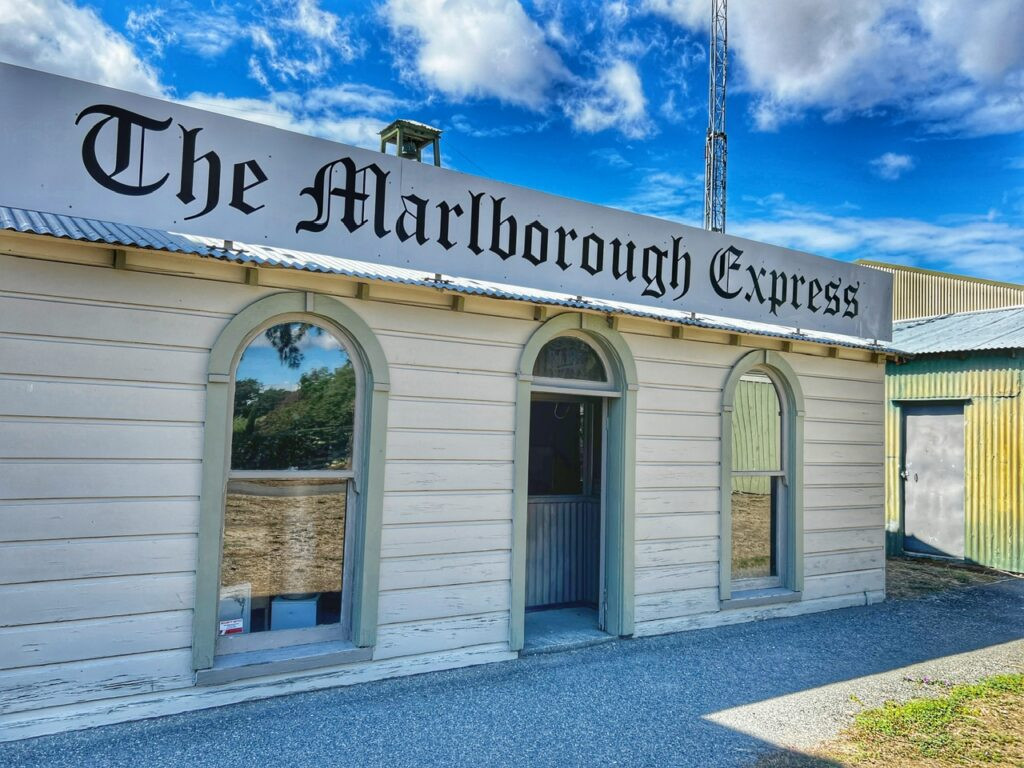
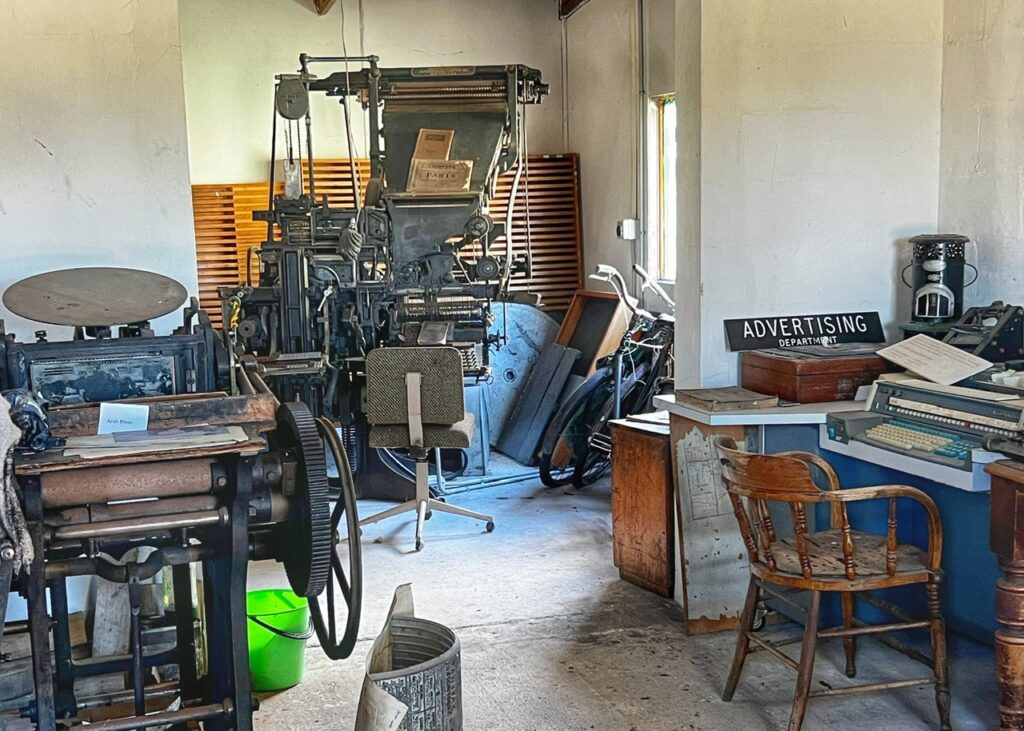
Next, we drove to the town of Blenheim, which is home to Brayshaw Heritage Park, a (FREE!) vibrant and cultural site named after historian Norman Brayshaw which serves as a hub for preserving and showcasing the regions’s rich history. It offers visitors the fascinating and immersive experience of pioneer life in NZ and feels a lot like similar sites in the Old West of the USA.
The Marlborough Express newspaper office, fully equipped with printing presses, early type-setters, and even an advertising desk. Surely the kind of place Mandy would have been found with the pencil behind her ear 150 years ago.
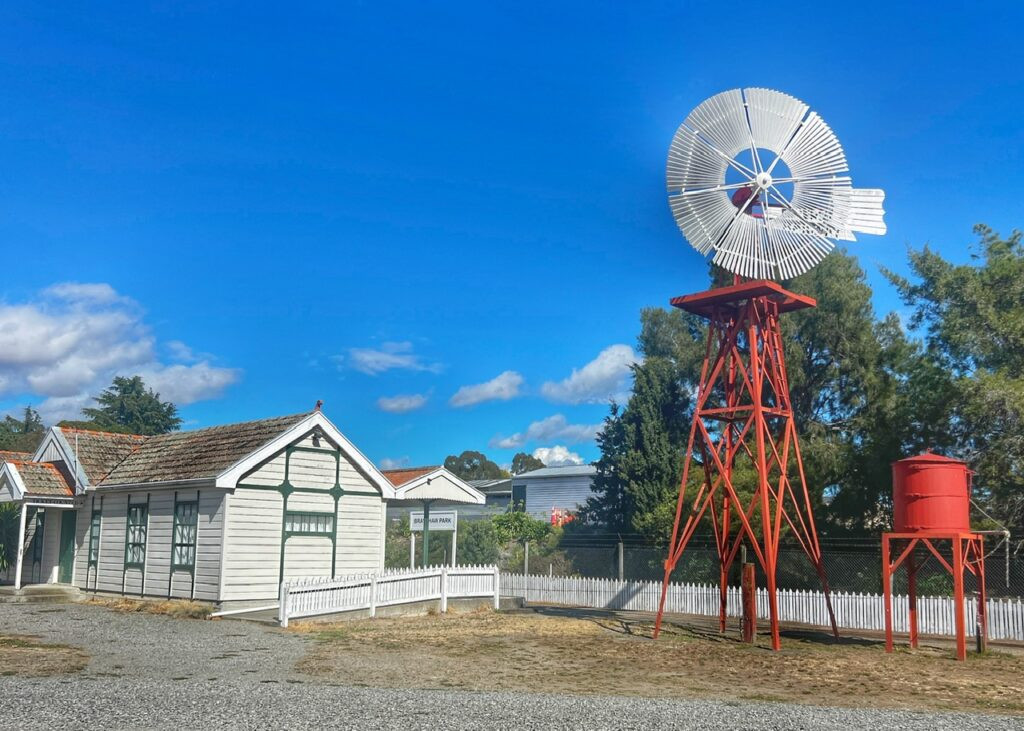
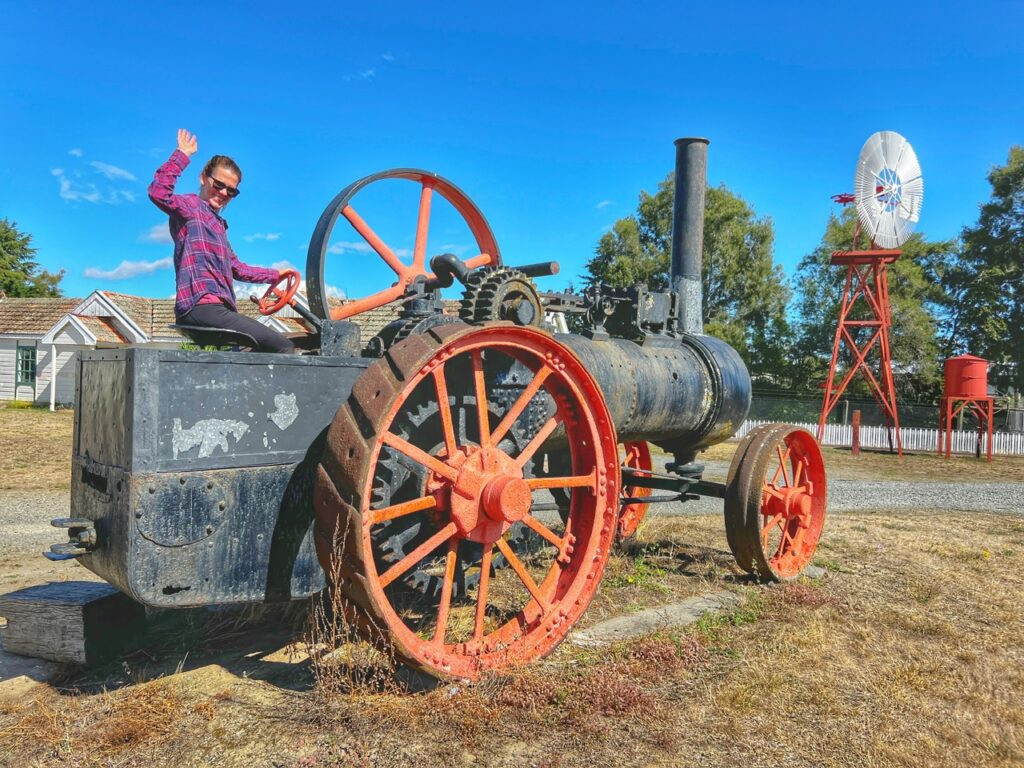
The little town was well crafted and interactive, including multiple cheesy photo props.
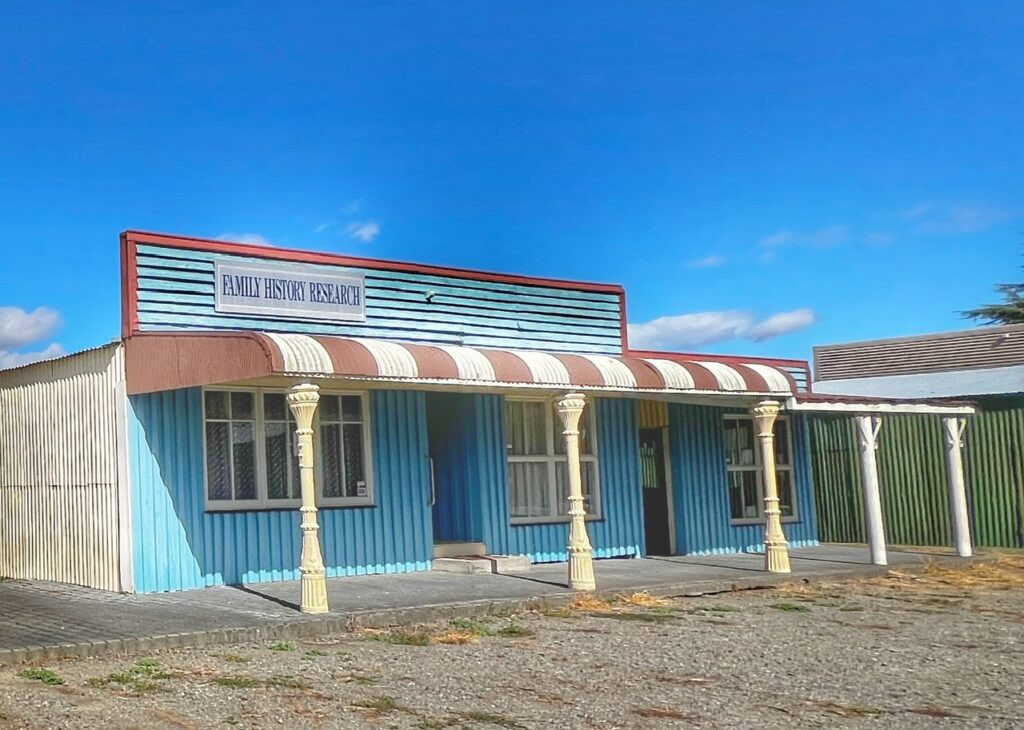
It even hosted a genealogy library…
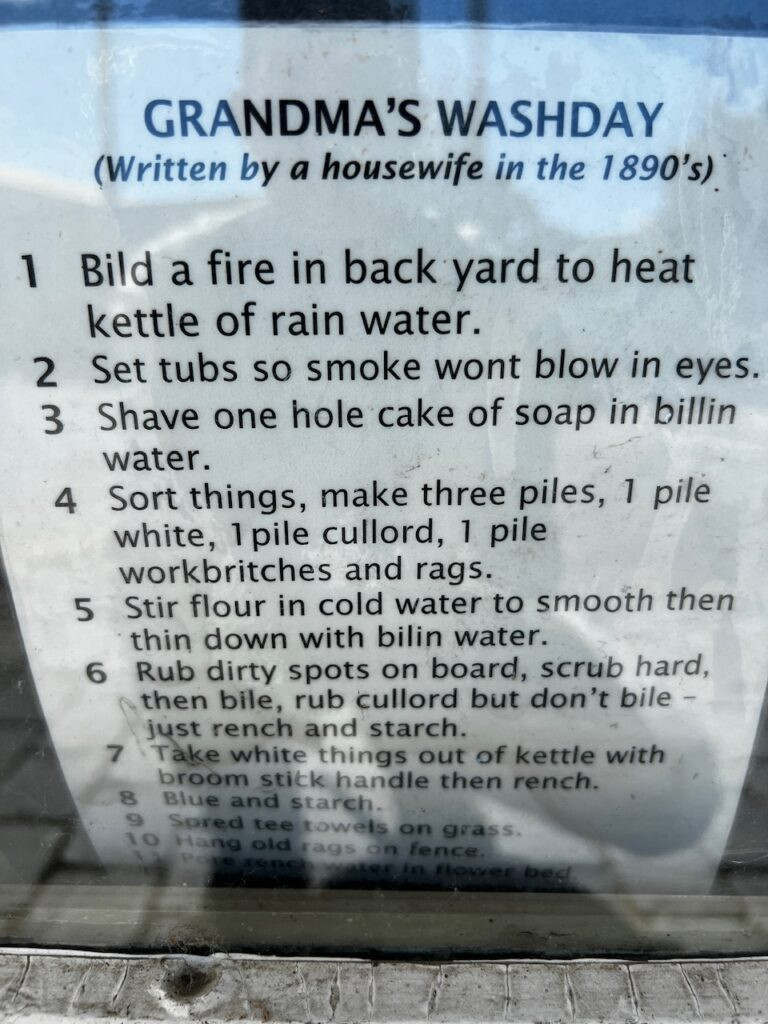
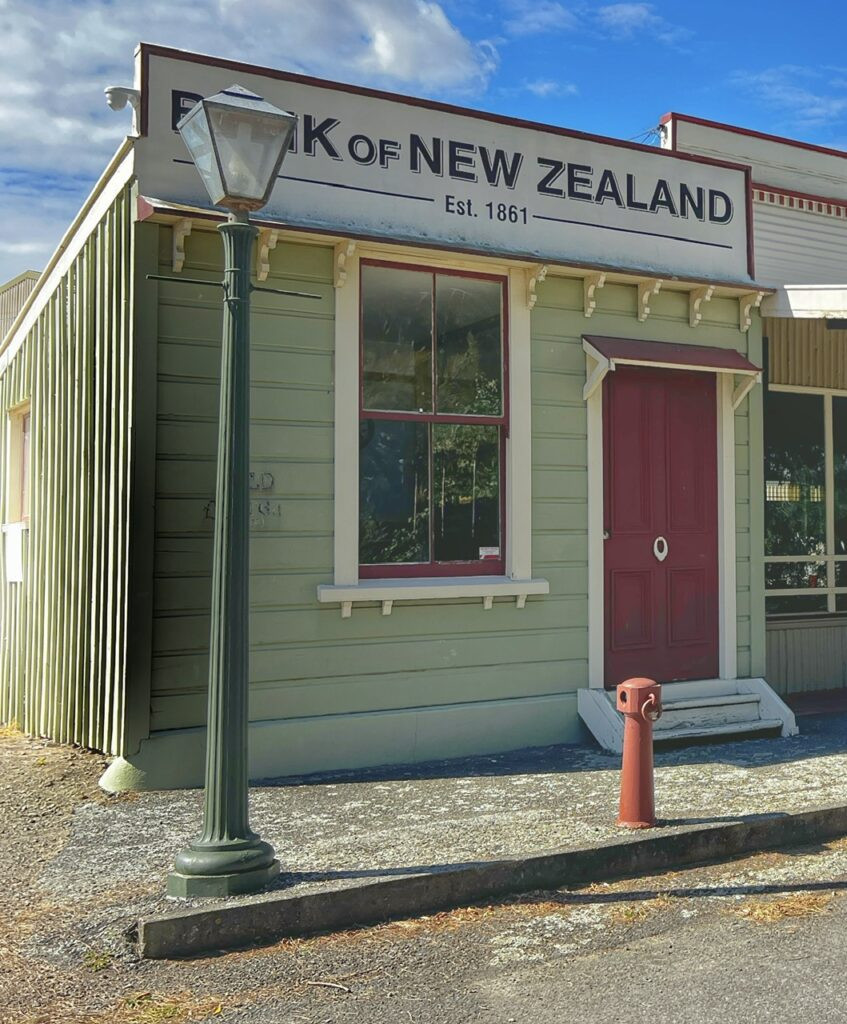
…and a historic laundry, where a Kiwi grandmother documented her washday instructions during the 1890s. Funnily, she sounded a lot like Mamie on “Gone with the Wind”—straight out of the Deep South. Wonder if the bank has any sign up bonuses?!
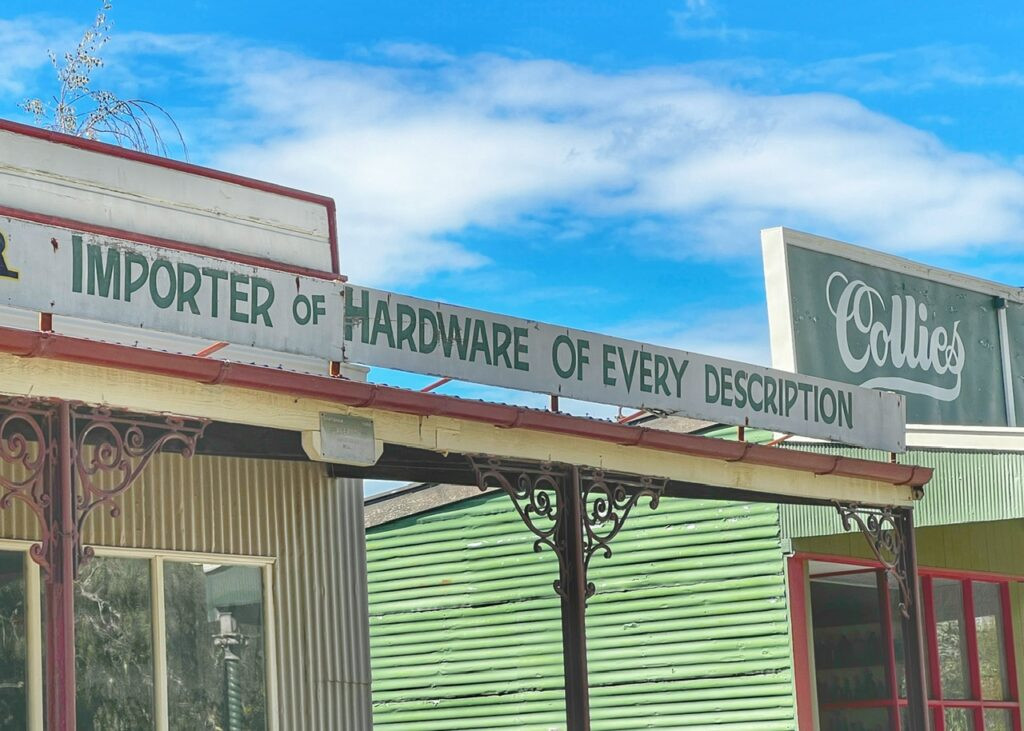
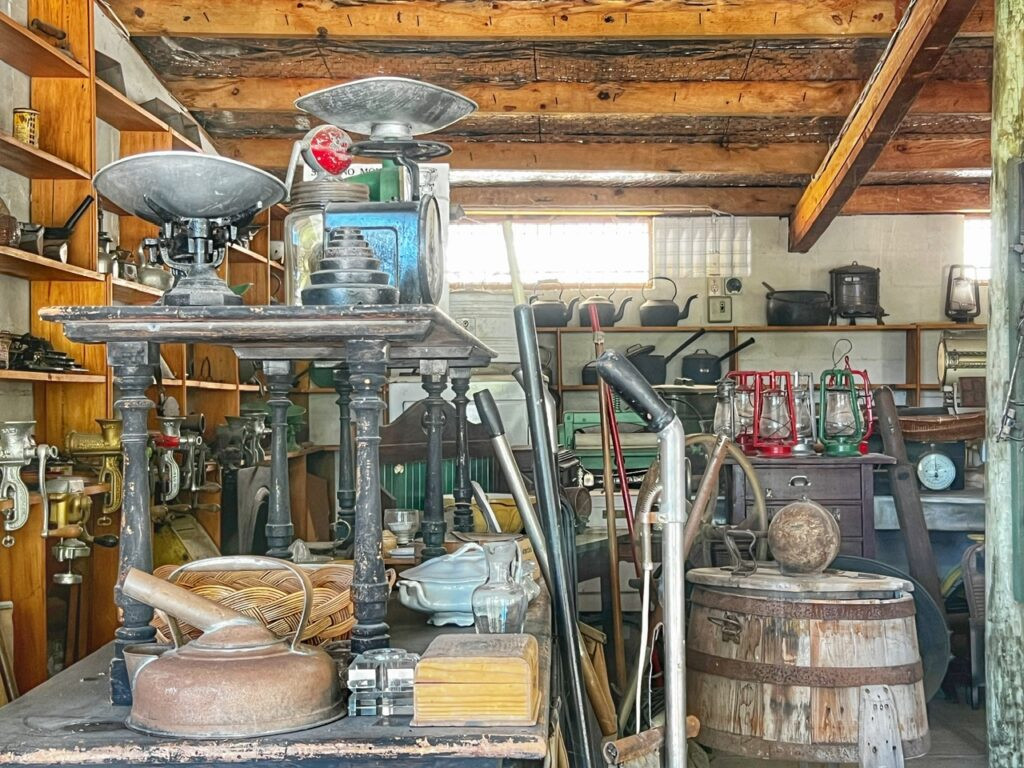
The general store where you were assured to find “Hardware of Every Description.” Looks more like a garage sale.
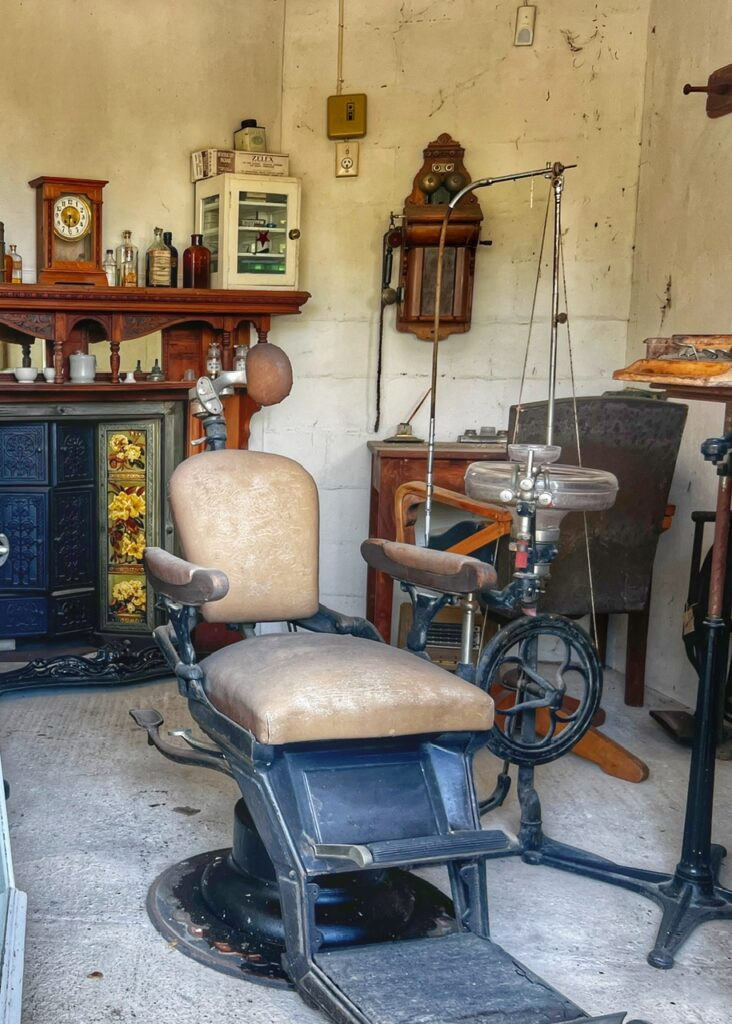
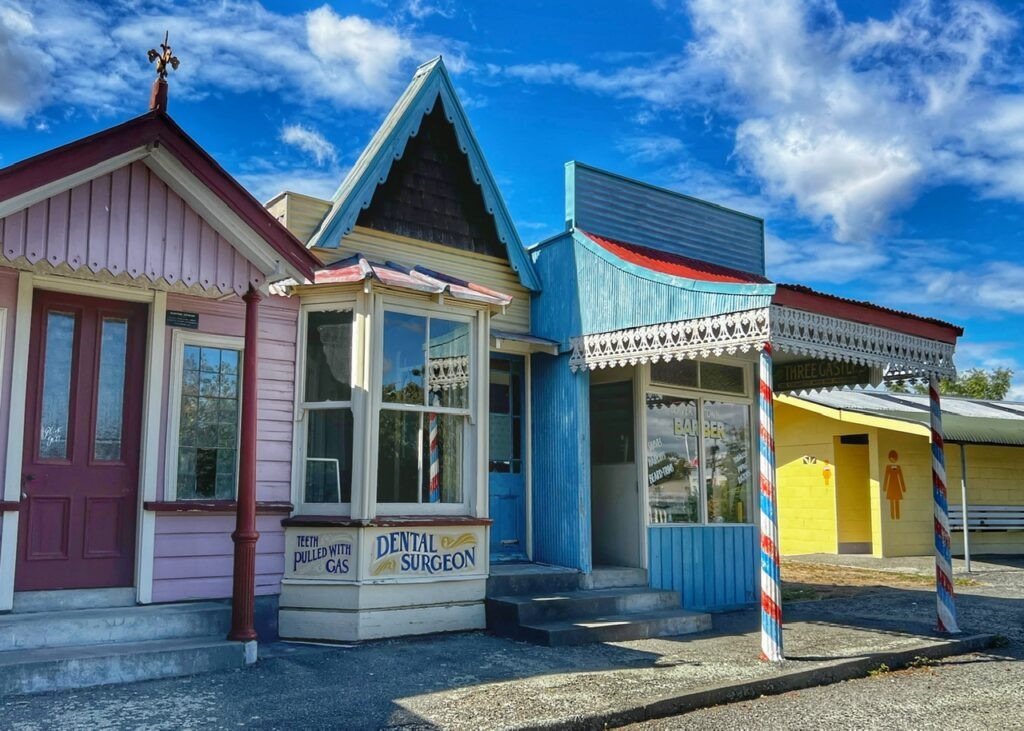
Ugh. Now that’s a chair we don’t think we would have enjoyed climbing in circa 1890. But the good news is…they pulled teeth with GAS!!! Is that historically accurate or is the timing a bit off? Regardless, the preservation of the town was incredibly endearing.

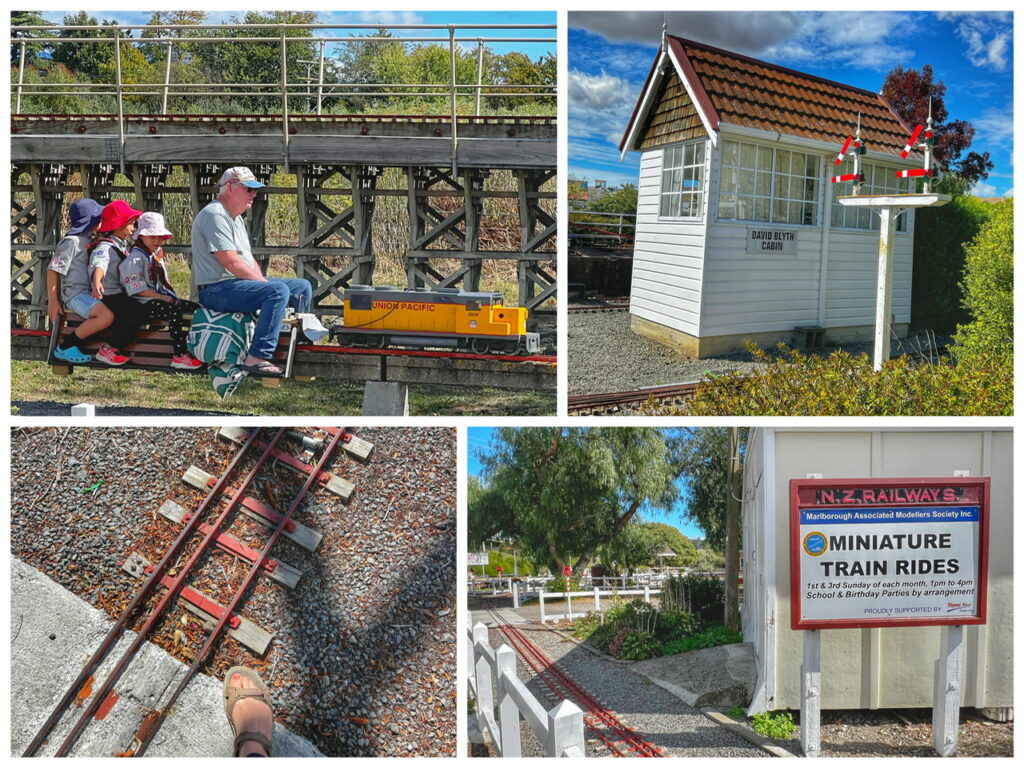
The train station, and the reason that most tourists seemed to flock to the park was for the Blenheim Miniature Train Rides. Here, an overgrown senior citizen offered rides to young scouts and giggling Asians on his two-foot gauge mini railroad.
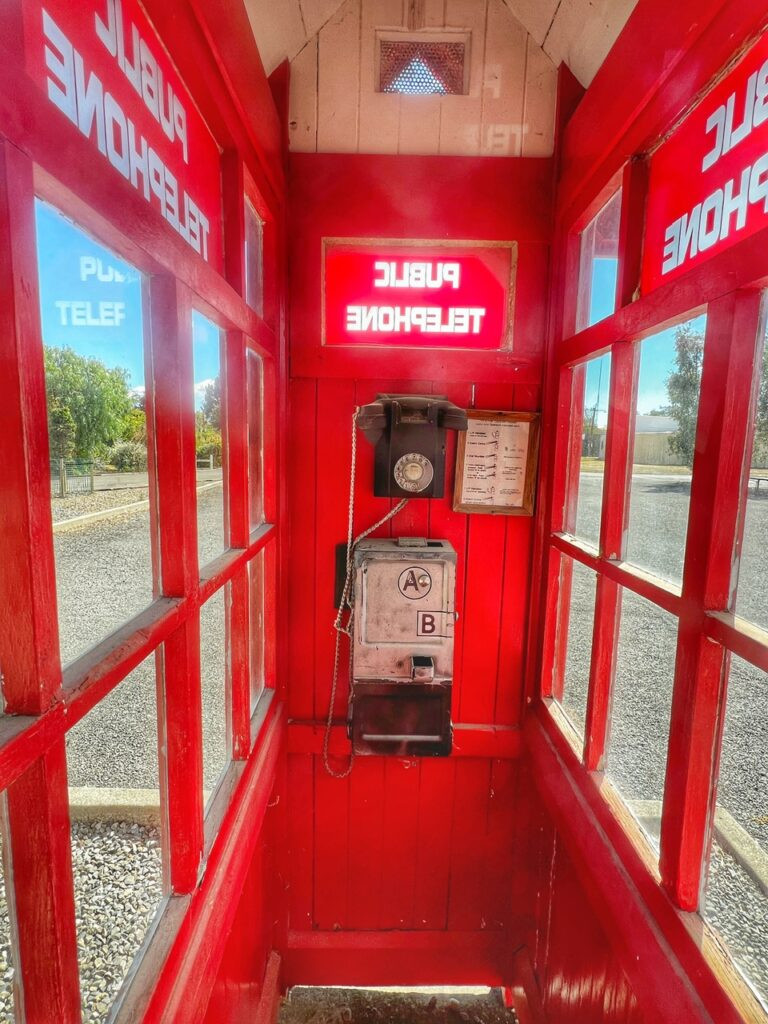
Hmmm….not sure how this contraption works.

Moving on, we conveniently stumbled upon the energetic Marlborough Farmer’s (Saturday) Market where a smily, tiara-crowned grandmother offered some really luscious-looking chocolate creations. We also saw peaches that were completely encompassed in yellow skin and spray-free cucumbers, which looked more like peppers to us. Unfortunately, we were already well stocked up in the food department so we mostly just observed the small town Kiwis enjoying their summer weekend with their families.

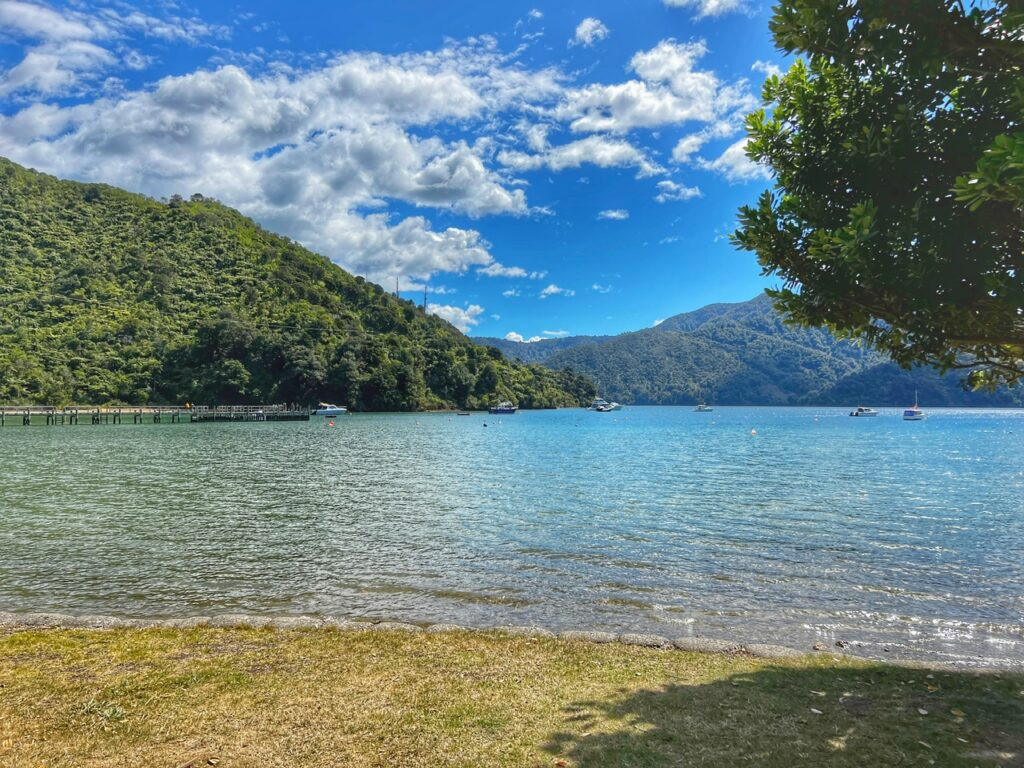
Speaking of that food department, we had a lot to indulge in ourselves, and thanks to our van kitchen we were able to make this happen, on the banks of Ngakuta Bay, which is part of the bigger Queen Charlotte Sound at the northern tip of the South Island.
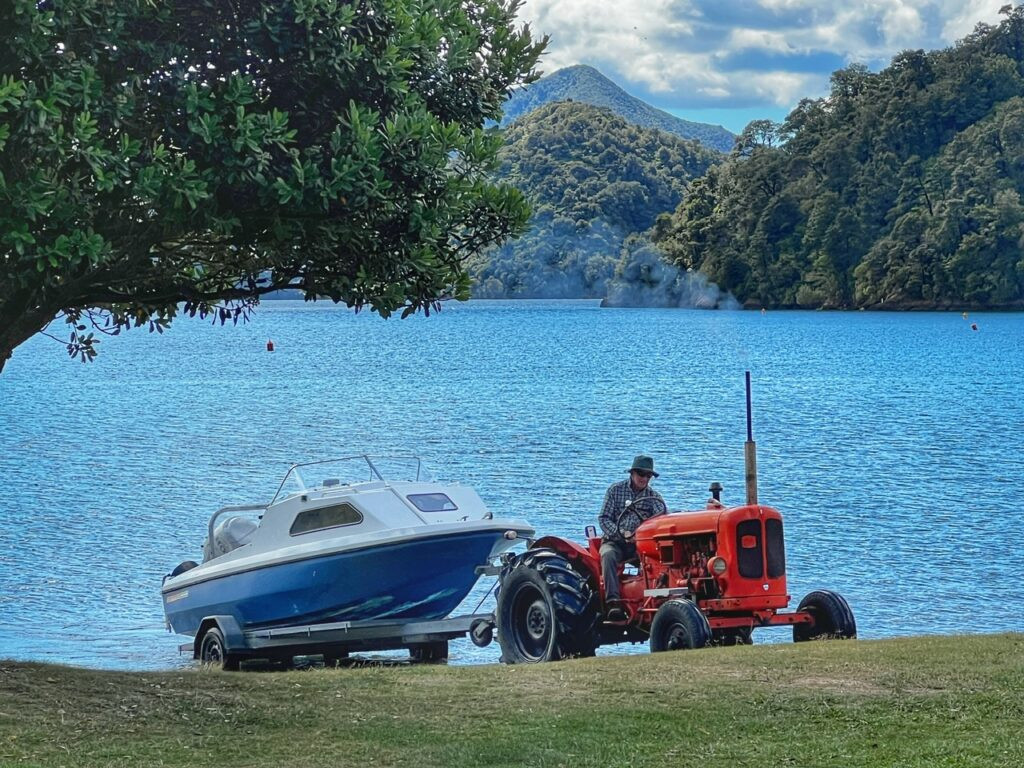
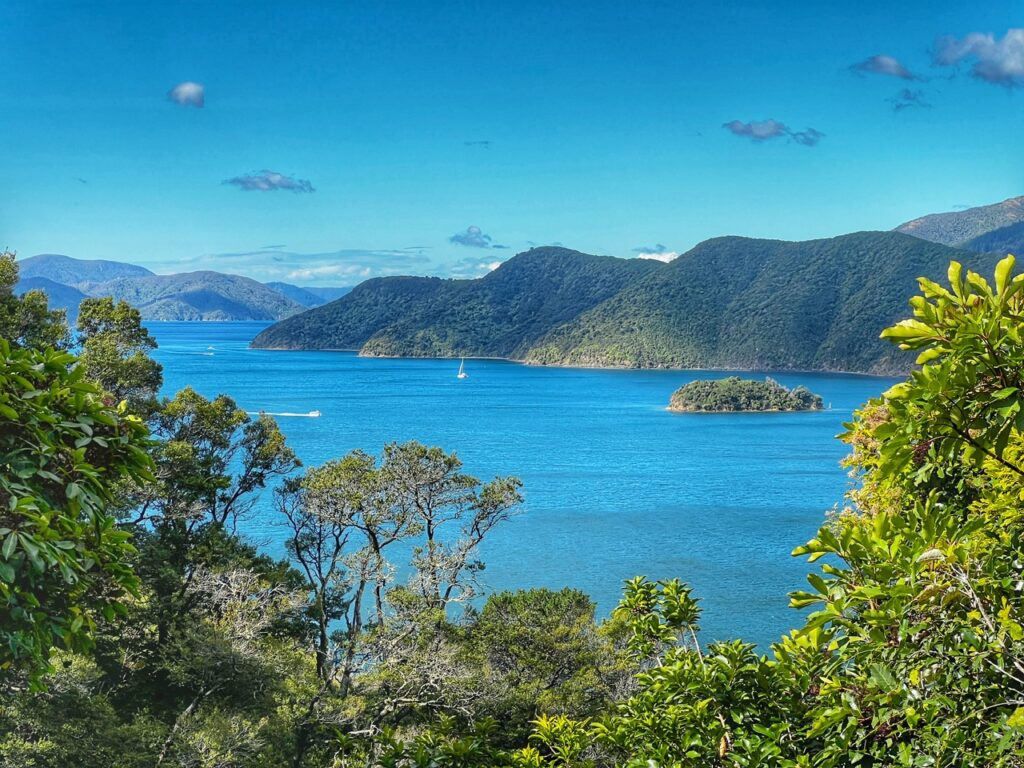
Well, that’s one way to get your boat out of the ravishing Queen Charlotte Sound…hmmm.
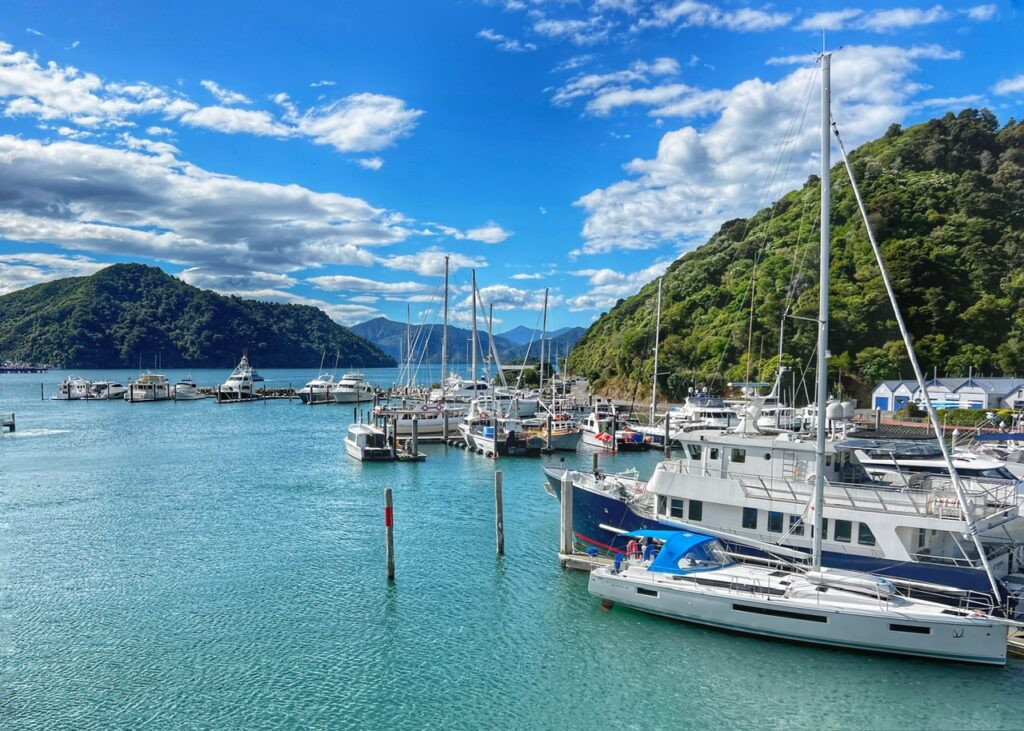
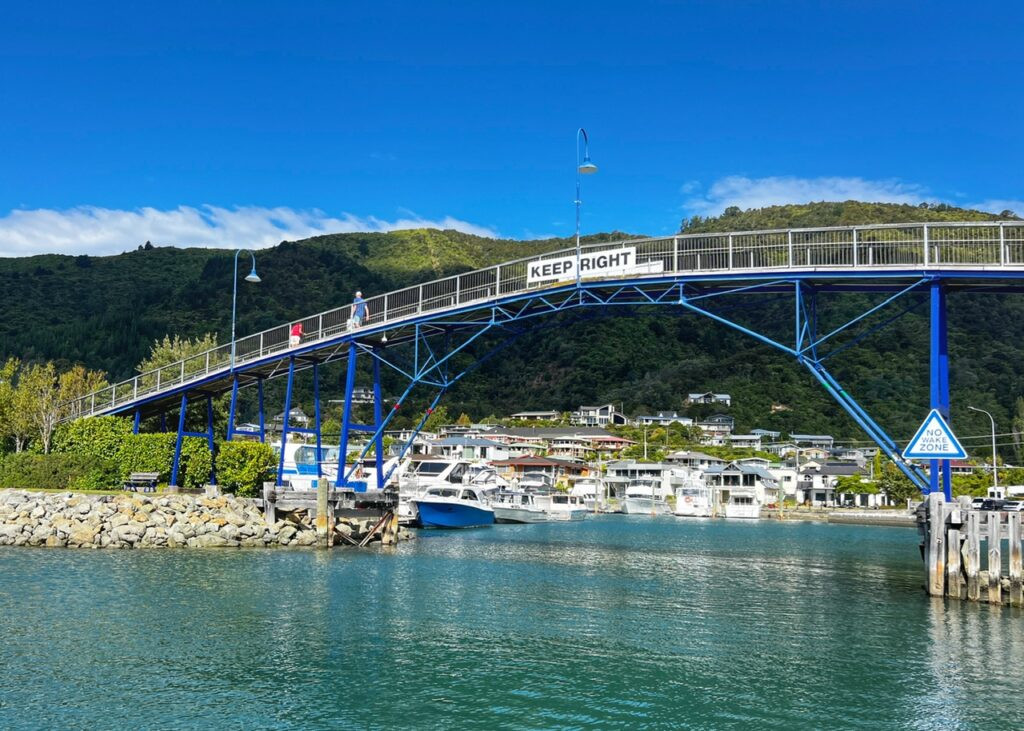
The marina at Picton, which is a vital transport hub of the South Island named after Sir Thomas Picton whose legacy has become controversial due to his involvement with the slave trade. A popular pedestrian route bridging the sides of the city. From this perch, a friend had discovered manta rays. Unfortunately, we didn’t, but pretty cool to know they exist here.
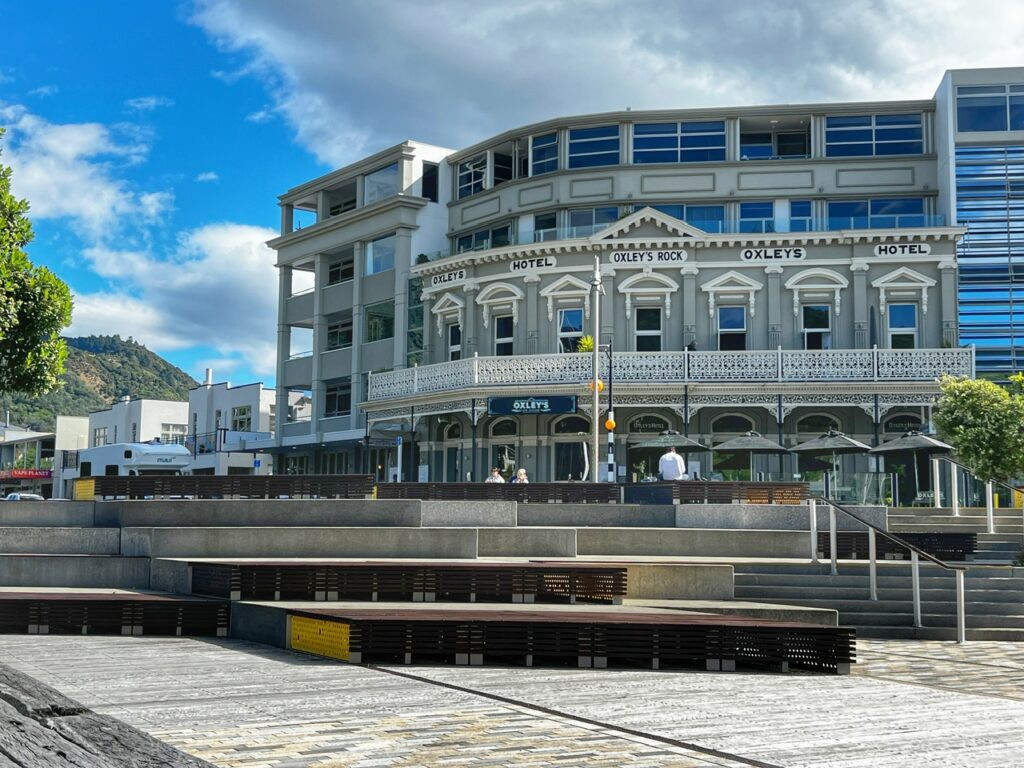
A historic hotel near the waterfront.
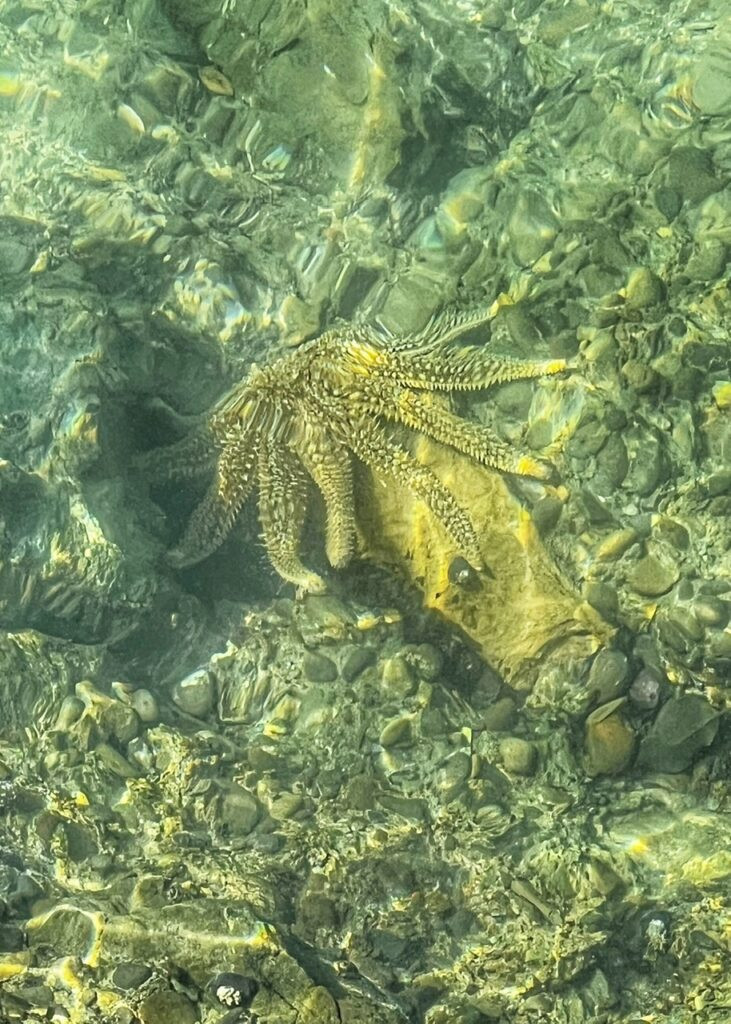
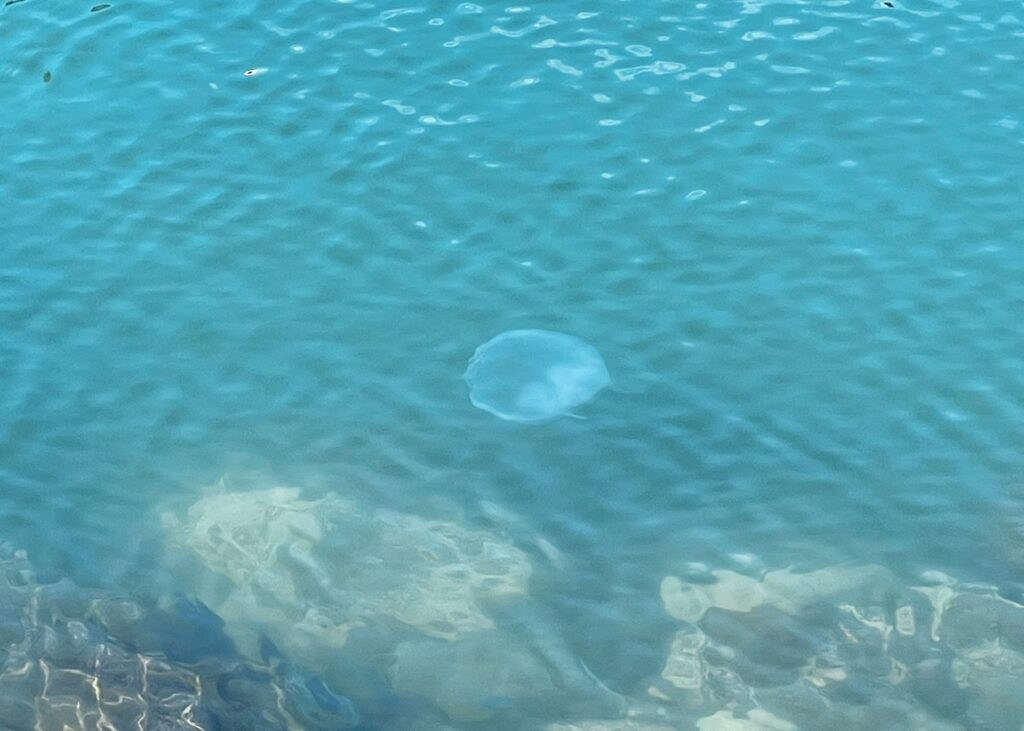
What we did see is leg-loaded starfish, and a jelly. And since we were no longer in Australia, we were happy to know it wouldn’t kill us.
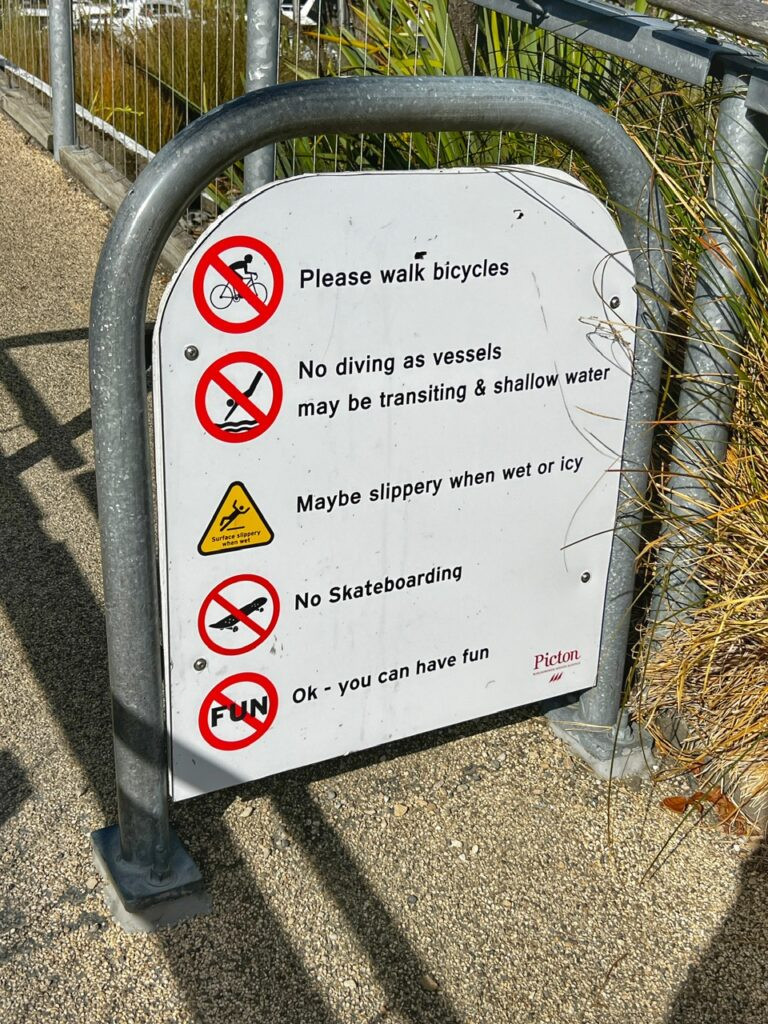
The Kiwis also seem to have more of a sense of humour about things…

One hour prior to our ferry leaving, we got in the car line to board. This ferry cost a whopping $150 USD for a four-hour journey. Fortunately, our Imoova rental footed half the bill.
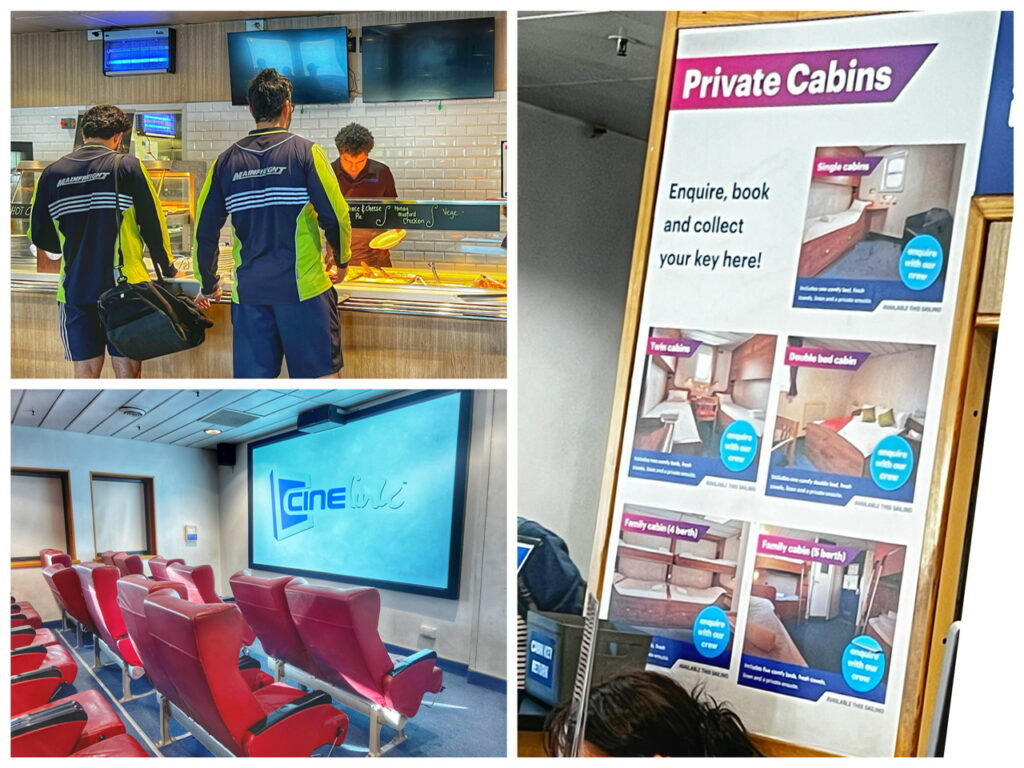

And of course, once we boarded there were ample opportunities to burn more money, including a buffet, drinks, and private cabins. They also had a movie theatre, and a top deck for watching the world go by…until it got dark anyways. Do note, this is one route that is well worth observing. Just make sure you wrap yourselves in some warm clothes before saying goodbye to your car far below. Oh, and bring dramamine too if you’re the type to have an undulating digestive system.
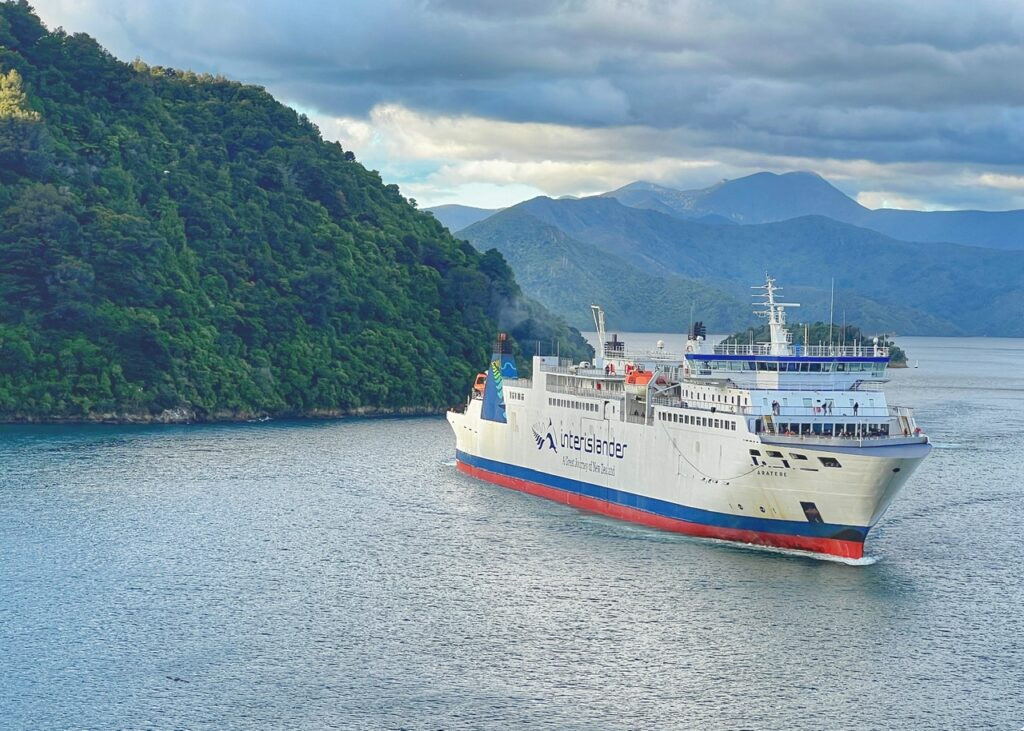
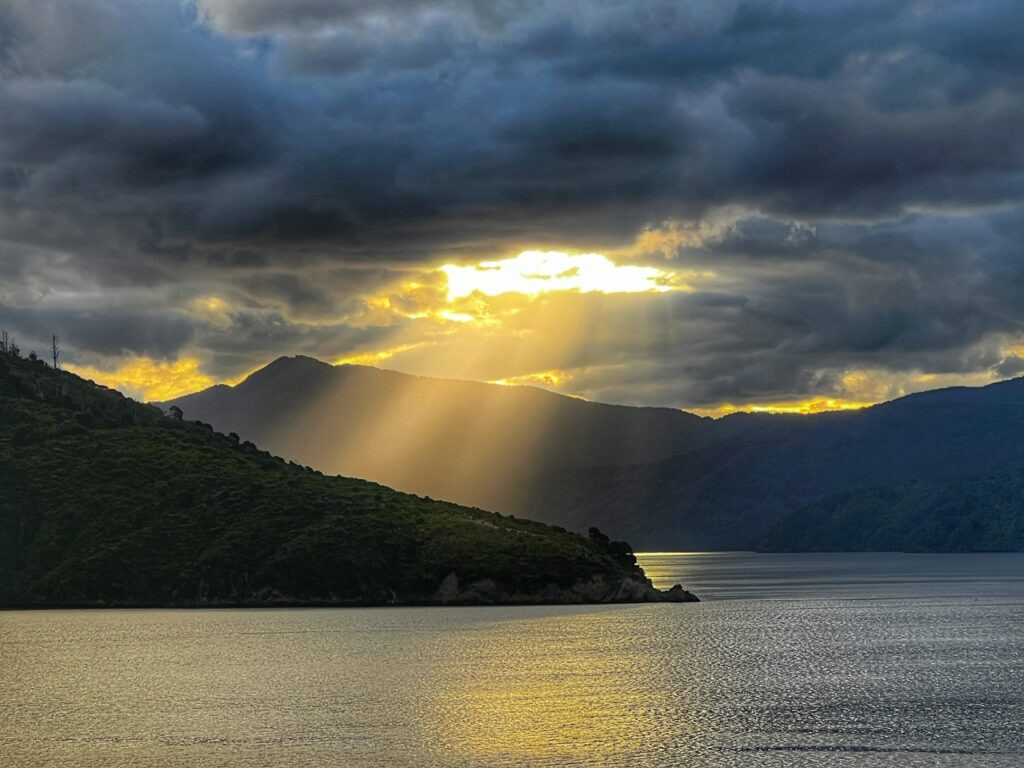
A sister ferry in the sound, just before the sunset delightfully split open the sky. Finally! Off we go to the north!
Day 3: Paekakariki Holiday Park to Mangawhero Campsite
After a bleary-eyed 11 p.m. ferry arrival to Wellington, we drove 30-minutes north to a tongue twister of a town called Paekakariki in order to find an acceptably priced and safe place to park our camper van for the night. We found this in the form of our first official “holiday park,” which we found way more enticing than the ones we stayed at in Australia.
We slept fabulously in the quiet surroundings near the ocean and then, the day also provided some quirky detours in a little Dutch enclave of Foxton and the irresisti-BULL town of Bulls, where they apparently really liked their puns. We ended it by camping at Tongariro National Park, near a lush rainforest with some superb hiking.

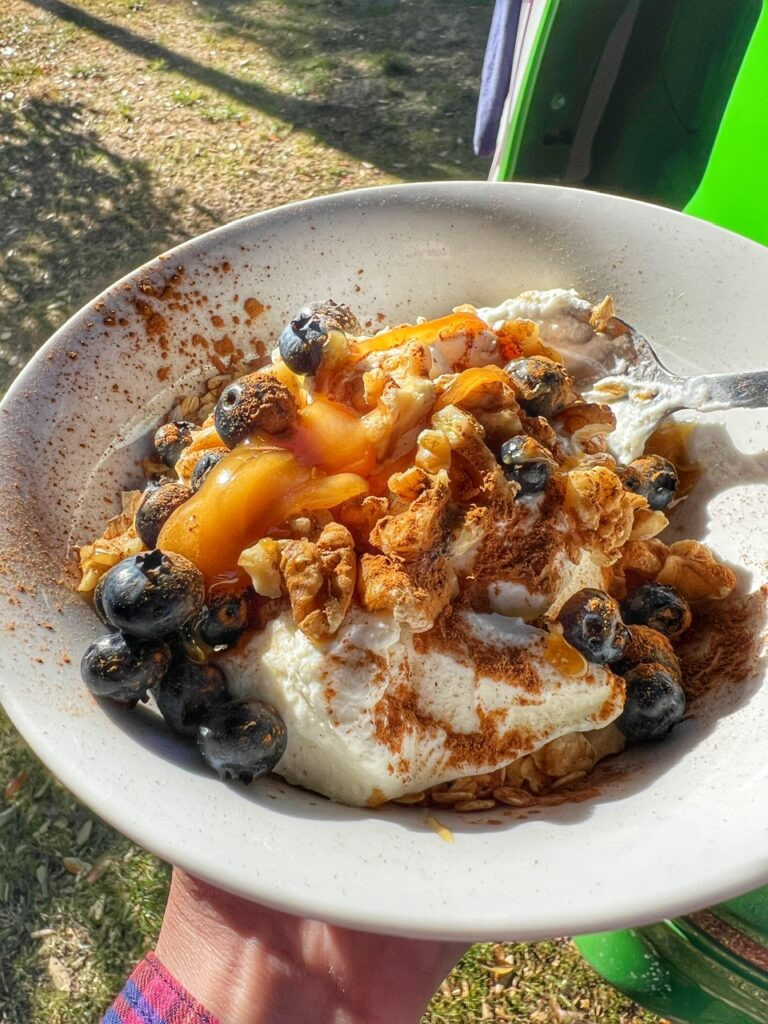
We woke up to a beautiful morning to make breakfast in the back of our Jucy. This consisted of a yogurt bowl piled with a steady stream of local Manuka honey. OMG!!
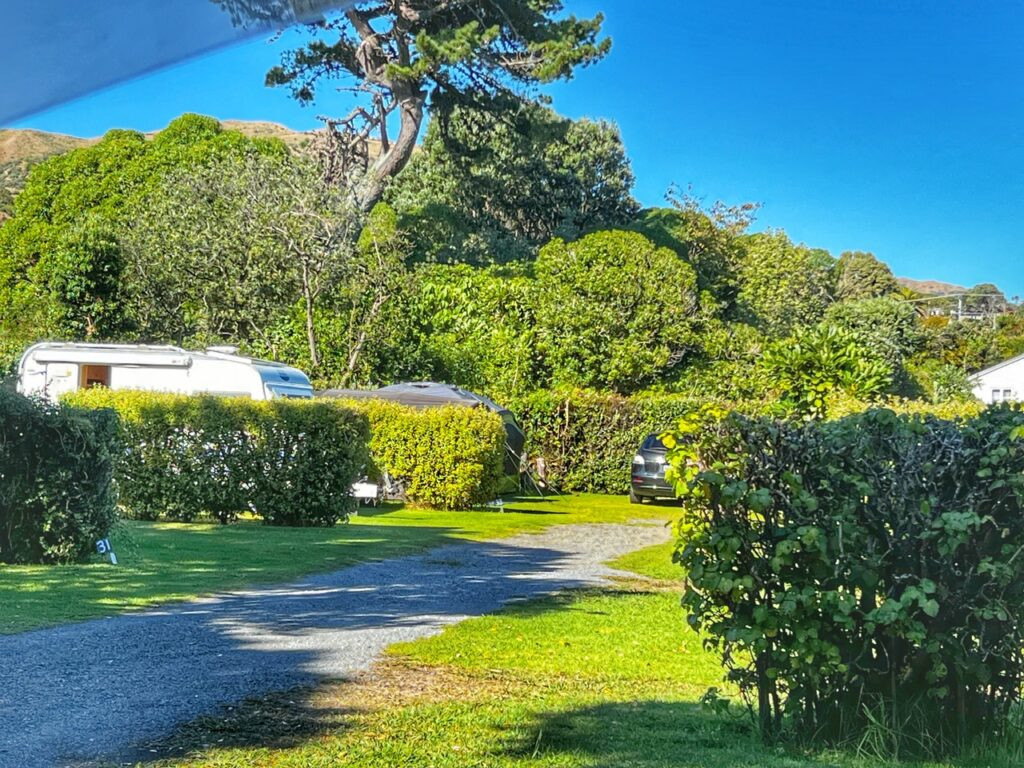
The holiday park where we stayed cost $23, which was more than the DOC (Dept. of Conservation) sites we’d been staying at, but it did at least offer nice hedges to separate yourselves from other vehicles, a large camp kitchen, and an unlimited supply of hot water in the showers.
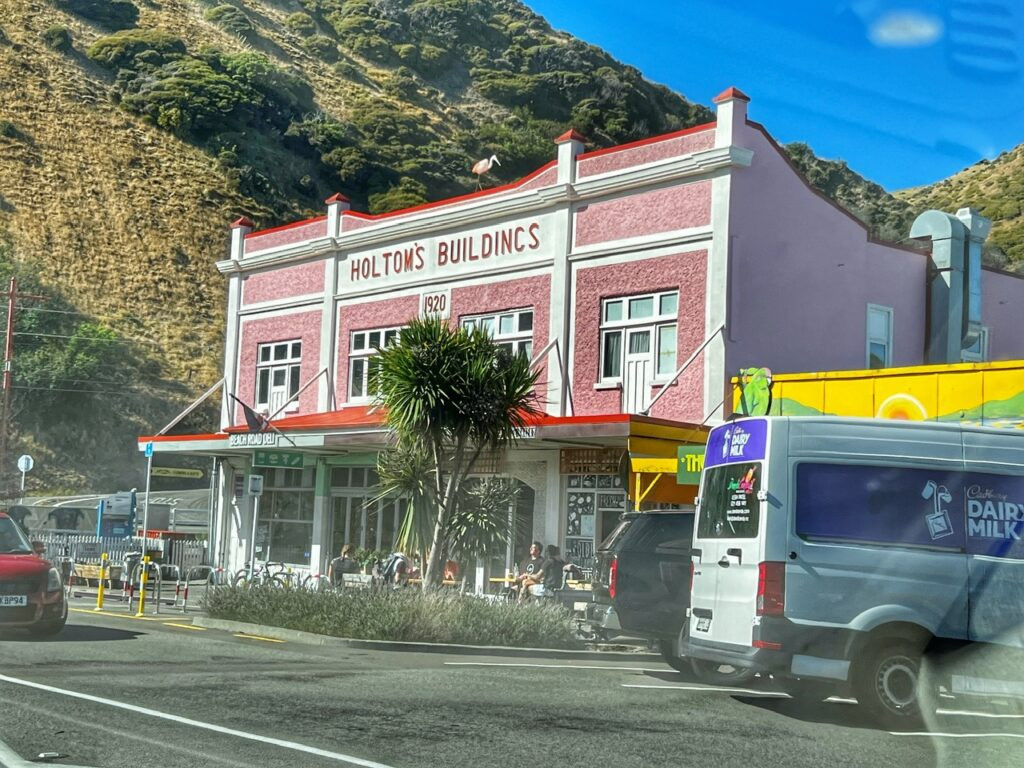
The charming center of Paekakariki
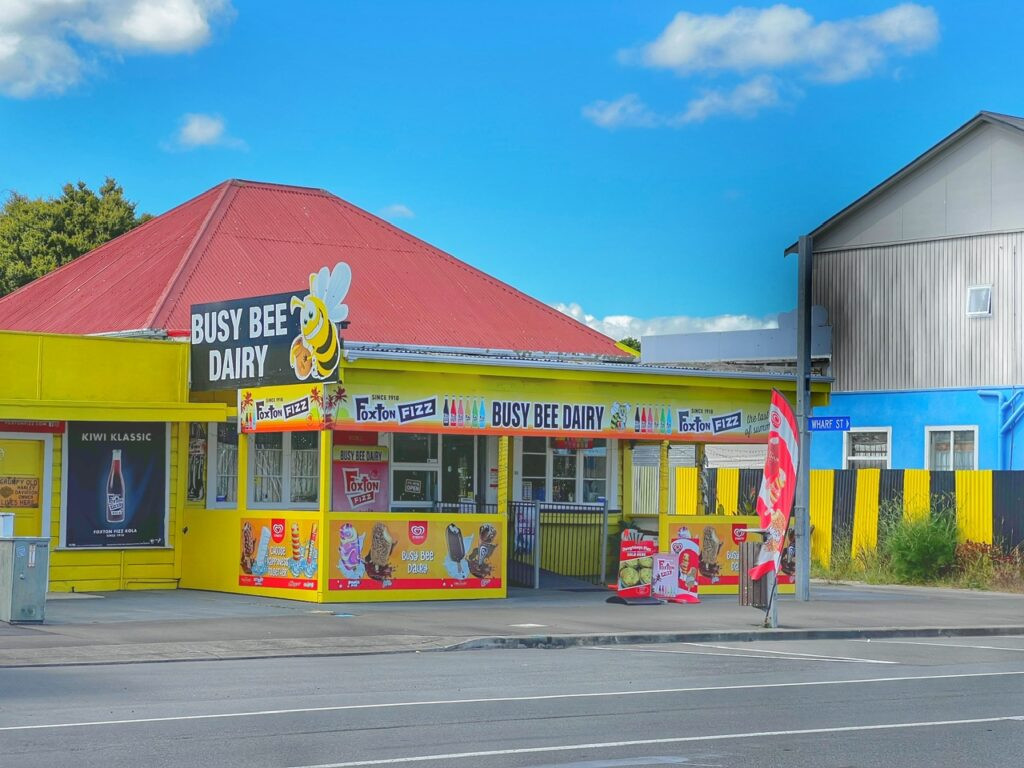
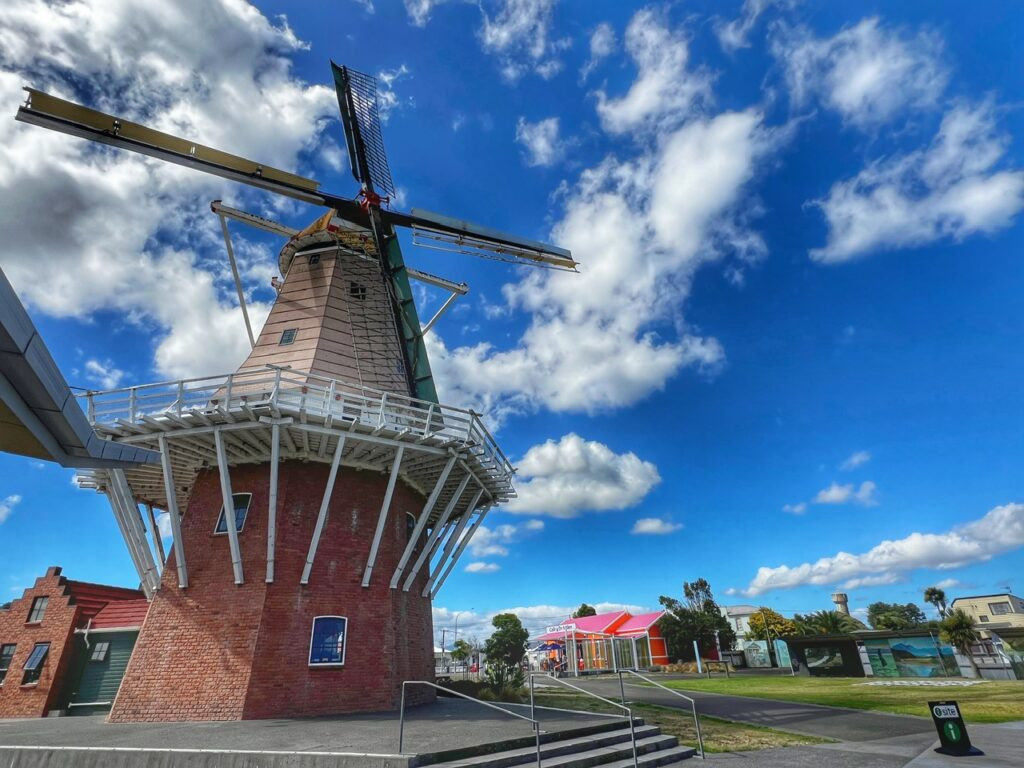
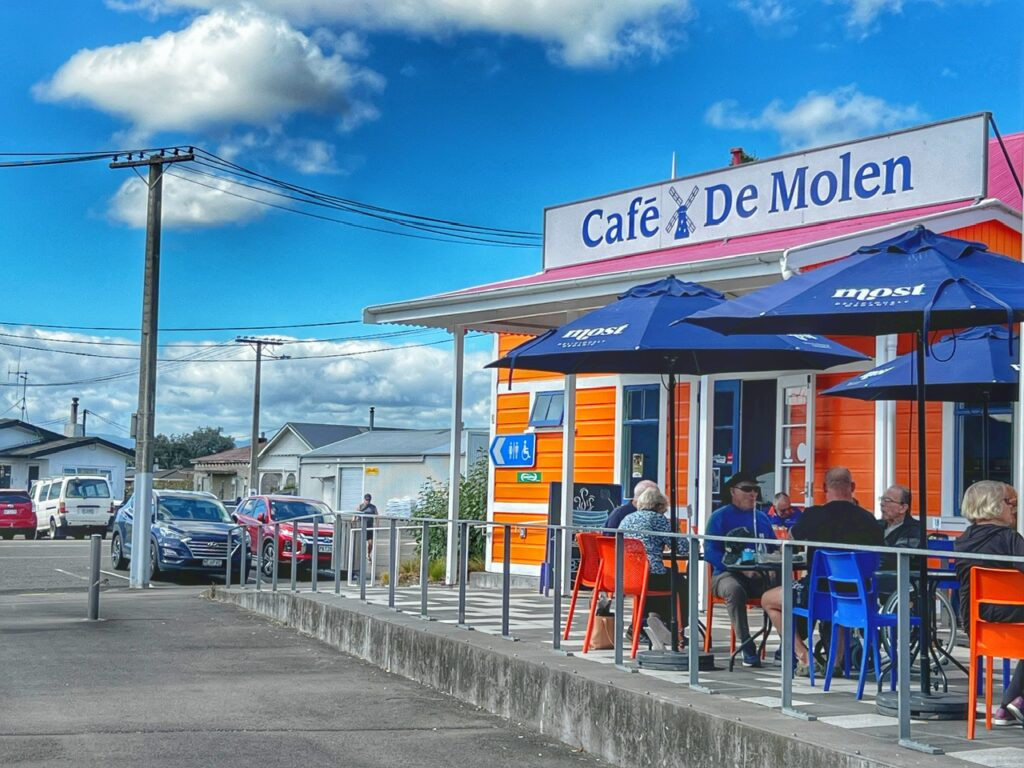
As we began heading north, we arrived to Foxton an hour later, which boasts a rich history that intertwines Maori and European cultures. It was originally established as a Maori settlement of Te Awahou, but became a focal point for the early European settlers following the 1855 earthquake. Unlike many towns in NZ, they had a boom during this time. But instead of gold it was bizarrely a “flax boom” that inundated the area in the late 19th Century. Our first stop was to the “Busy Bee Dairy.” We noticed that dairies seem to actually be convenience type stores in NZ, but certainly offer a leg up on charm compared to a 7/11.
There was also a giant Dutch windmill parked in the middle of town, which offered insights into the area’s traditional milling processes, and some cute cafes to go along with it.
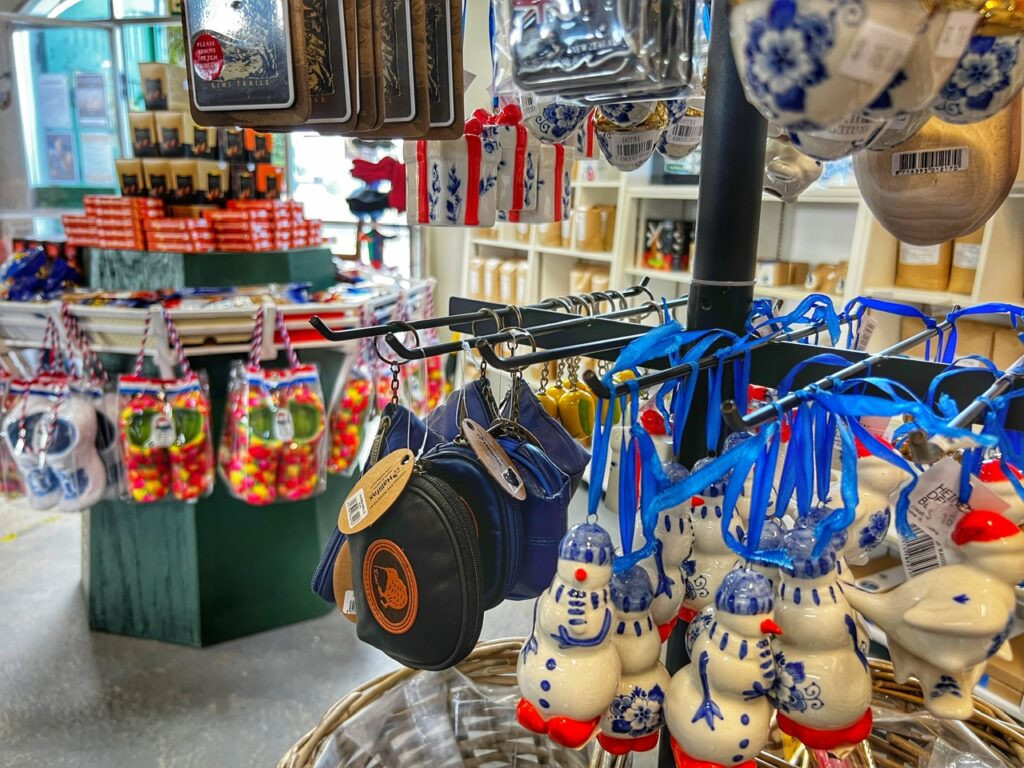
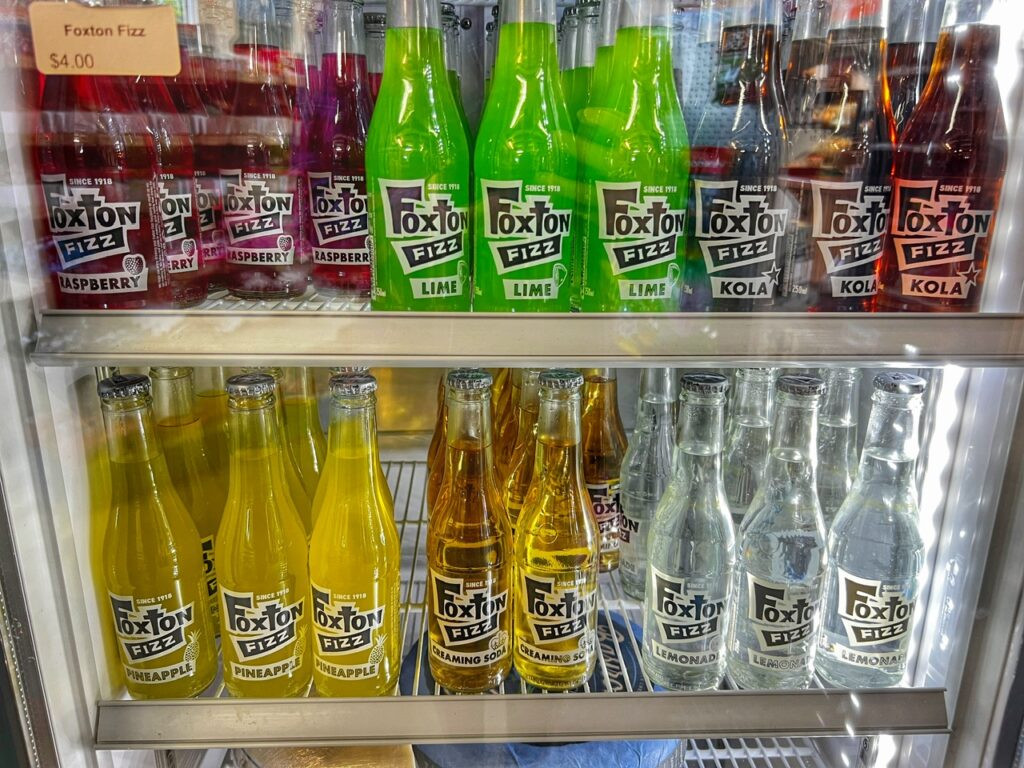
Inside the windmill, we found a grouchy lady (who clearly wasn’t Dutch,) and lots of related paraphernalia like ceramic blue and white ornaments and painted wooden clogs, which would be an ideal way to clutter up your camper van. They also sold “Foxton Fizz” which is a locally produced soft drink that has been a part of the NZ beverage scene for over a century.
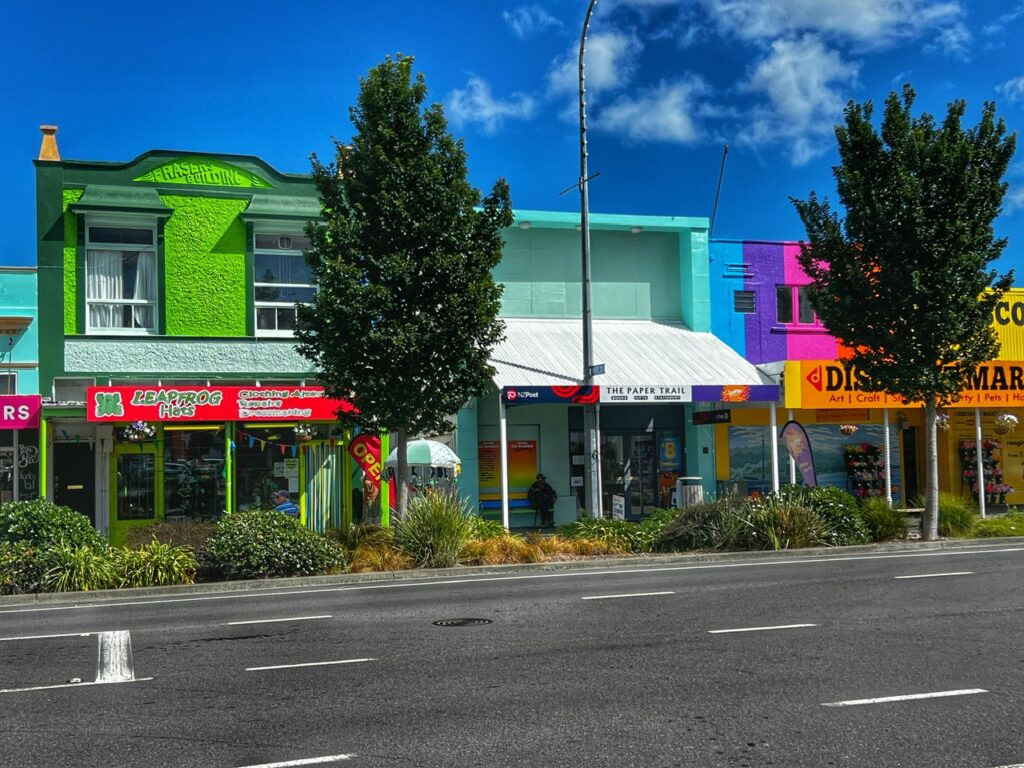
The town of Foxton is colorful and walkable.
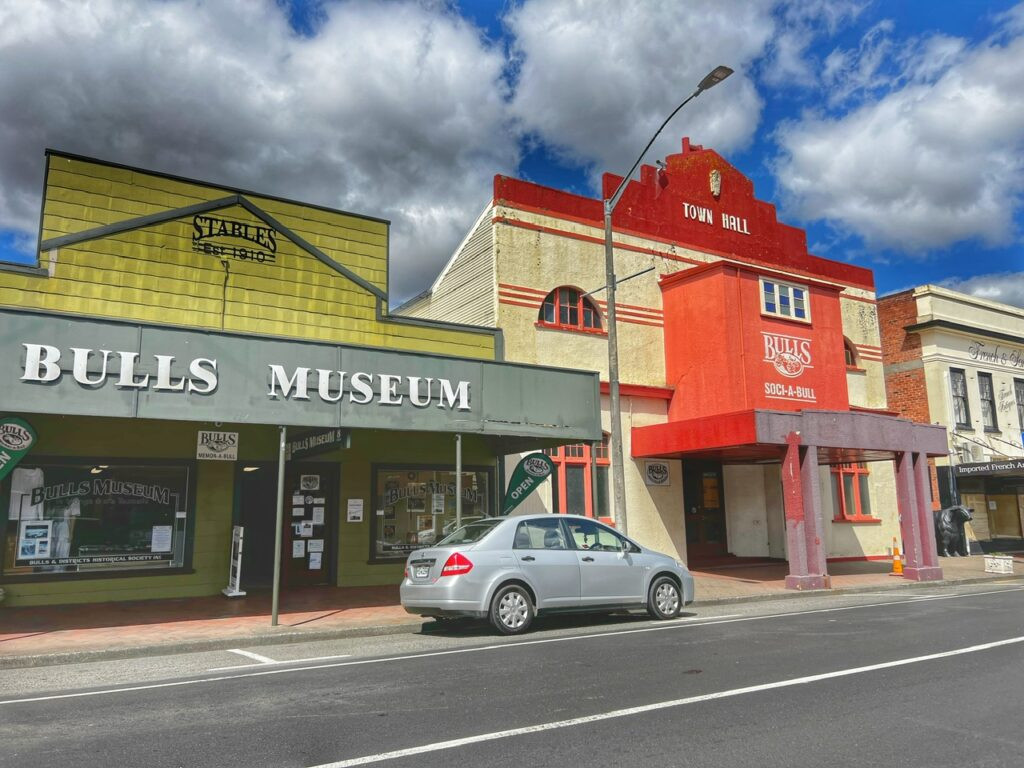
Moving on, we rolled into the town of Bulls, which is a small and lively town known for its pun-filled signage that playfully incorporates the town’s name into various aspects of daily life. It was named for James Bull, an English settler who established the first general store in 1862. There is also a museum, antique and gift shops, and bakeries/cafes.
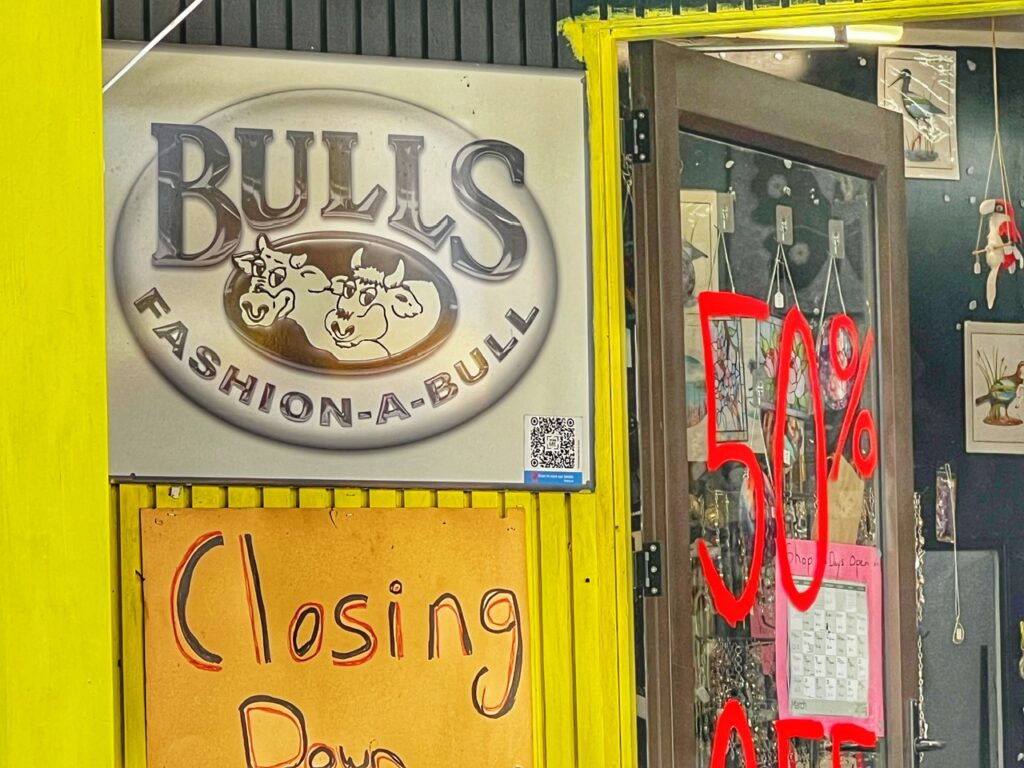
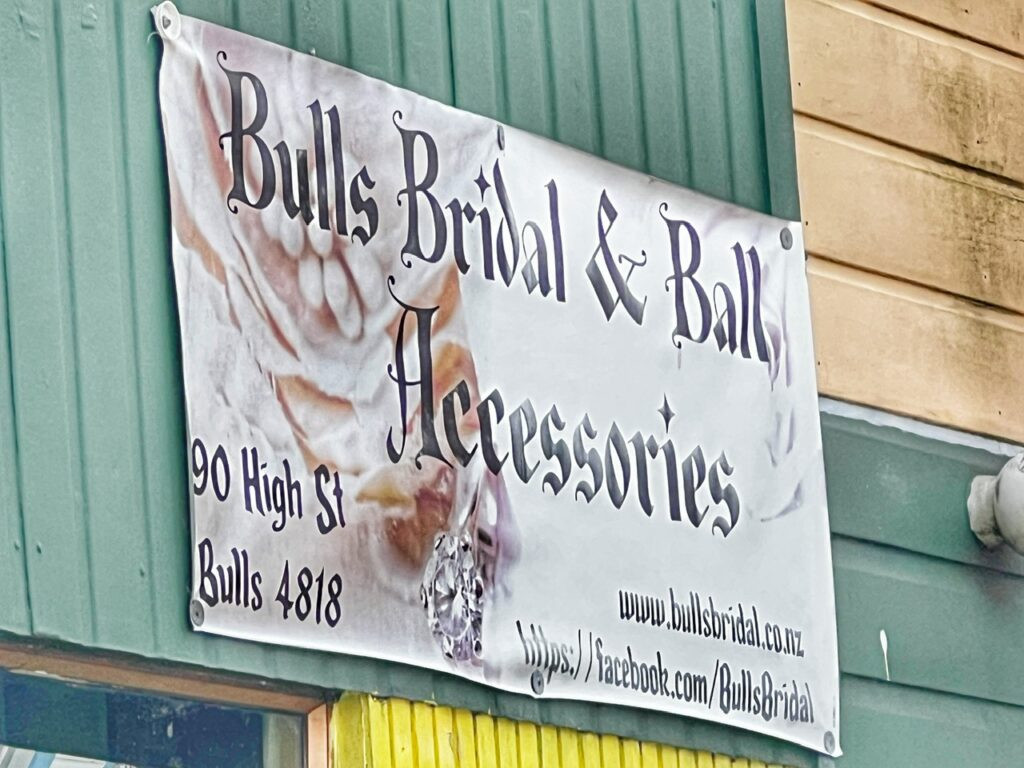
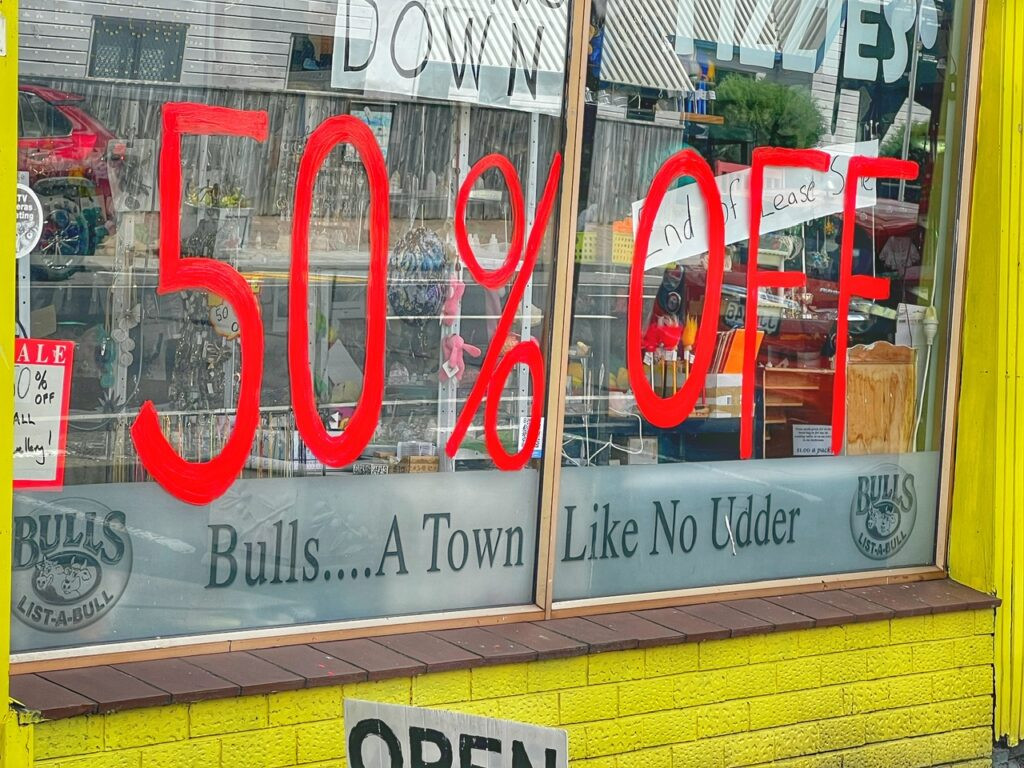
Fashion-a-Bull…Bulls Bridal and Ball Accessories….Bulls is a town like no udder
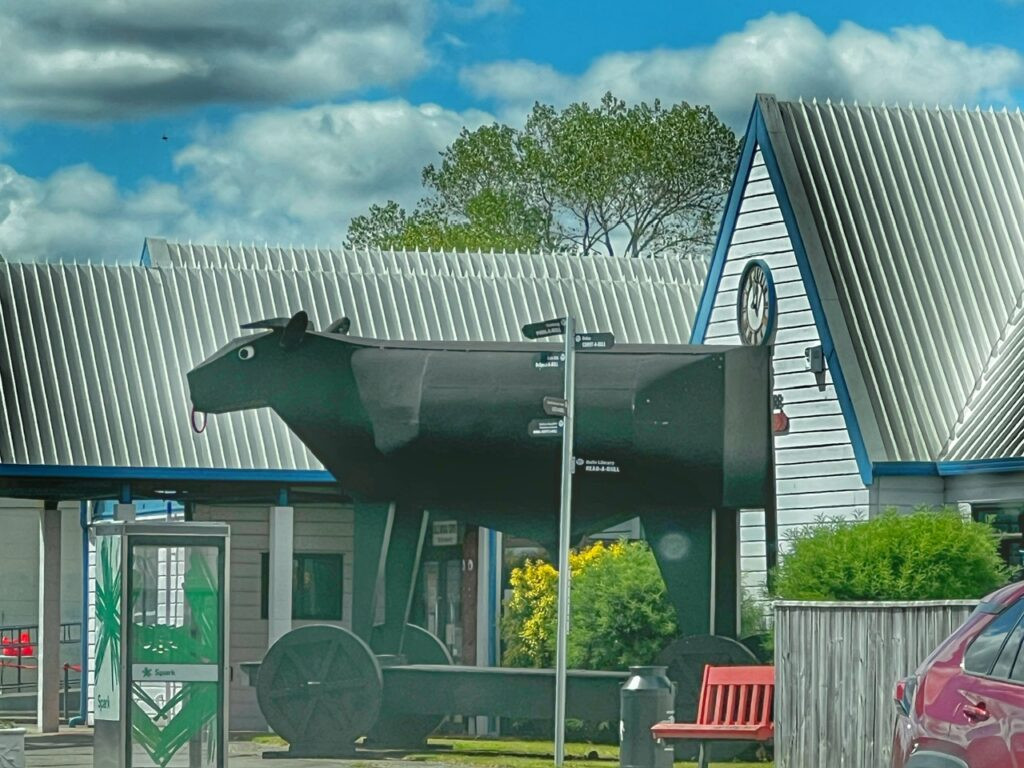
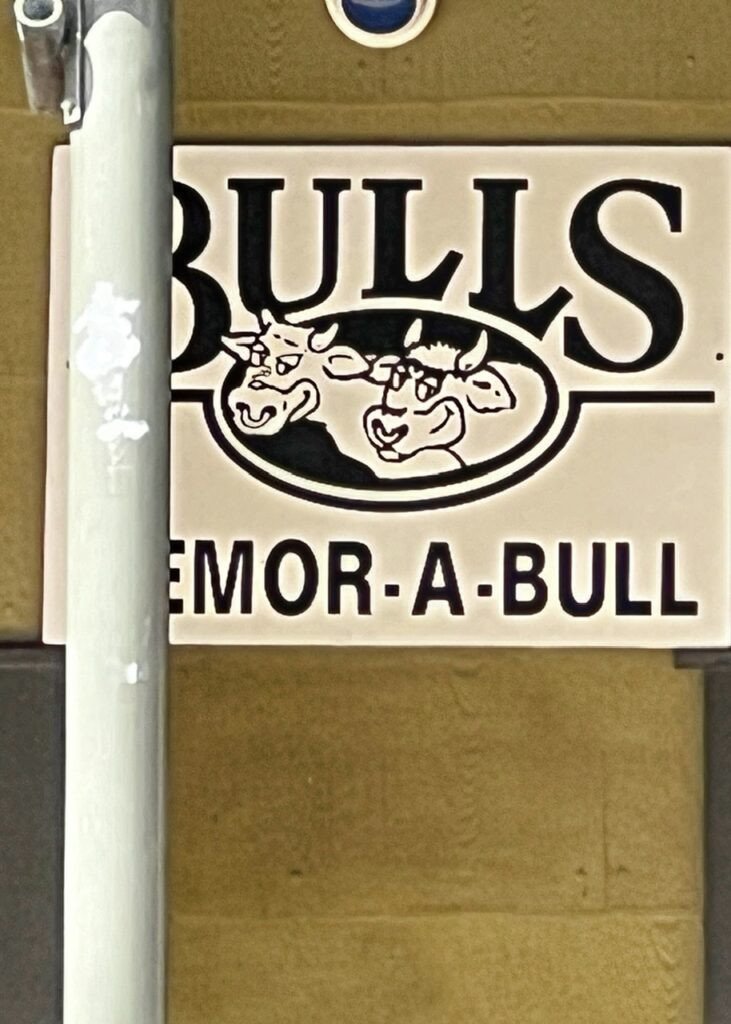
This town is so full of bull. But absolutely memor-a-bull.
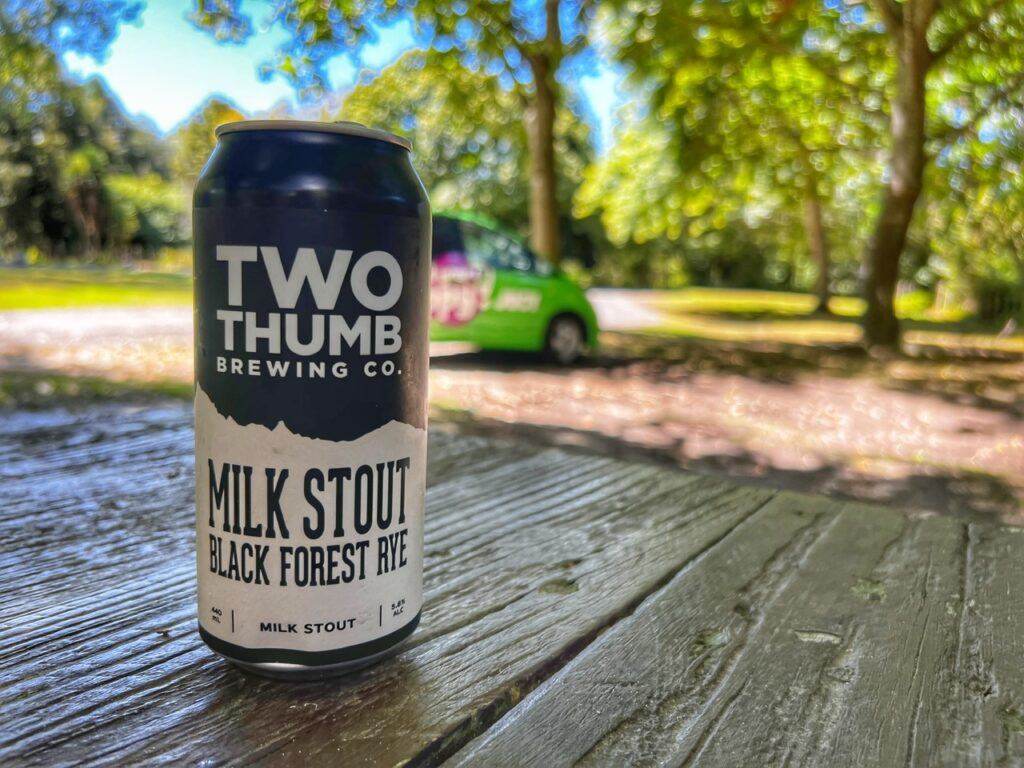
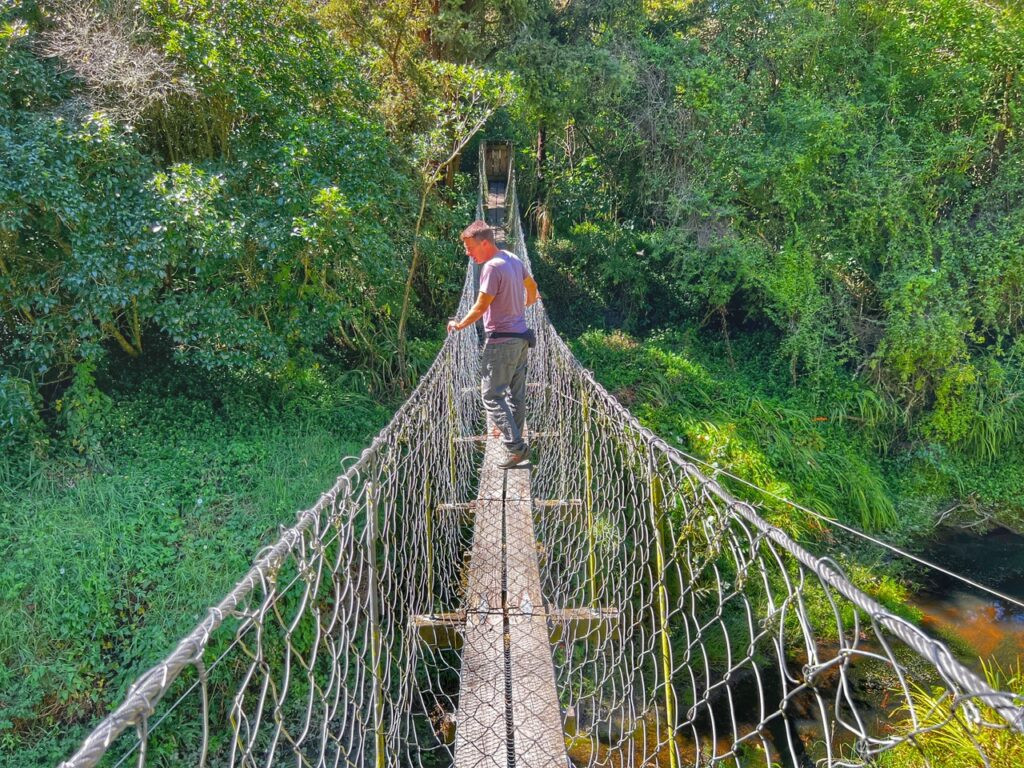
From Bulls, we drove north to Hunterville where we paused at Queens Park for a beer treat, lunch, siesta, and a quick hike which you had to access by crossing a quite precarious suspension bridge.
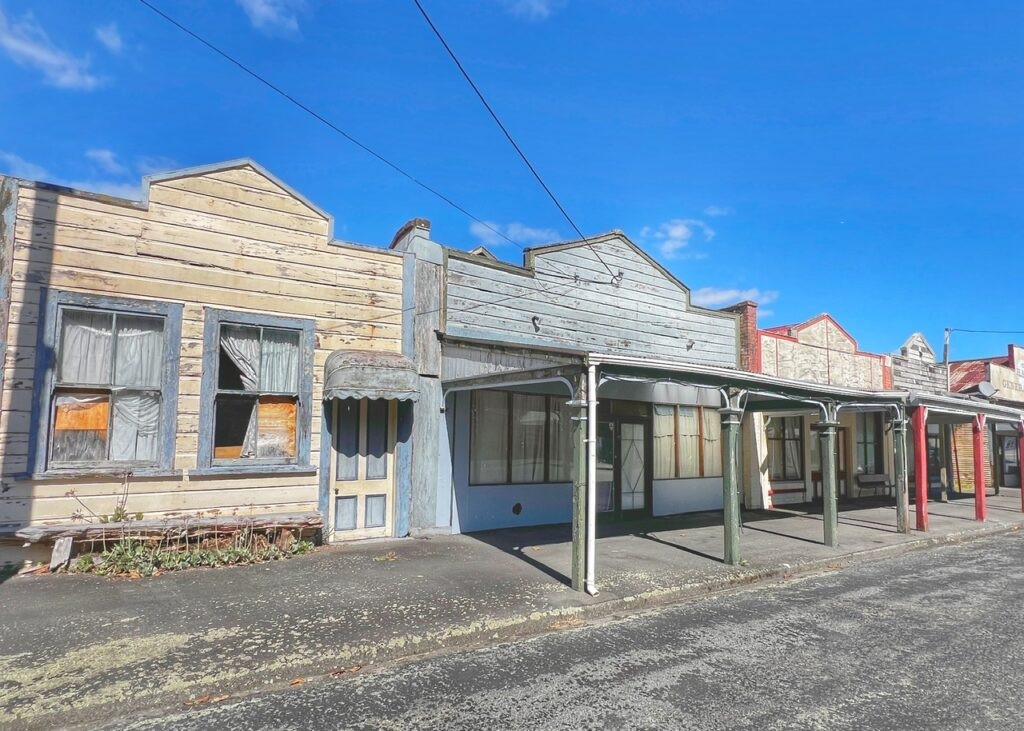
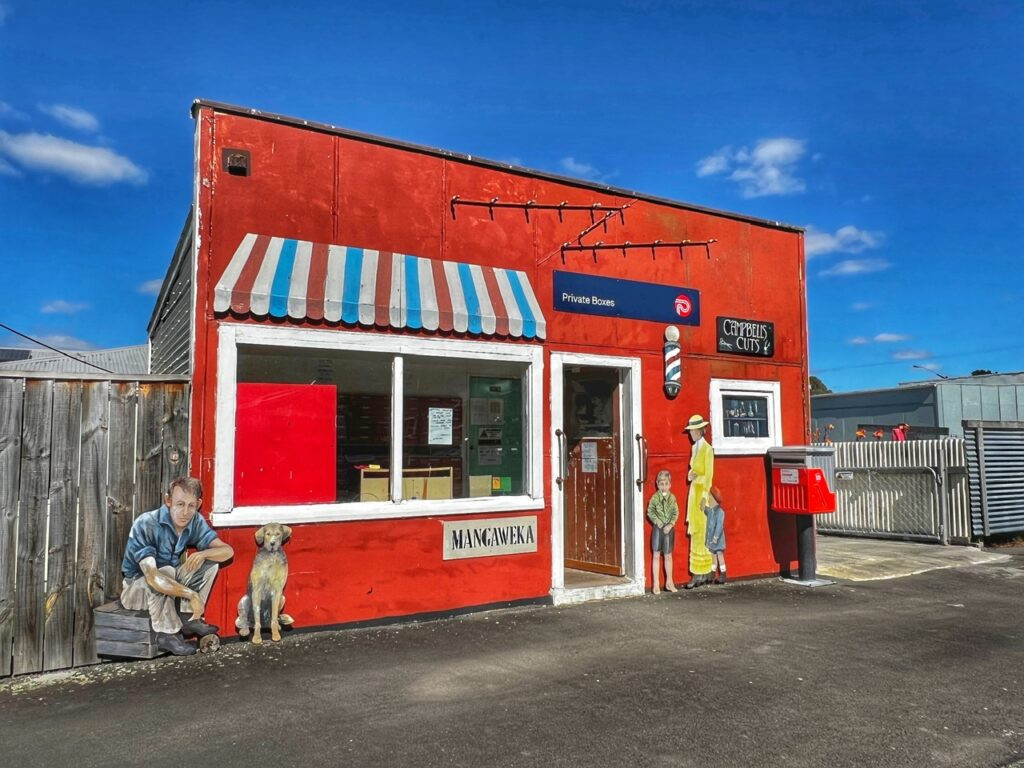
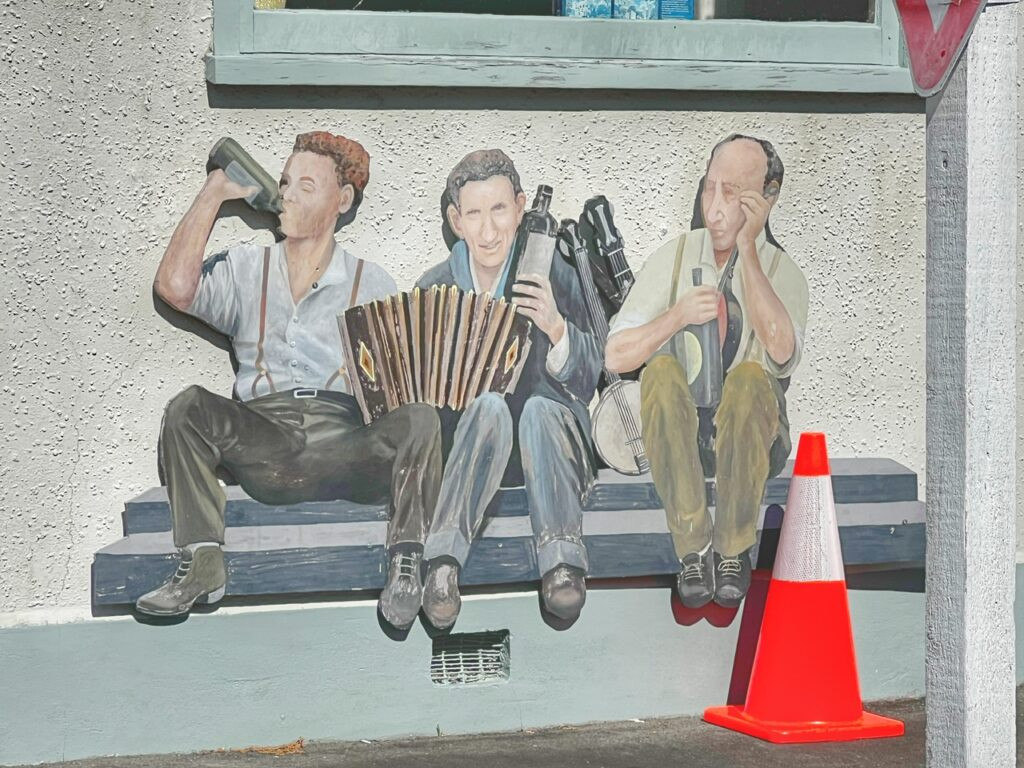
Further down the road, we paused in Mangaweka which is a quaint rural township of 200 people tucked into New Zealand’s Manawatu-Whanganaui region along State Highway 1. It offered a distinctive blend of historical significance on its historic Main Street, which included some amusing touches of artistic flair.
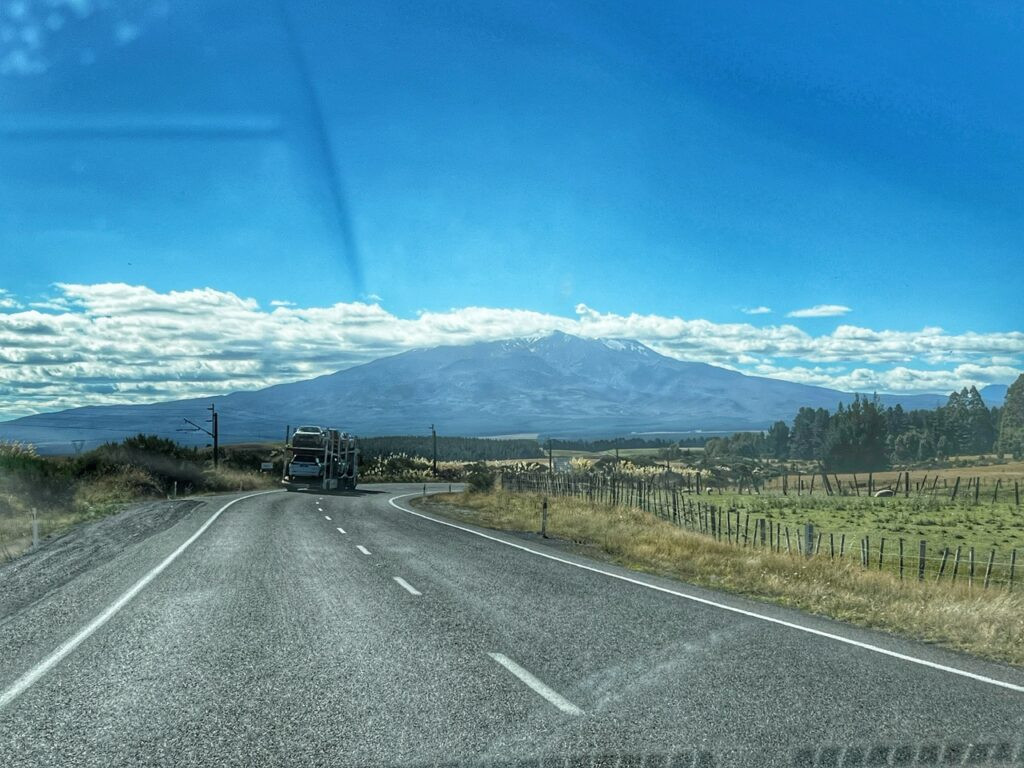
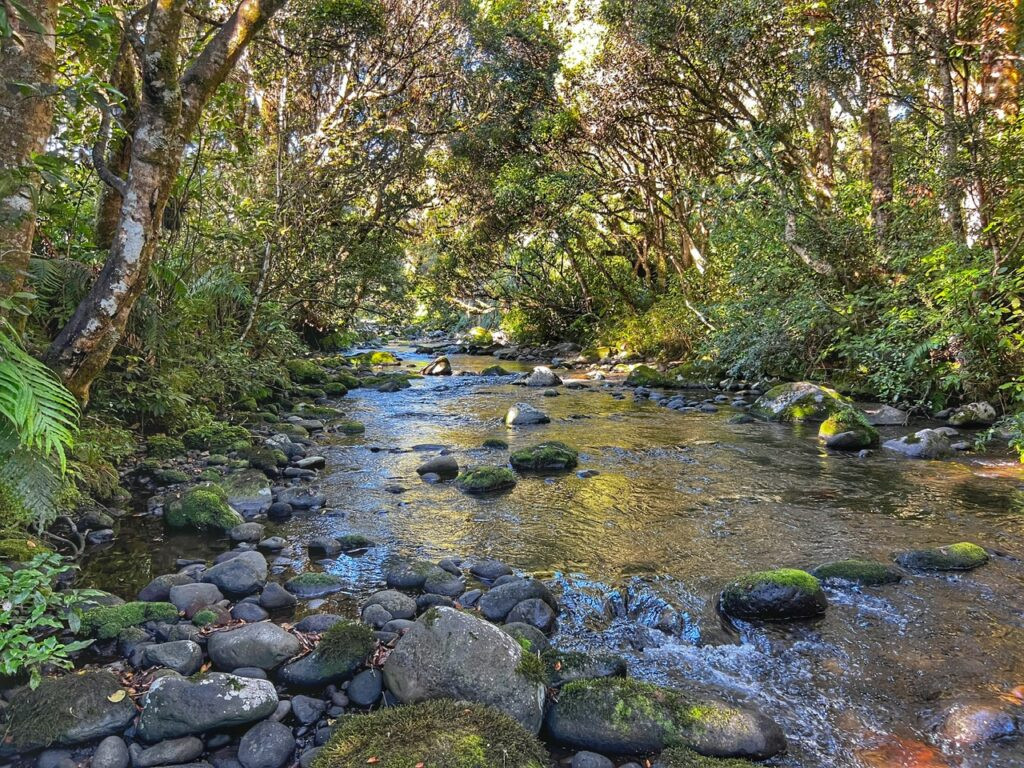
Encountering our first volcanoes as we headed north. Arriving to Okahune, at the southern edge of Tongariro National Park where we found some tranquil hiking trails amongst some lovely rainforest…
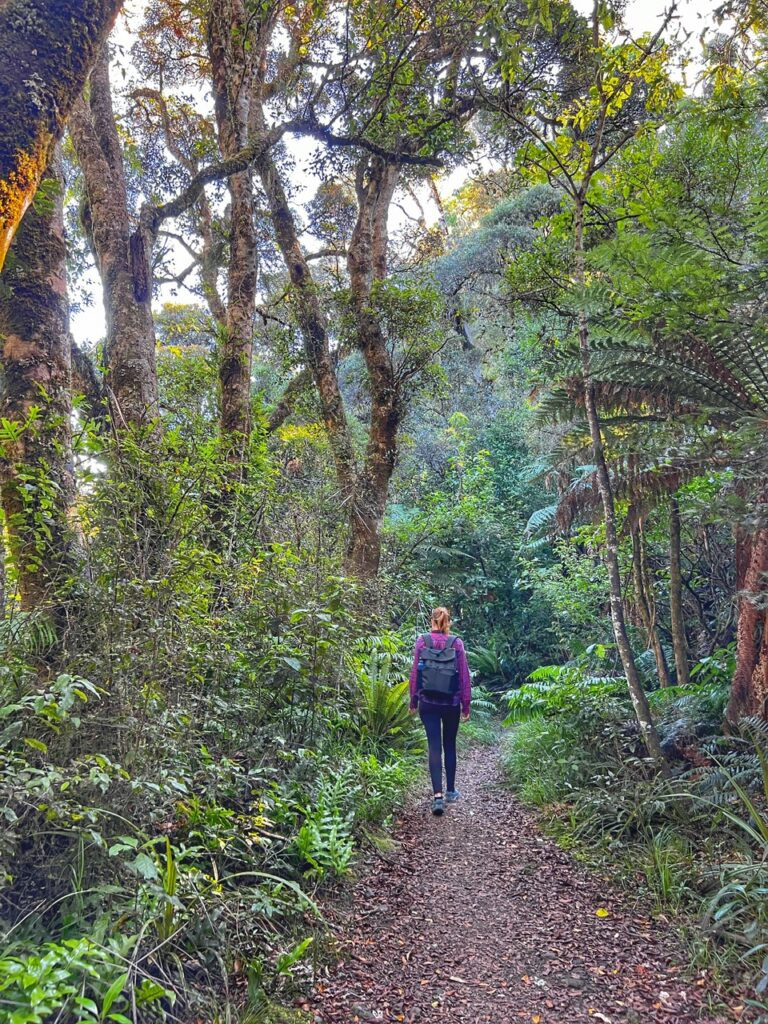
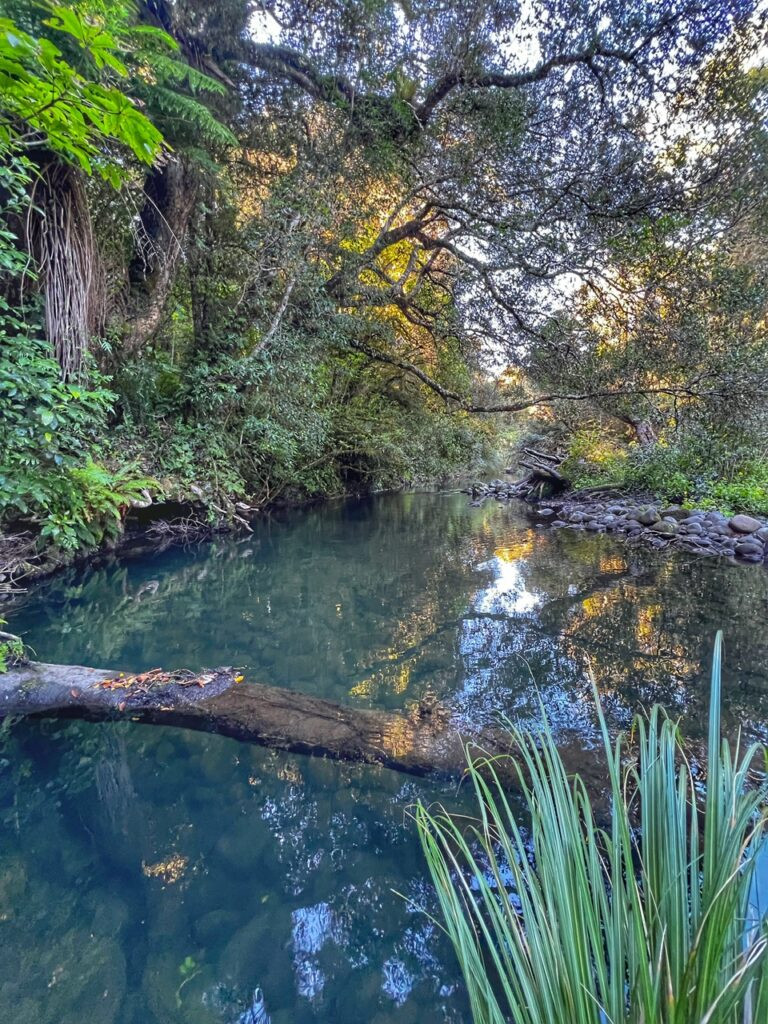
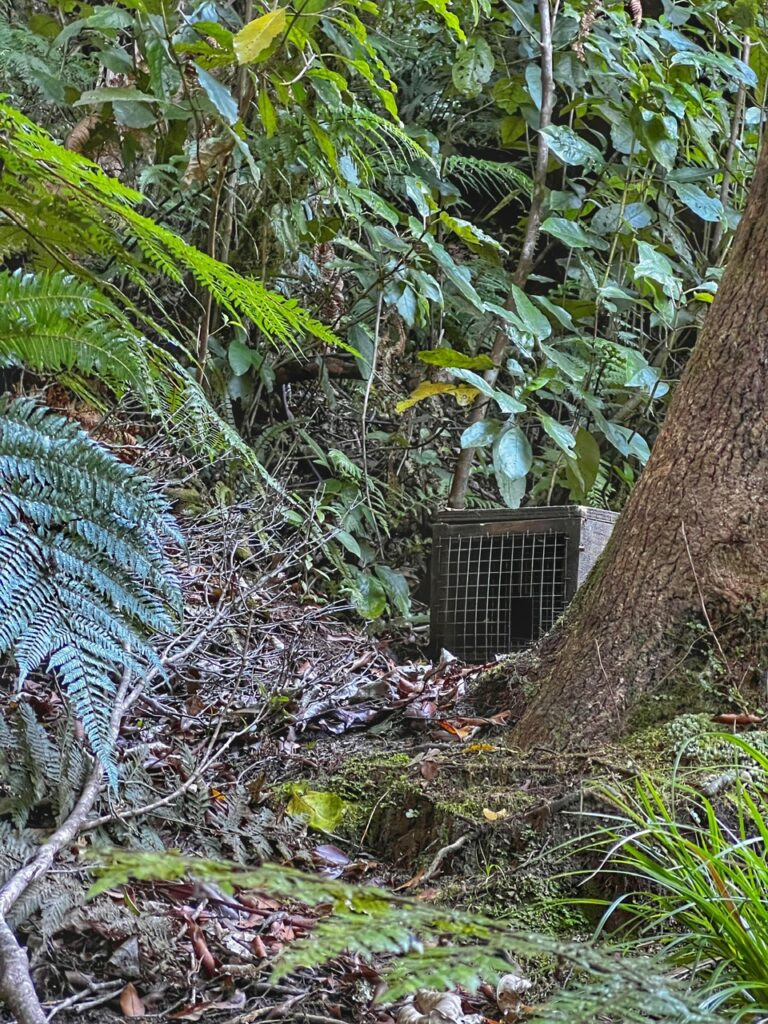
…all within walking distance of our DOC camp at Mangawhero. Just beautiful! On this hike, we encountered our first obvious traps, which New Zealand has unfortunately had to introduce to curb the predators like rats, weasels and opossums. Since their arrival around 750 years ago, these predators have been decimating their native plant and wildlife, including the extinction of 75 native species and the risk of losing nearly 4000 more.
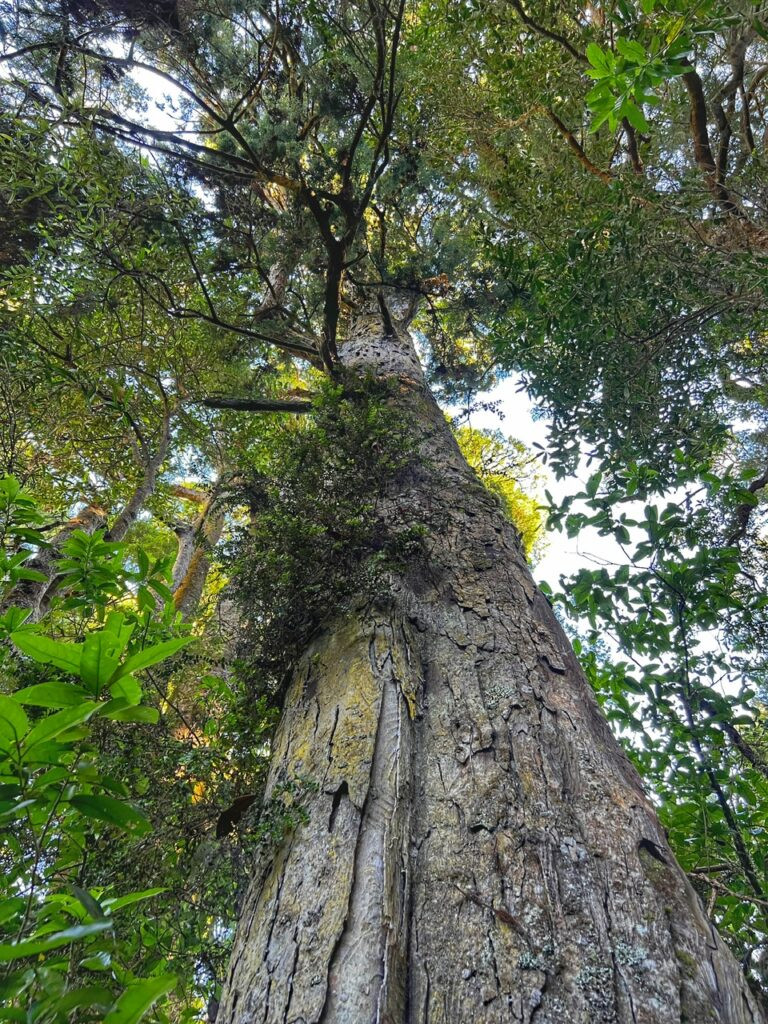
It was nice to see so many large forests after seeing so few on the South Island.

They also had terrific trail signage, like they do everywhere in the country.
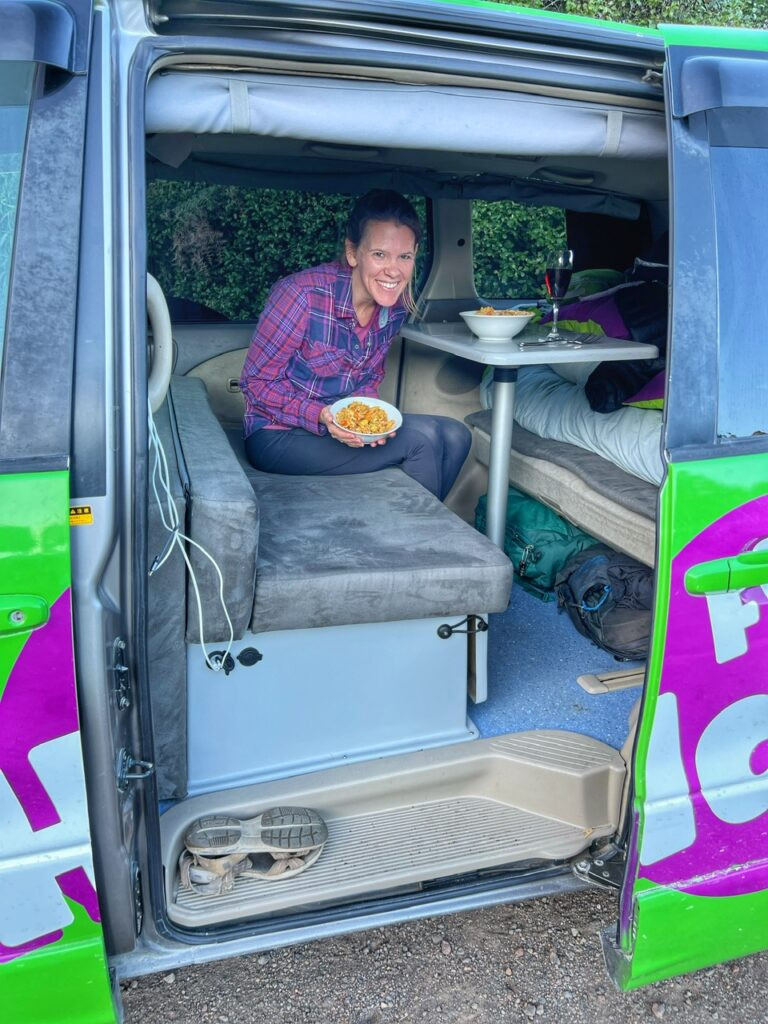
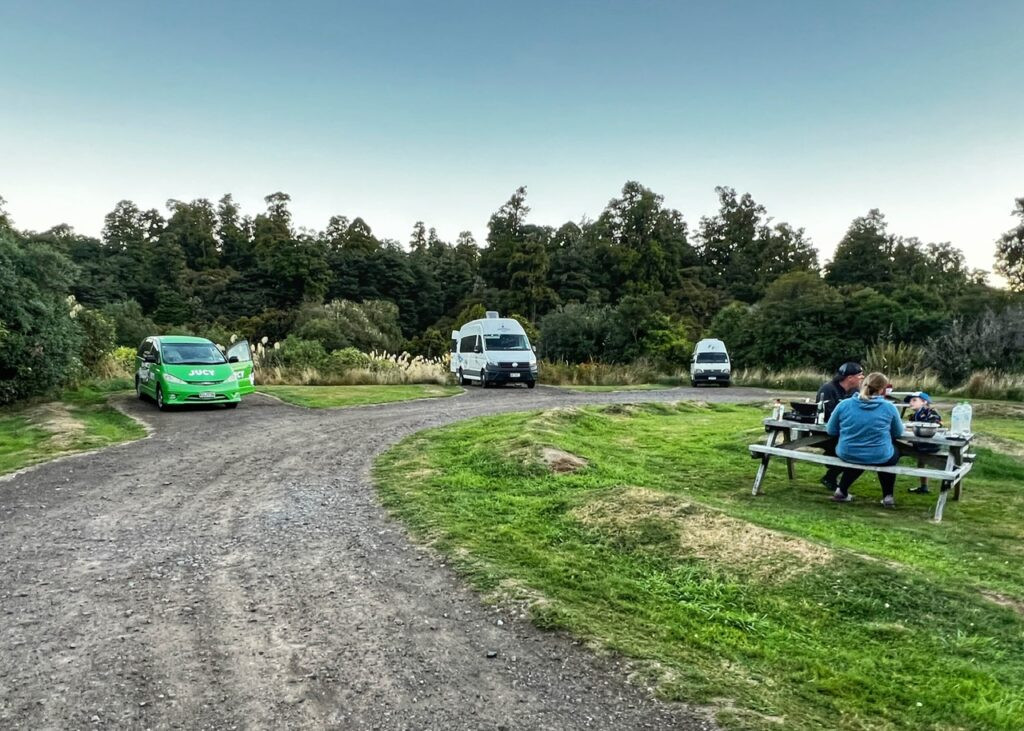
Arriving back to our Jucy, we whipped up some dinner and since we didn’t have access to a picnic table, we decided to try out our interior table, which was a bit uh…tall….but still functional. The parking lot where we camped (and the one lucky family who nabbed the only picnic table.)
Day 4: Tongriro NP to Rotorua (2.5 hours)
From our campsite, we started the fourth day of our NZ roadie at Tongariro National Park, which is one of the natural and historic stars of the North Island. Unfortunately, we didn’t have enough time to do any real hiking so we only got a nibble. We also visited what is proclaimed as “the world’s coolest McDonald’s” in Taupo which features a (real) vintage airplane as its seating area, the stunning turquoise Huka Falls, and in the evening, had a serendipitous date with Greg’s Aunt Alide who happened to be passing through Rotorua on the same evening.
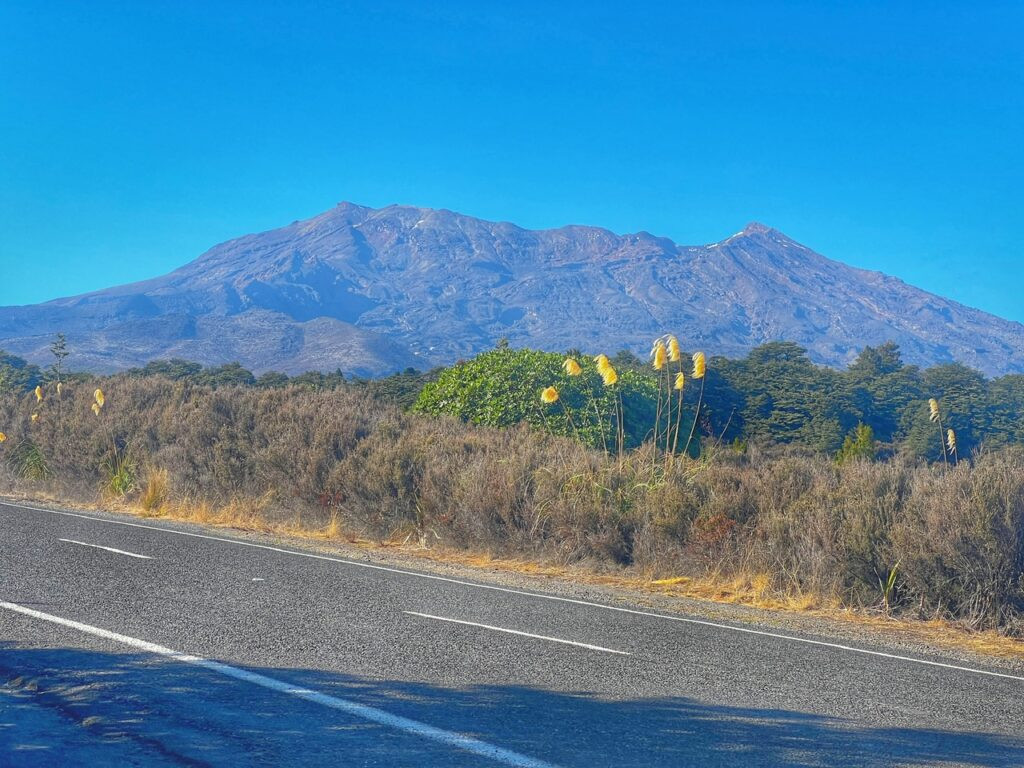

Tongariro National Park was established in 1887 which makes it the oldest in NZ and the fourth oldest on the planet. Its dramatic landscape features three active volcanoes — Mount Tongariro, Ngauruhoe, and Ruapehu. There is an all day hiking trek which takes you through the highlights of the park, which requires advance coordination and time but looks highly appealing.
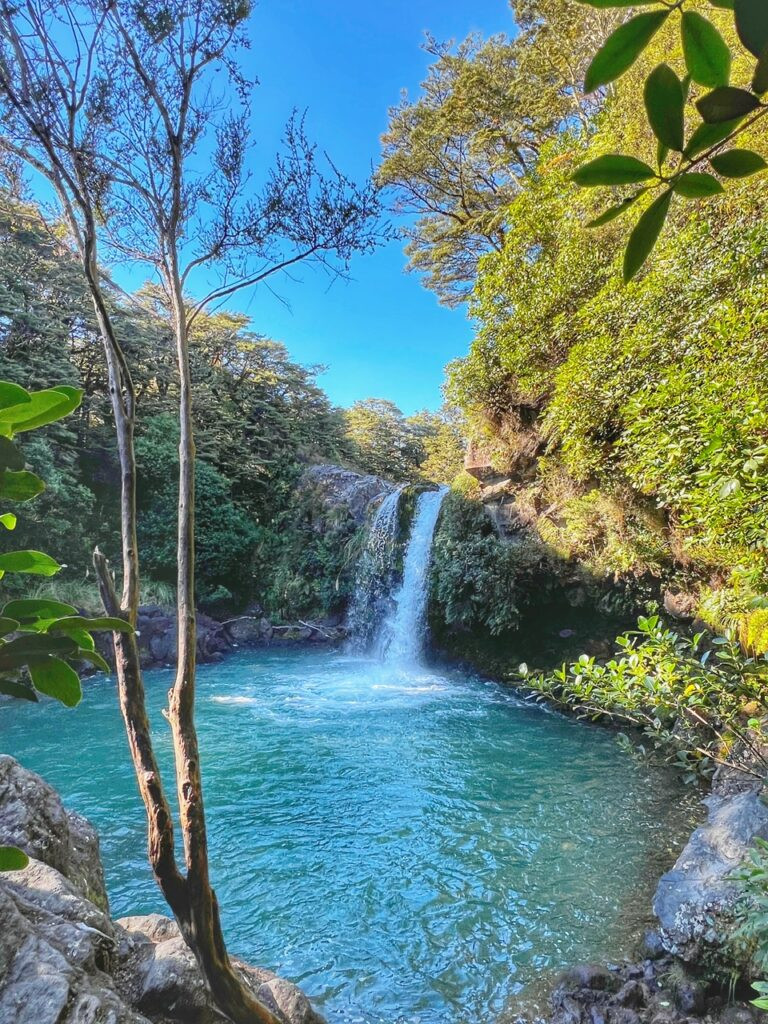
We instead went to the time-friendly Tawhai Falls which was easy, packed with crowds, and a bit anti-climactic.
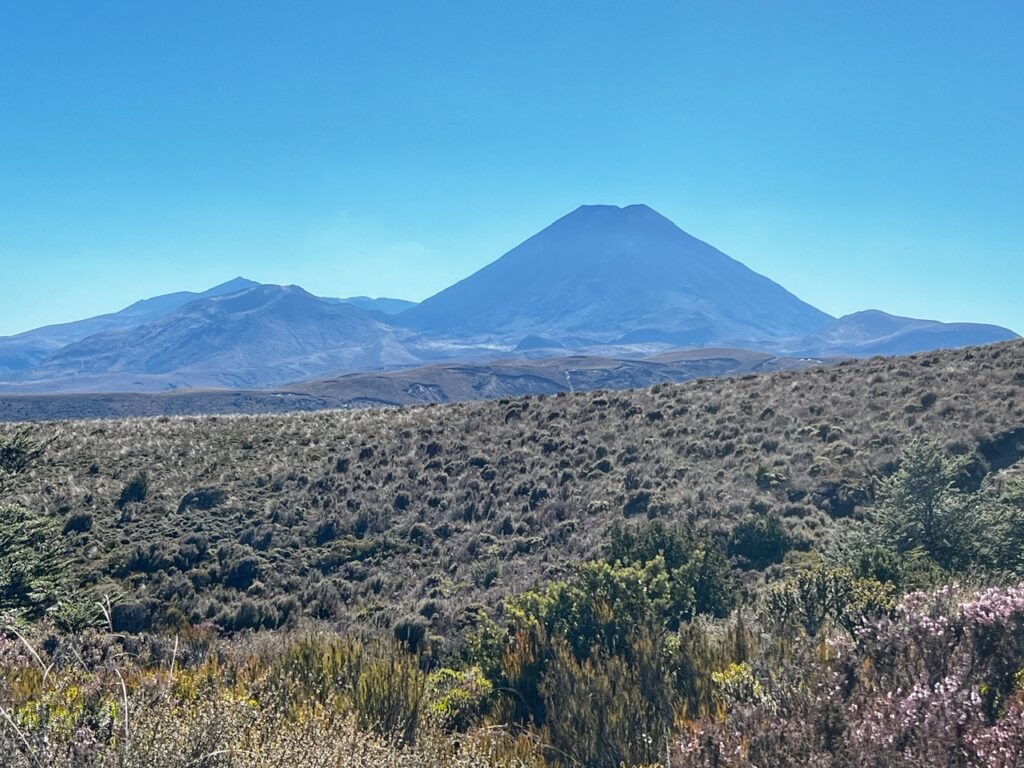
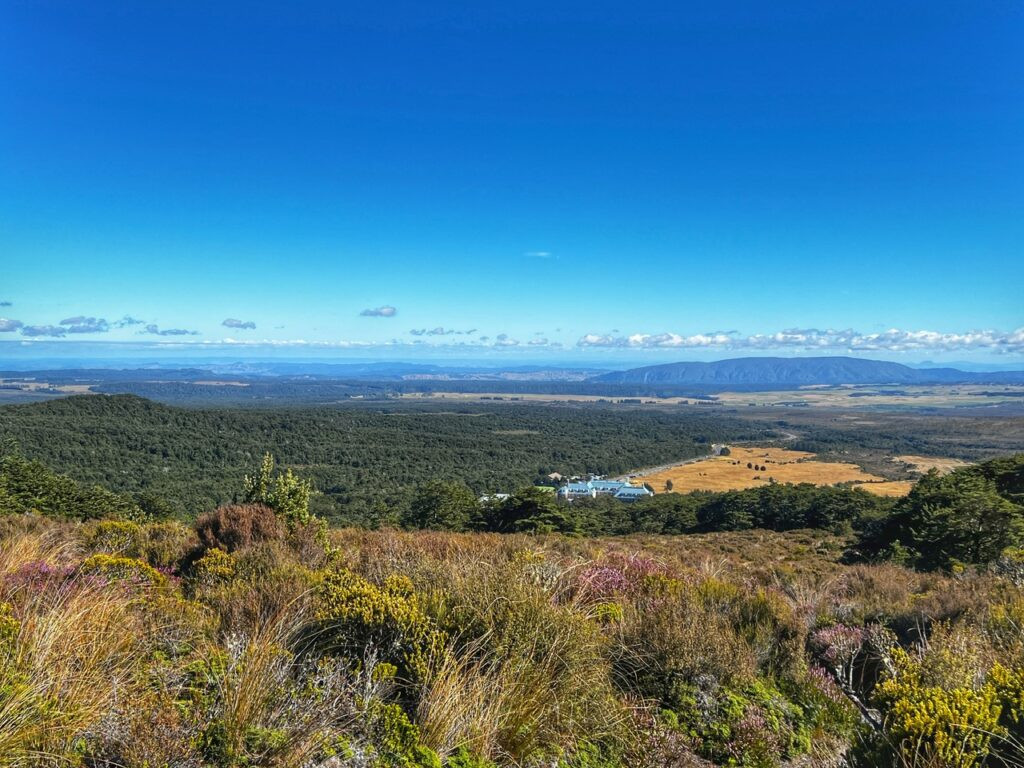
After this, we wanted to skirt away from the crowds so we parked at the visitor’s center and hopped on the “Ridge Walking Trail,” which was a bit steeper, slightly longer, and totally empty. Plus, the views were way more captivating.

By this time it was 11 and our way too short of a stint passed at Tongariro, so we headed north where we made our lunch on the edge of Lake Taupo which was also idyllically swimmable.

We then rolled into Taupo Town and did something we haven’t done since 2022 when we had nowhere else to eat at 6 am in the morning in Cairo. We went to McDonald’s, or Macca’s as it’s called in Oceania. The reason? It’s allegedly the world’s “coolest.” (Not sure who ranks such a superlative? 🤣)
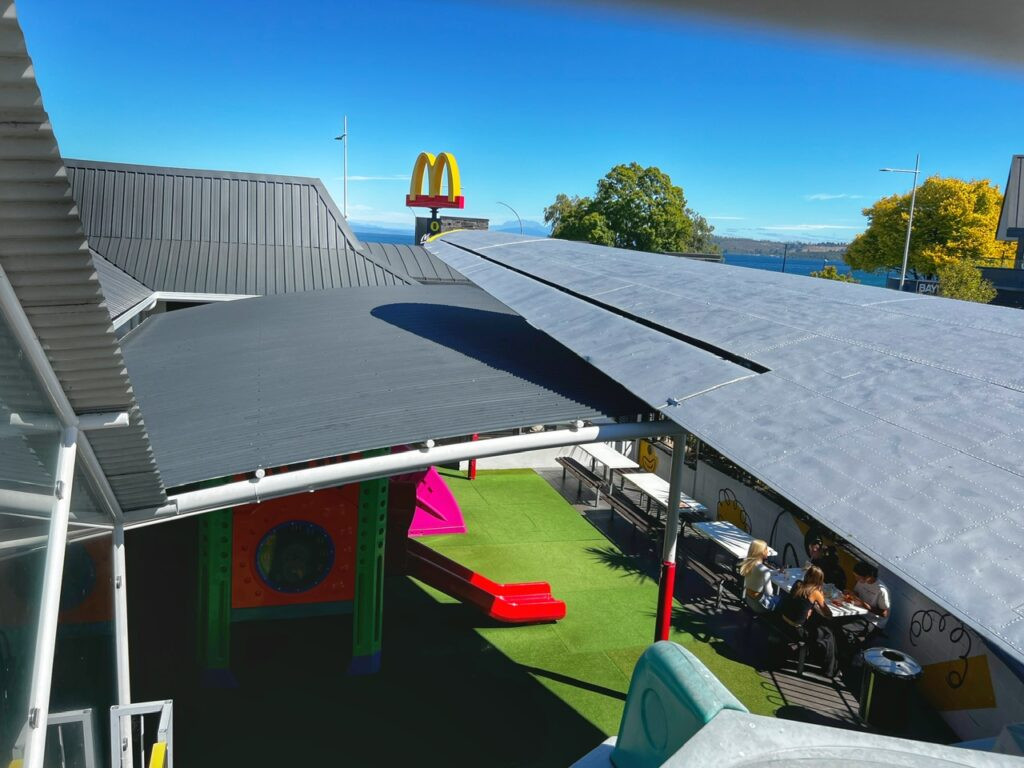
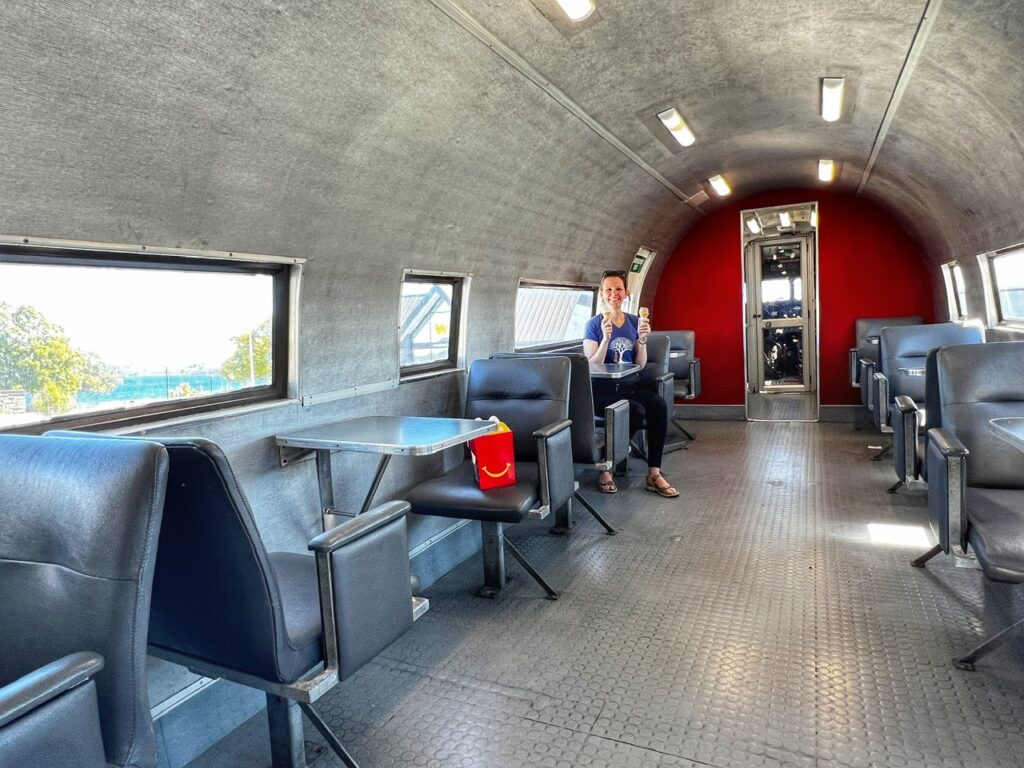
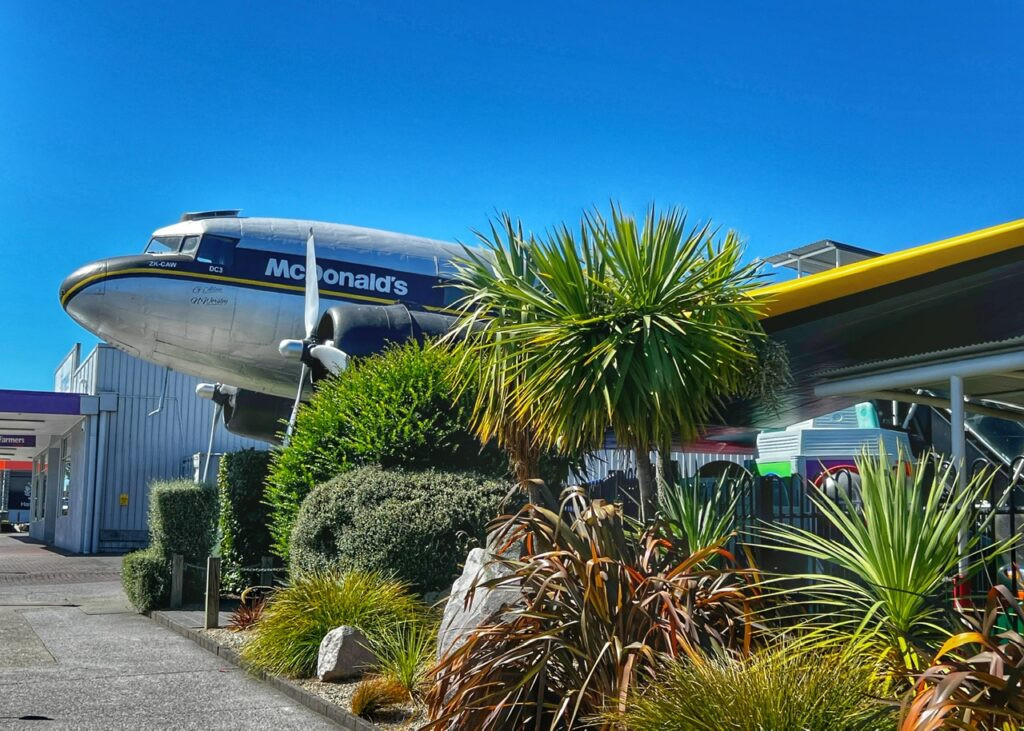
Why? It has a full-size airplane on its property, which serves as a seating area where we embraced our inner kids with $2 high fructose syrup cones. This plane is a decommissioned Douglas DC-13 which made its first flight on Dec. 17, 1935.
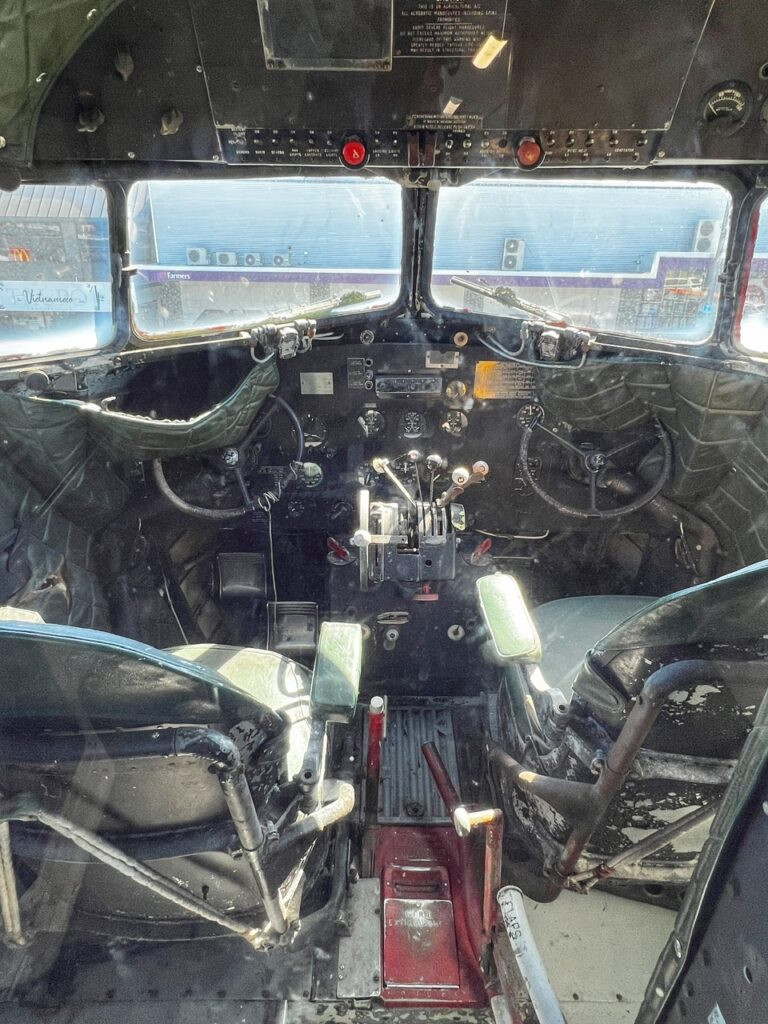
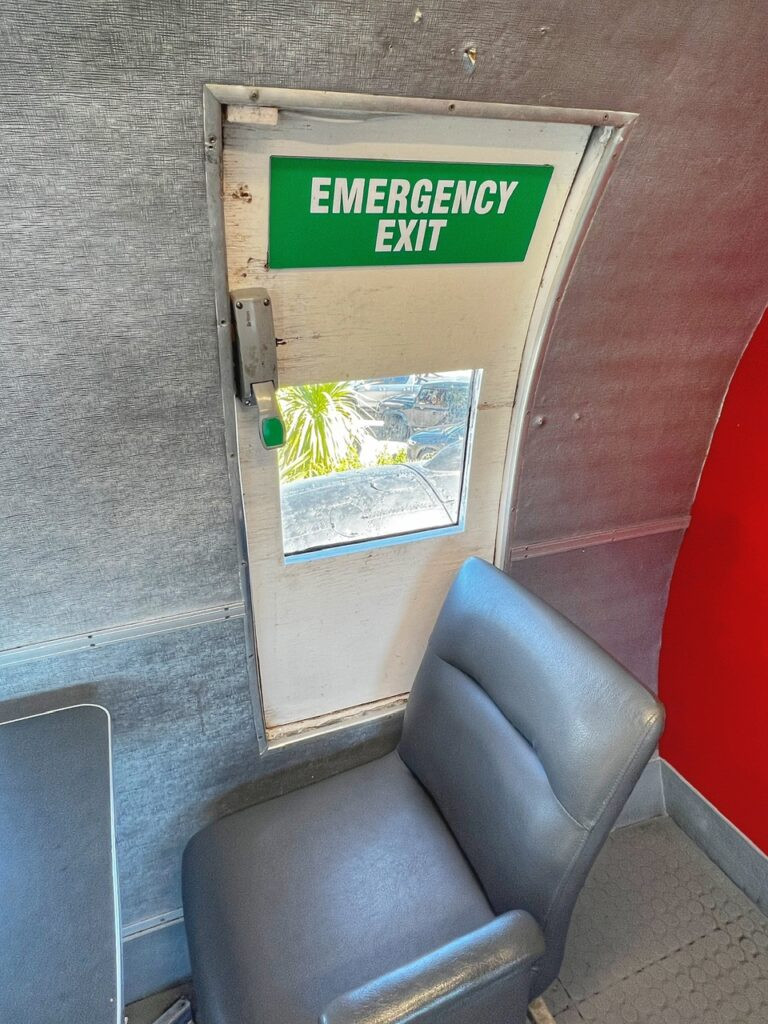
It has a rich history, including service during World War II and later as a passenger plane. It was retired in 1984 and became part of the McDonald’s establishment in 1990. Sure beats the normal plastic Playland germ factories and creepy clown man statues they typically offer.
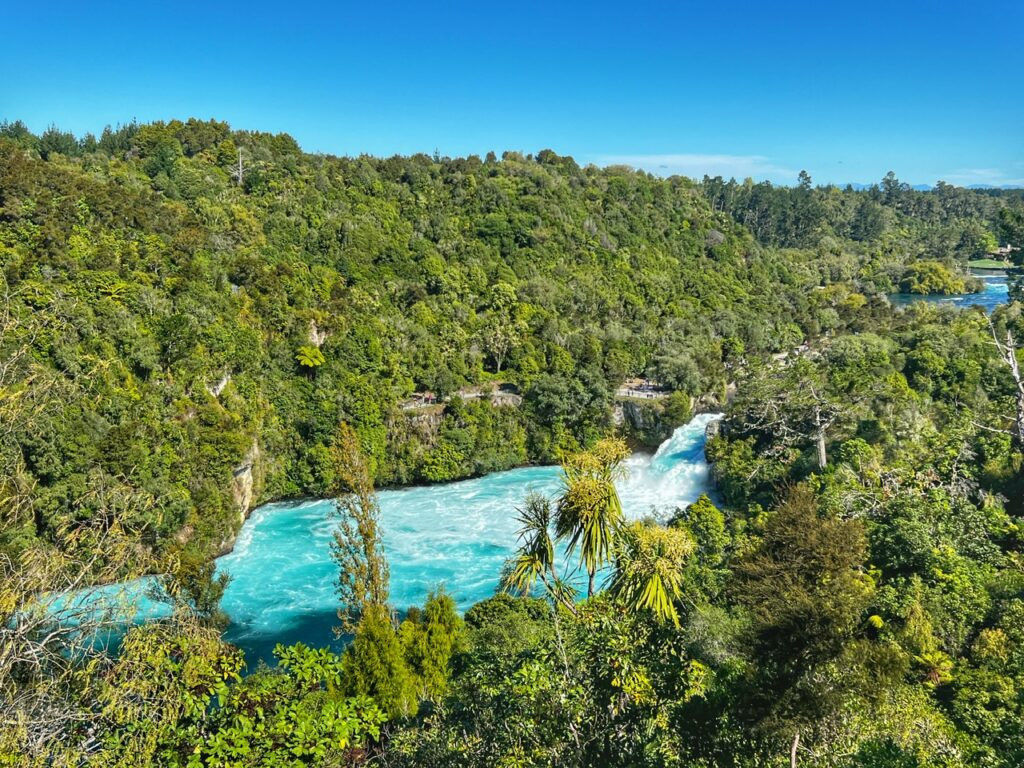
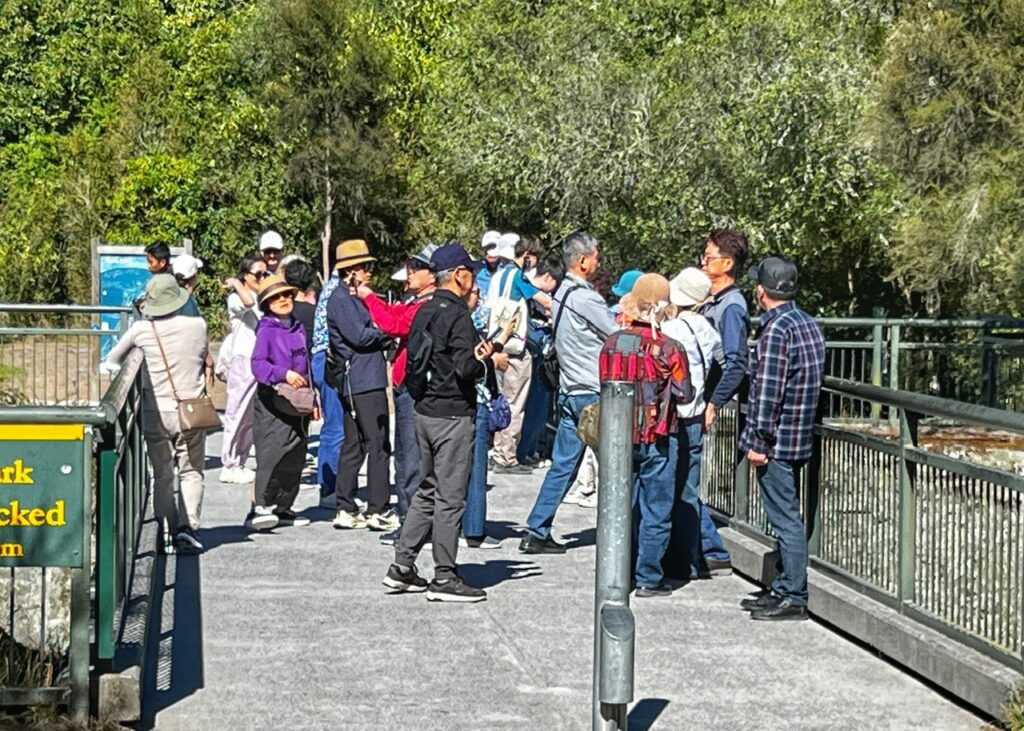
Next we stopped by the shimmering Huka Falls, along with hoards of other tourists.
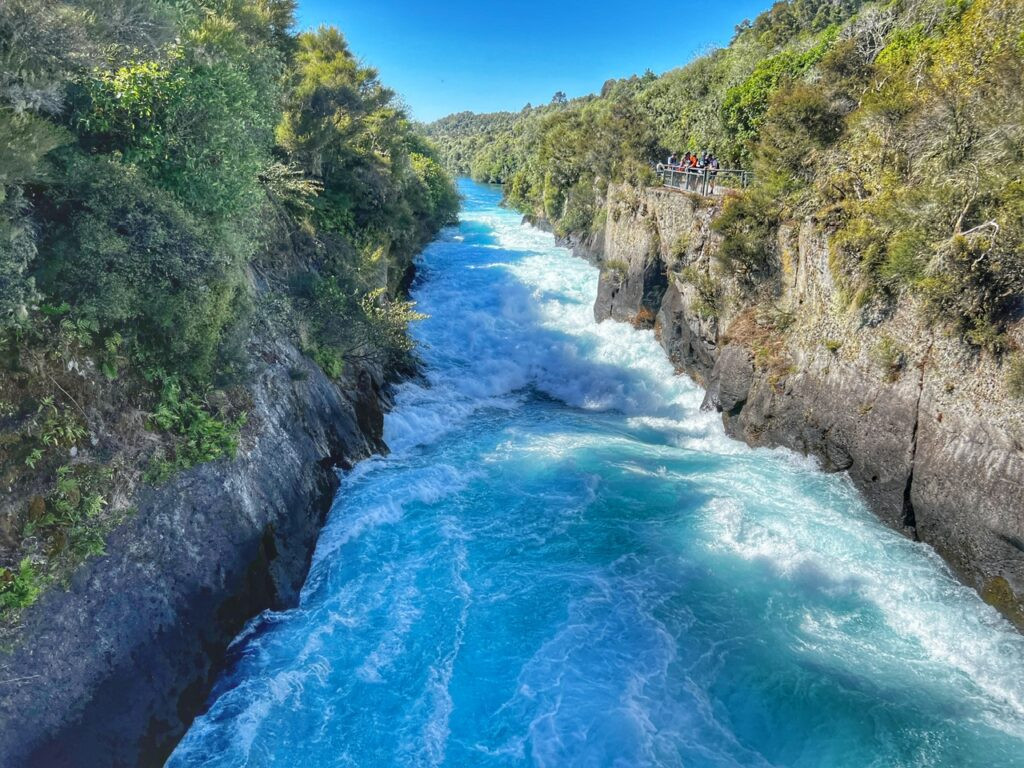
But it was pretty worth it to see about 200,000 liters of rushing aquamarine water plunge nine meters every second over the great rock face of Huka Falls. According to the signage, that’s enough to fill five Olympic swimming pools every minute.
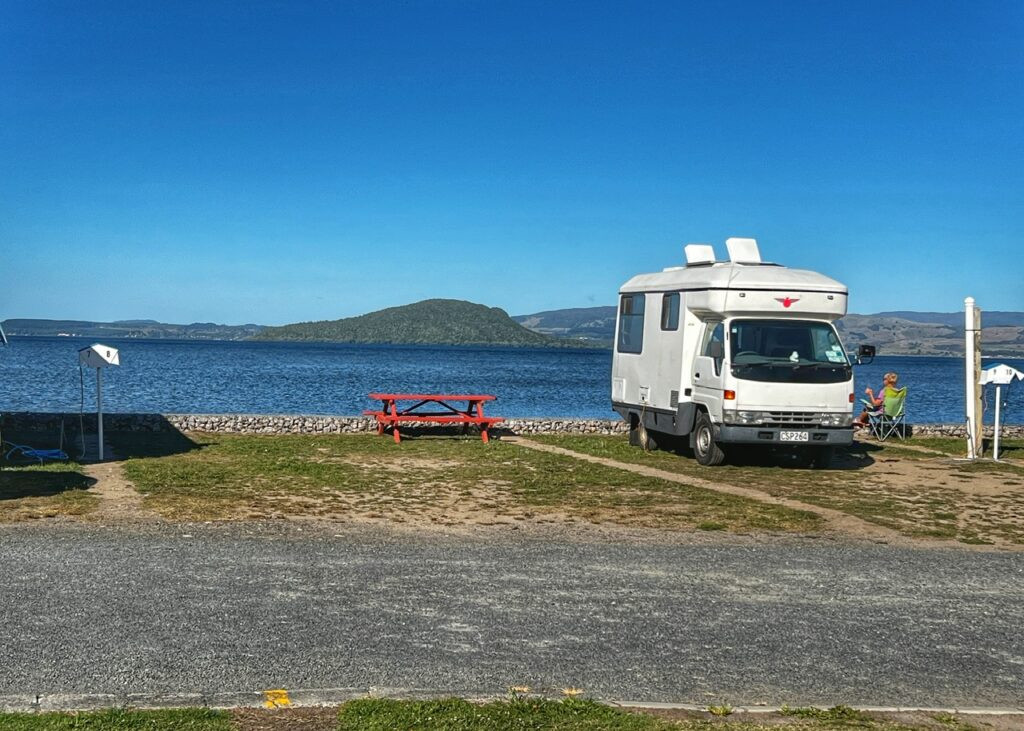
Arriving to our campsite in Rotorua which was perched right next to the lake.
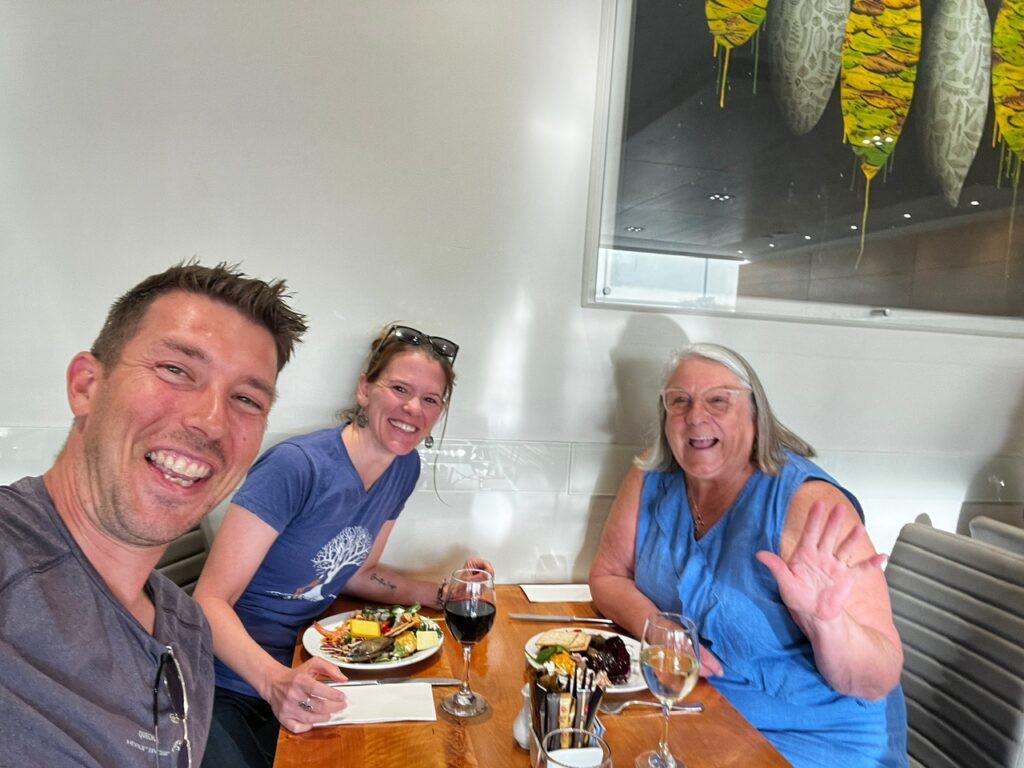
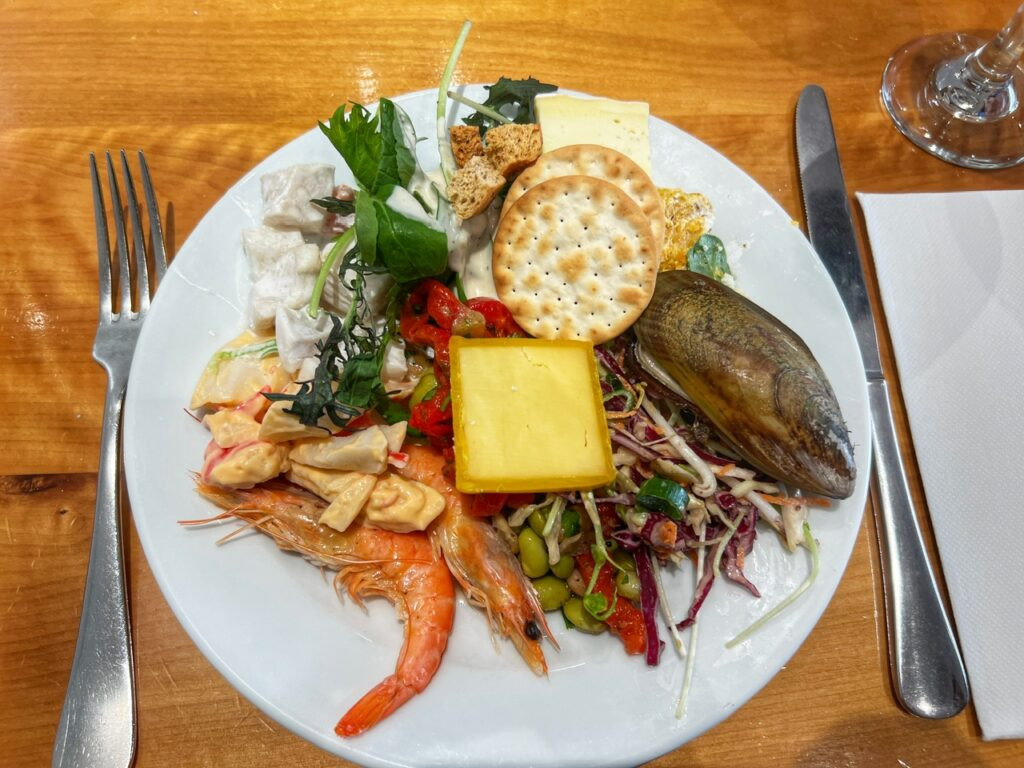
We then sampled the more luxurious slice of hospitality in this popular resort town by meeting up with Greg’s aunt who happened to be passing through from San Francisco. It had been since our wedding 12 years ago so it was wonderful to see her! Plus….the food was a wee bit better than our normal camp fare. 🤣
Day 5: Rotorua to Dickey Flat Camp
On our final day in NZ we ended with a couple unexpected surprises which we had wished to see in NZ, but didn’t until these final moments….the fuzziest, cutest cows and bioluminescent glow worms. We also dipped our toes into the only (Free!) thermal waters that flood the earth in this part of the world, had a last forest bath, and viewed the site of the Zorb…the giant plastic sphere which crazy people can choose to roll down a hill inside. Oh New Zealand…how we’d miss you. 🤣
Finally, we also wrapped up the expenses for our 5 night/6 day campervan adventure from Christchurch to Auckland through iMoova, which was $394.87. This included $84.19 for groceries, $80.54 for campsites, $70.80 for the ferry, $107.84 for petrol, and $51.50 for the van.
Please note that although the original cost was $1/day, this only included 3 nights/4 days, so we extended it for a bit additional. The imoova fee also included the ferry for the car itself and $100 NZD in gas. If you’re interested in using imoova to relocate a campervan or car, please use our referral link in the comments!
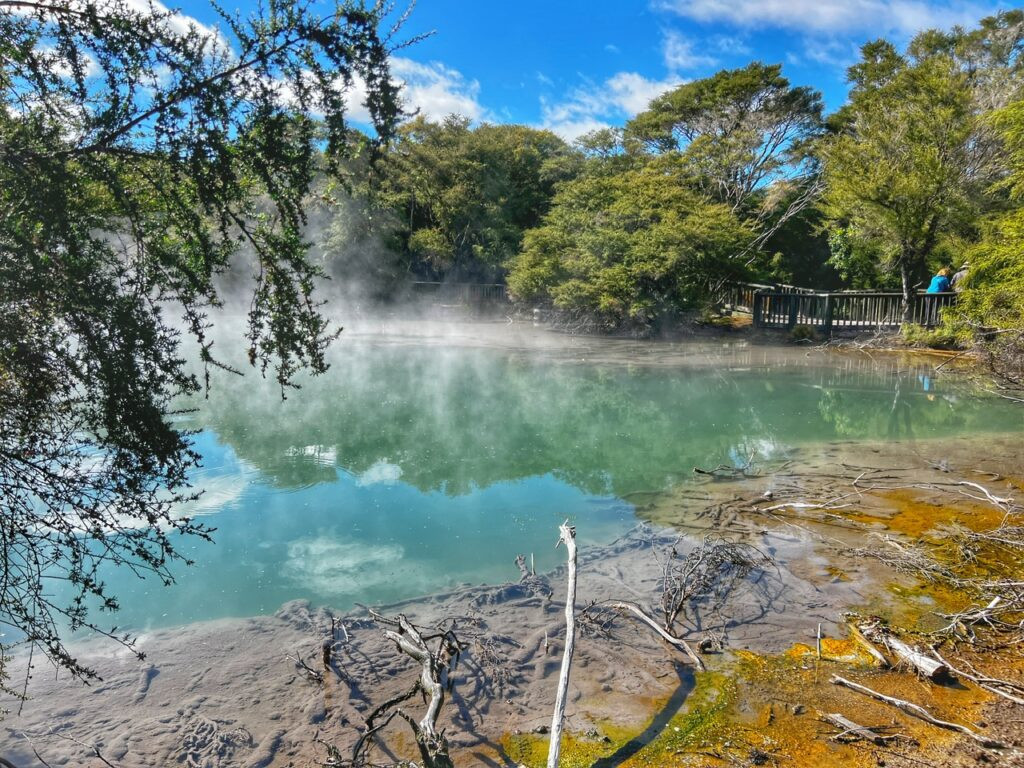
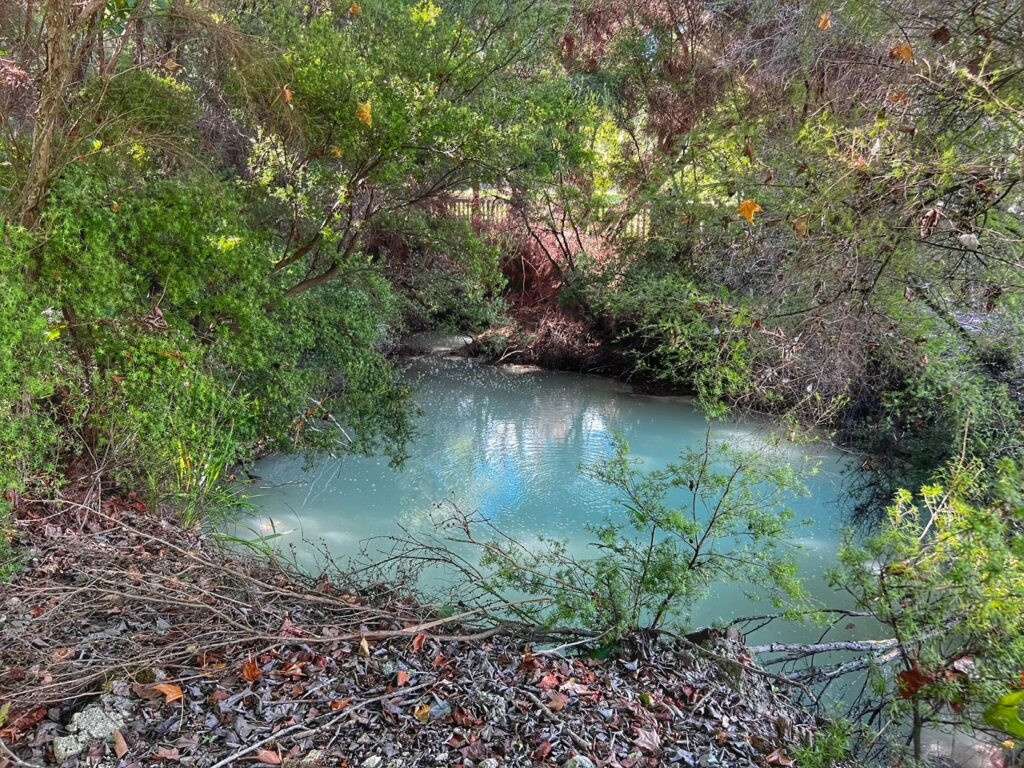
We left our Rotorua campsite to head to Rotorua’s Kuirau Park, which is New Zealand’s only free public geothermal park, located just a short walk from the city center. It was carpeted with aqua hued piping pools and other mud pots of 100 degree Celsius water, and has been ever since the Mãori and Pakeha people lived in Rotorua.
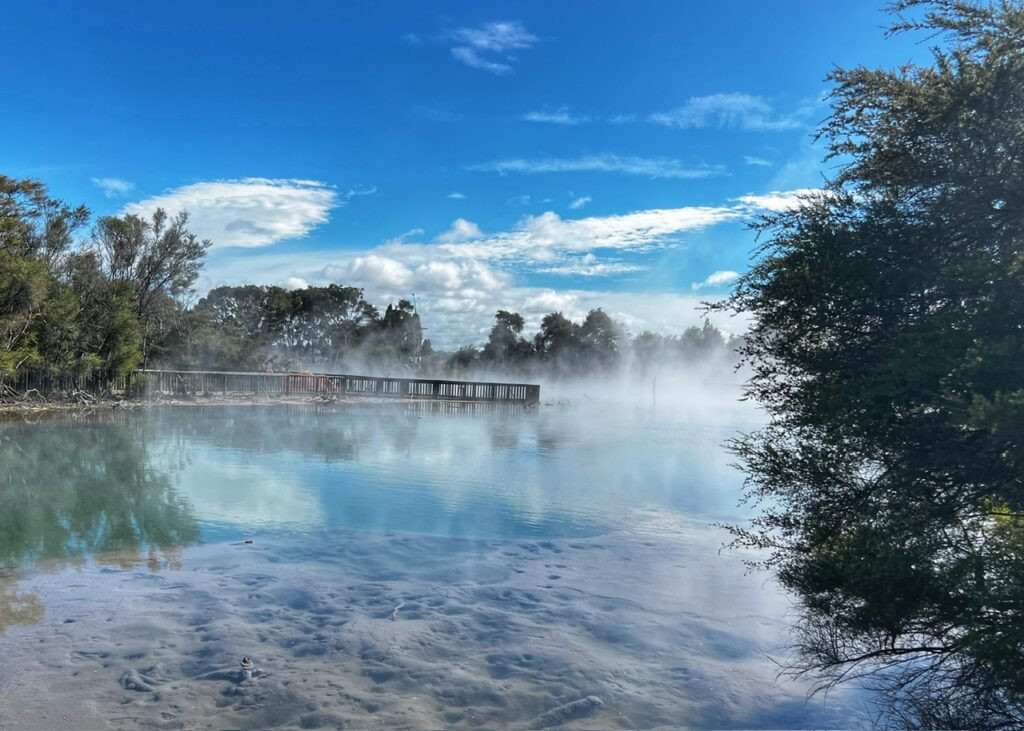
Most thermal-laden waters in the region charge a hefty admission and have hoards of crowds. This one is blissfully devoid of these things….
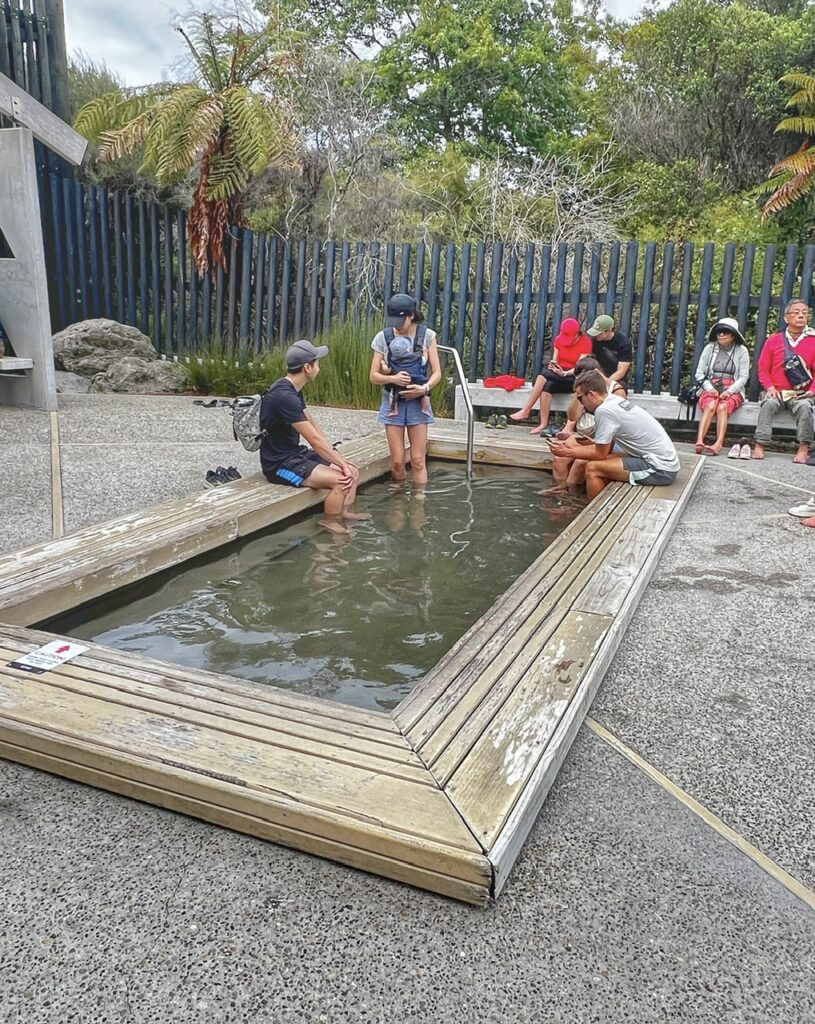
…other than the foot bath area where you can soak your tootsies.
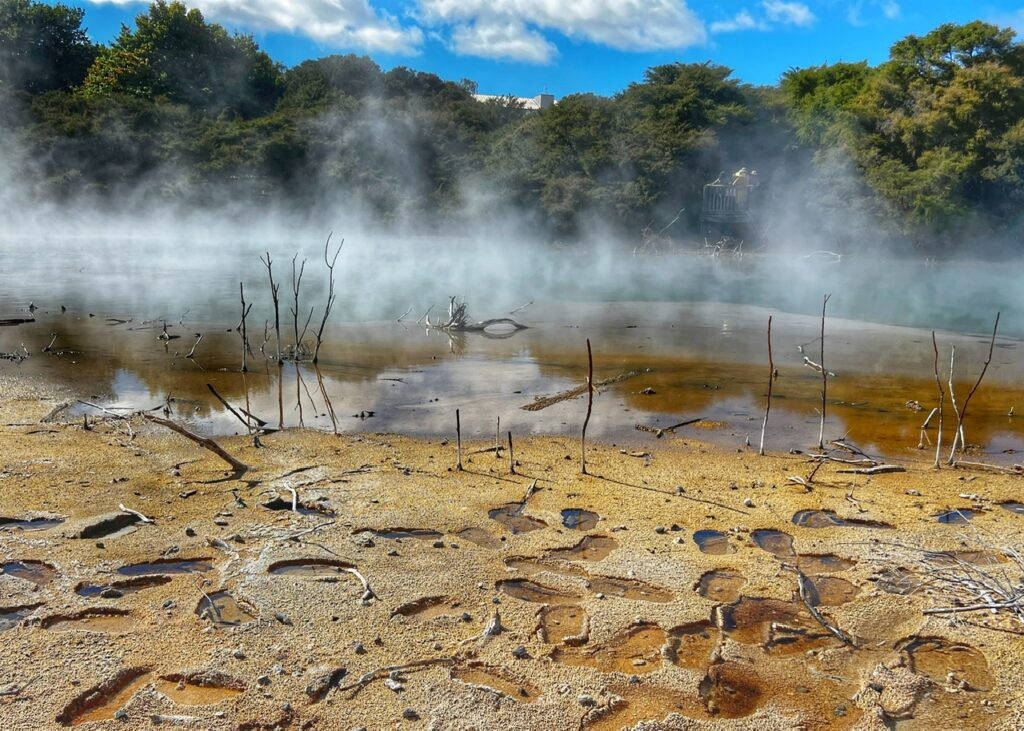
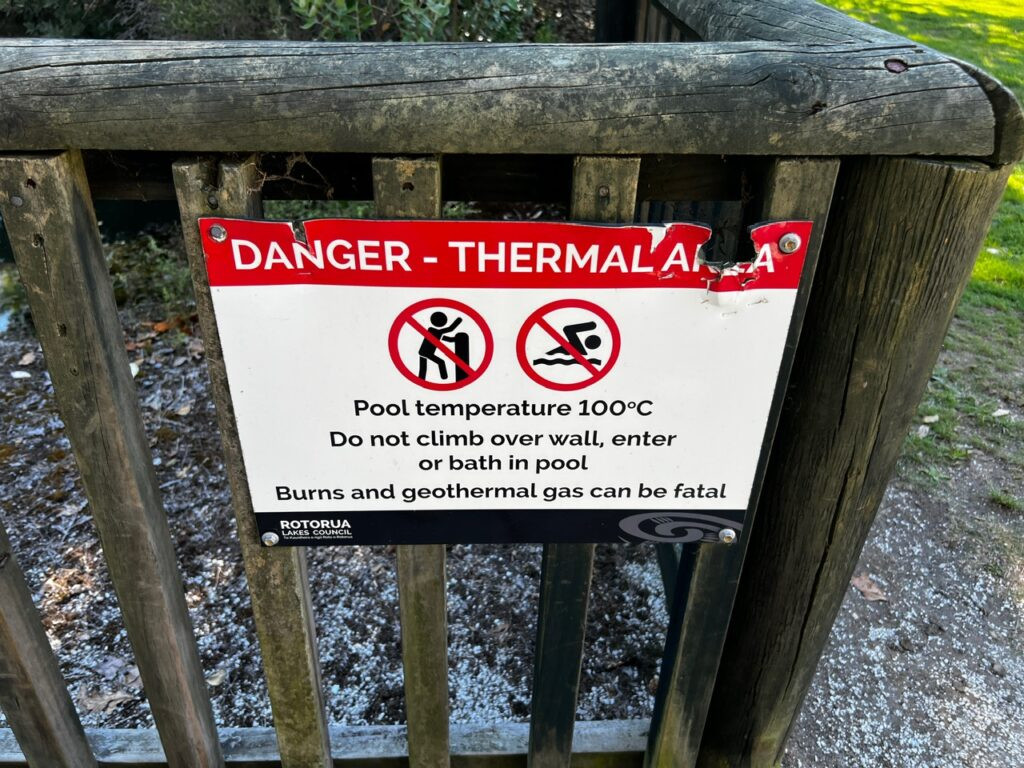
Just make sure not to do it in this one…because…duh.
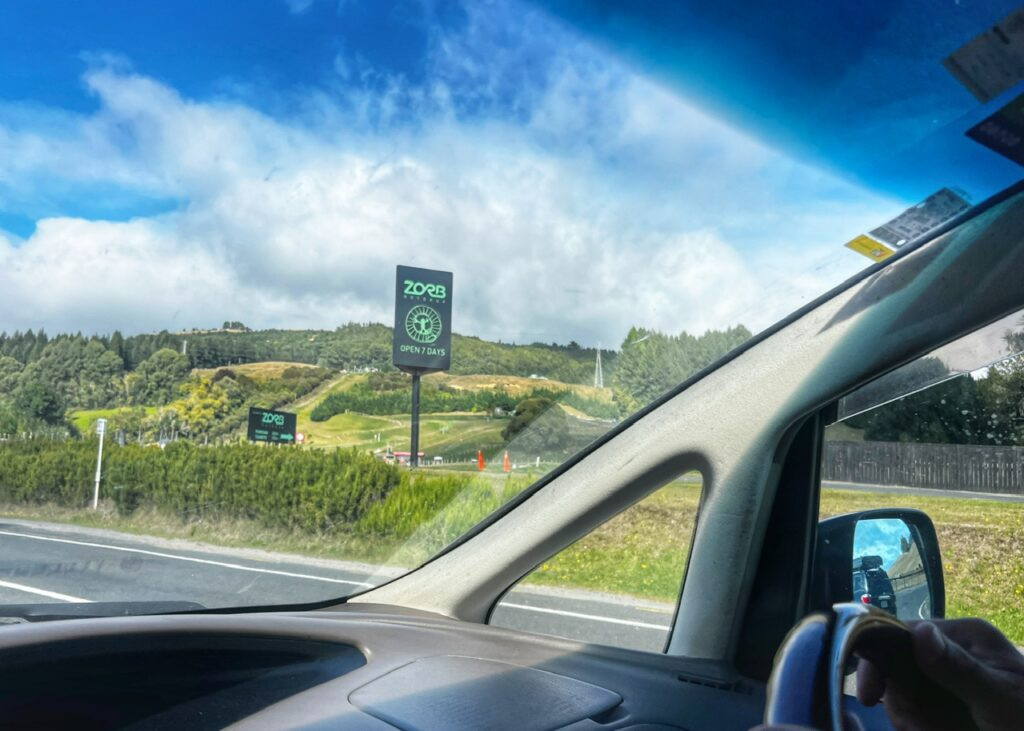

Passing the home of the Zorb. In case you’re not up on your adventure activity possibilities in NZ, zorbing is when you strap yourself into a harness inside a colossal plastic ball and barrel down a hill. If you’re interested in the next level of lunacy, there is also the option go hydro zorbing where you are free to bounce around inside unharnessed along with an added water slick.
Also, if you’re looking for a good investment opportunity, consider a cone company in NZ. They use them obsessively.
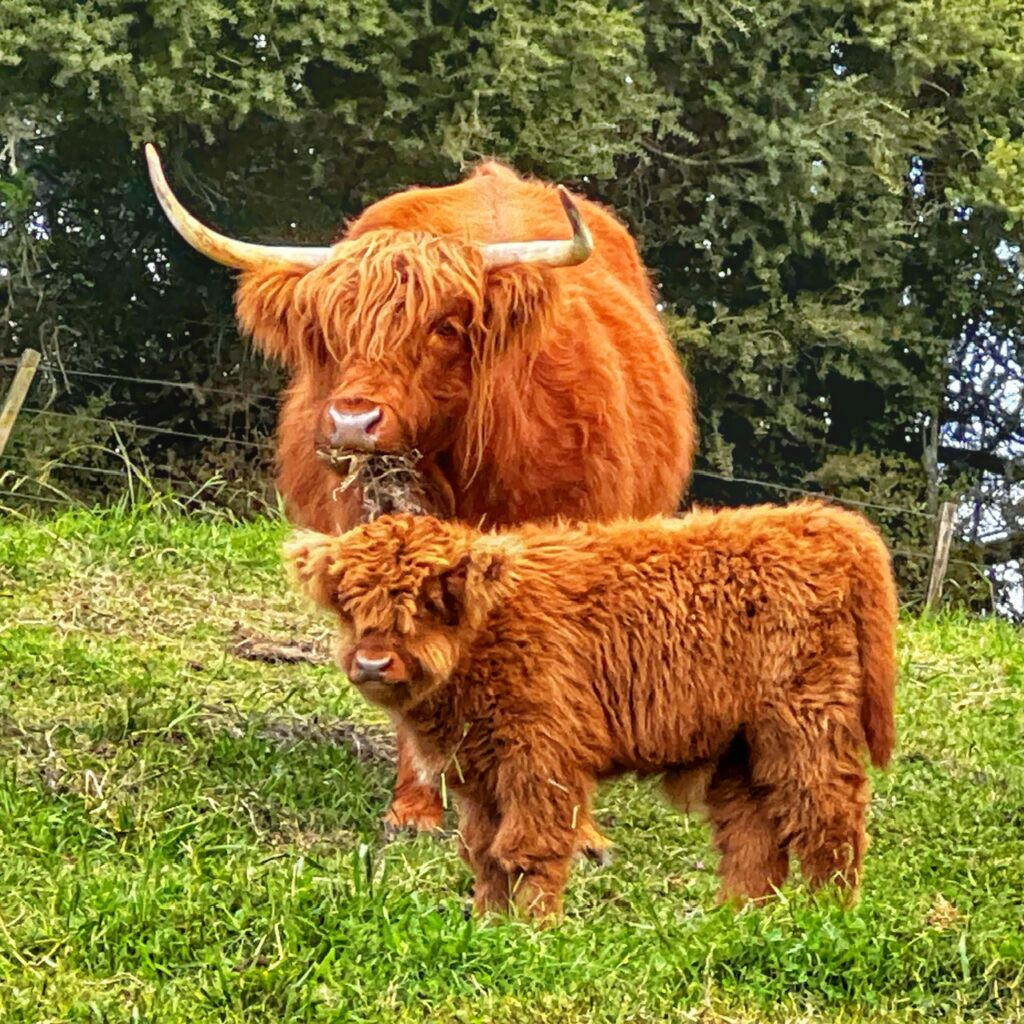
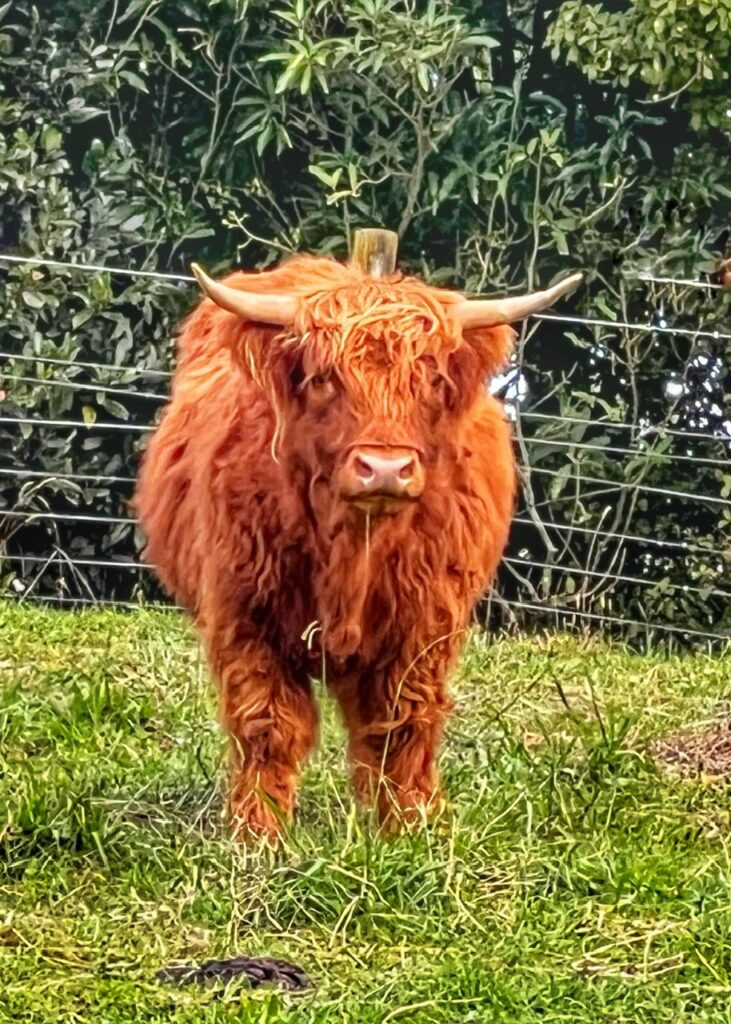
As we arrived to our campsite for the evening, Mandy was ecstatic that Dickey Flat had a pasture loaded with Highland cattle located within walking distance. We had been searching for them throughout the entire South Island, but our search for “fuzzy cows” had come up a bit short on Chat GPT. 🤣
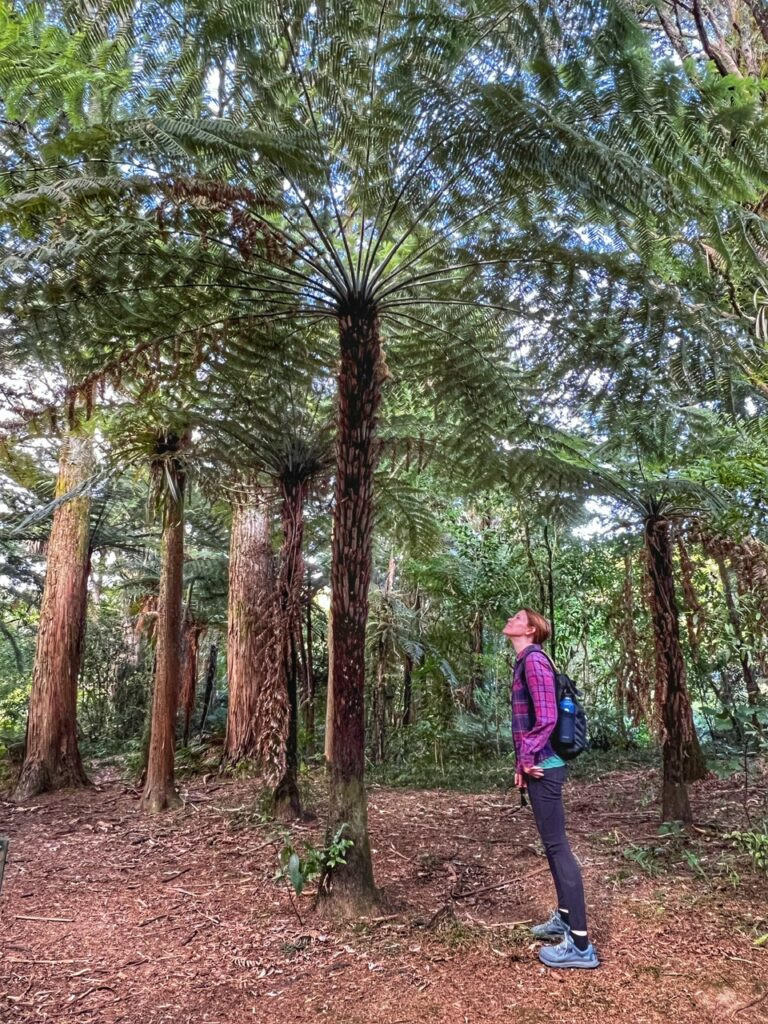

We then arrived to our home for the night which was at Dickey Flat campsite, which offered not only the cows, but beautiful hiking trails in the temperate rainforest, loaded with tree ferns, and inviting river pools.
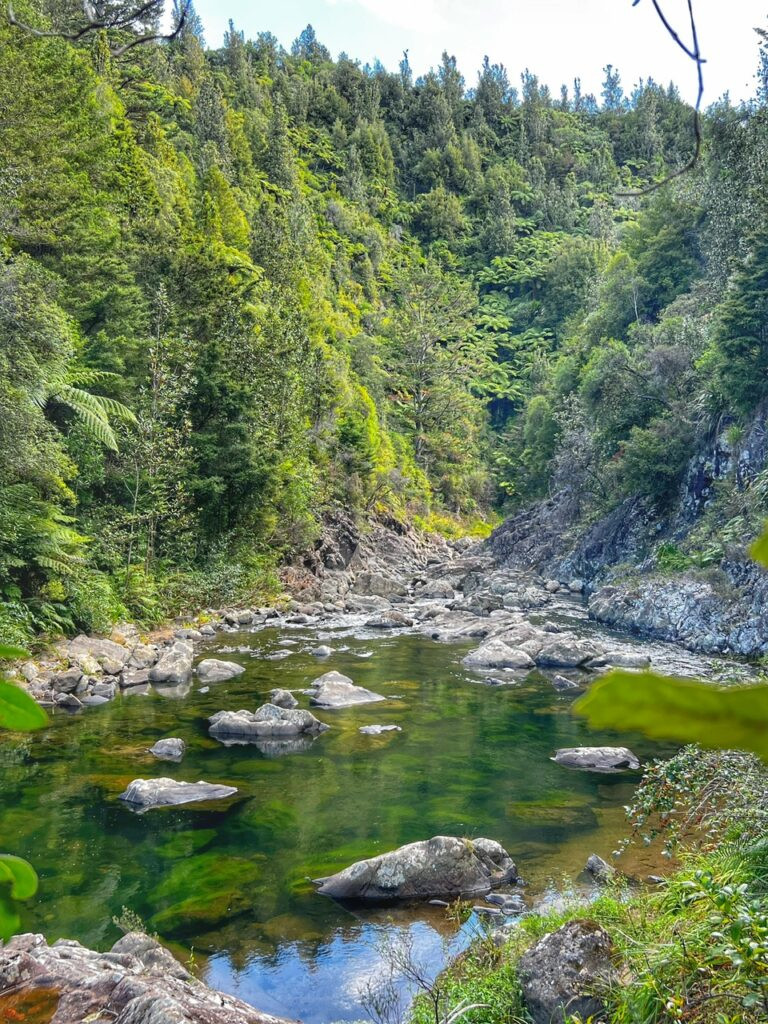
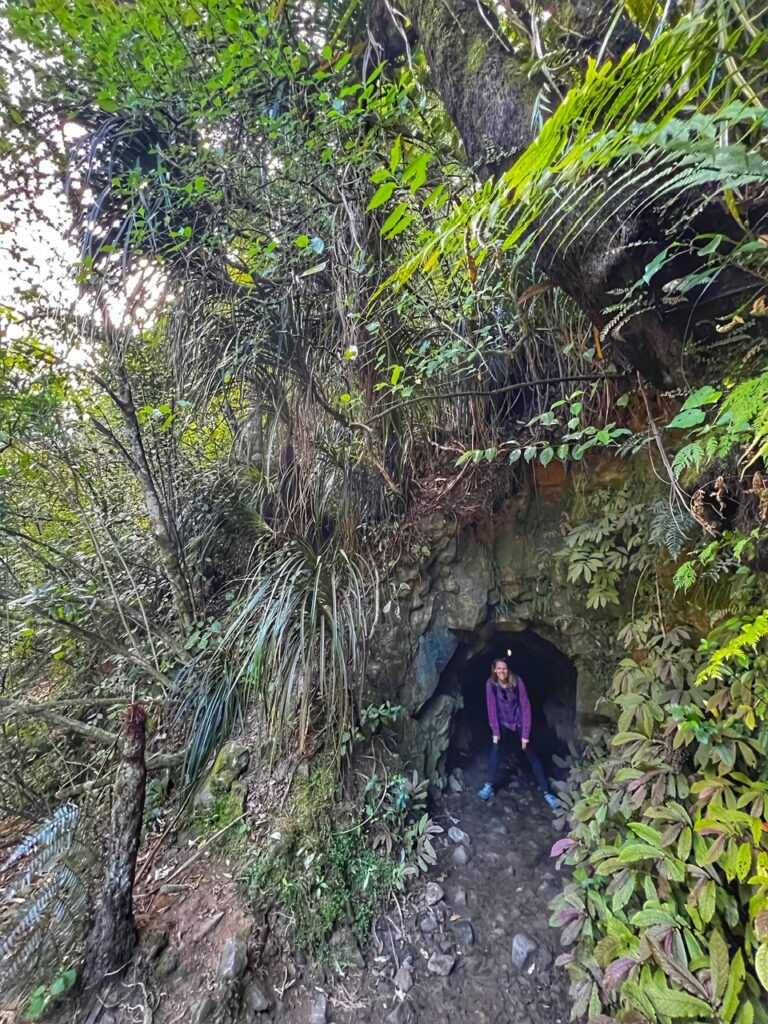
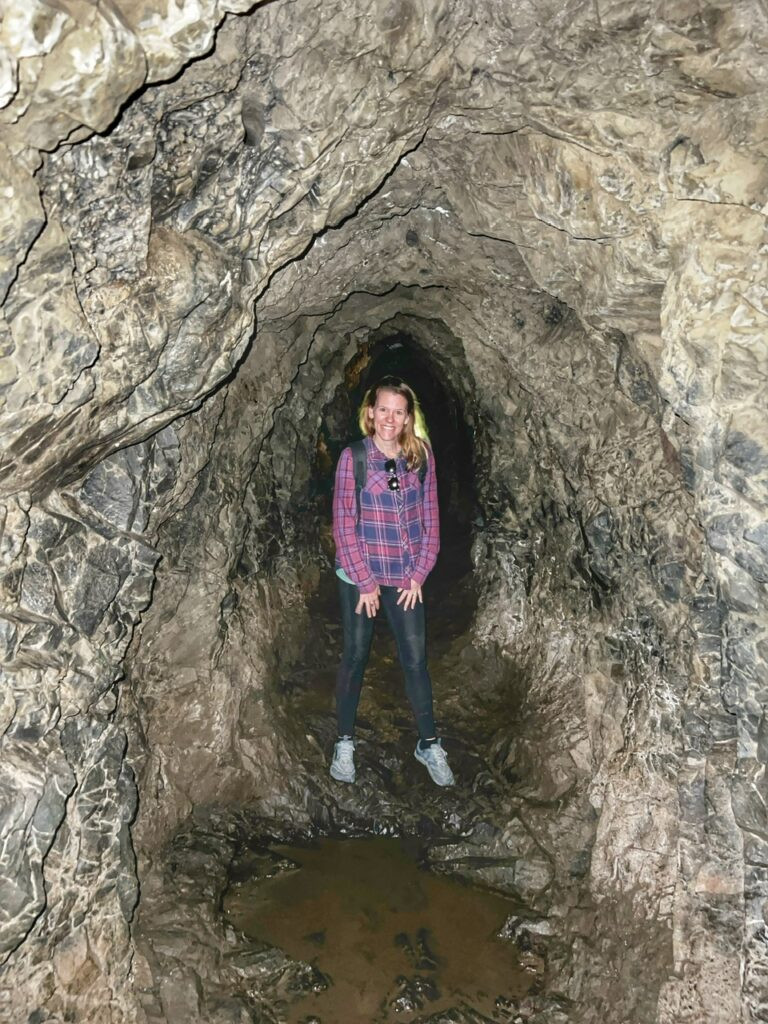
It then led across a suspension bridge, and through a fascinating 200 meter long historic mining tunnel, which was unfortunately a bit flooded so we had to turn around before we got to the end of it.
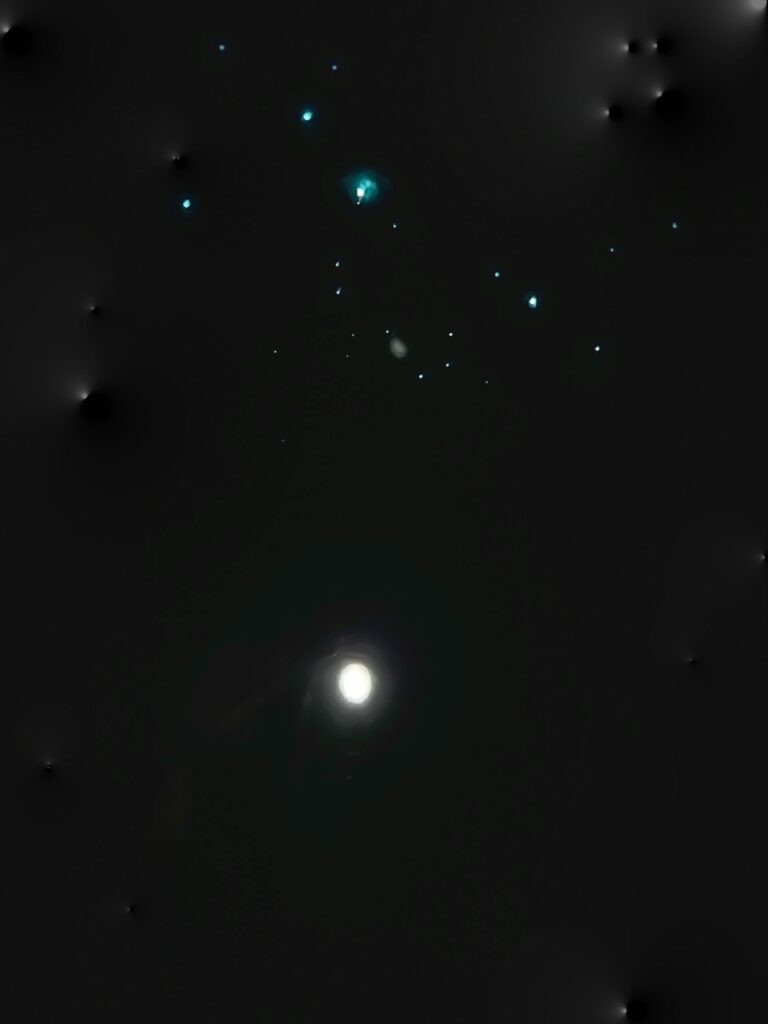
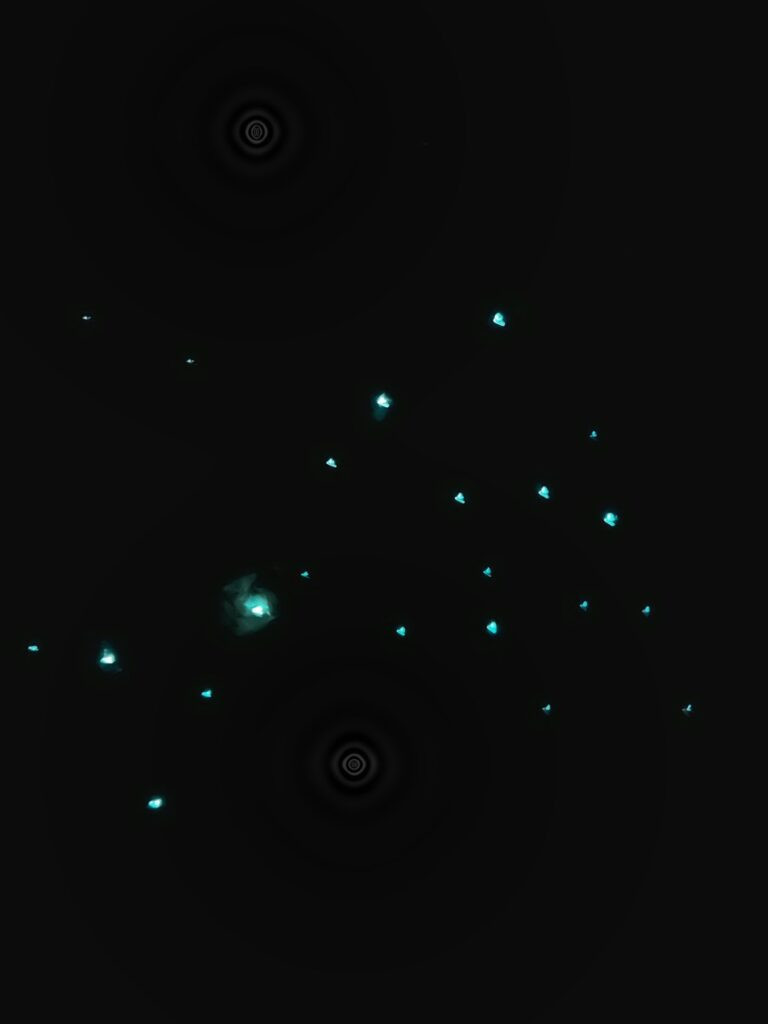
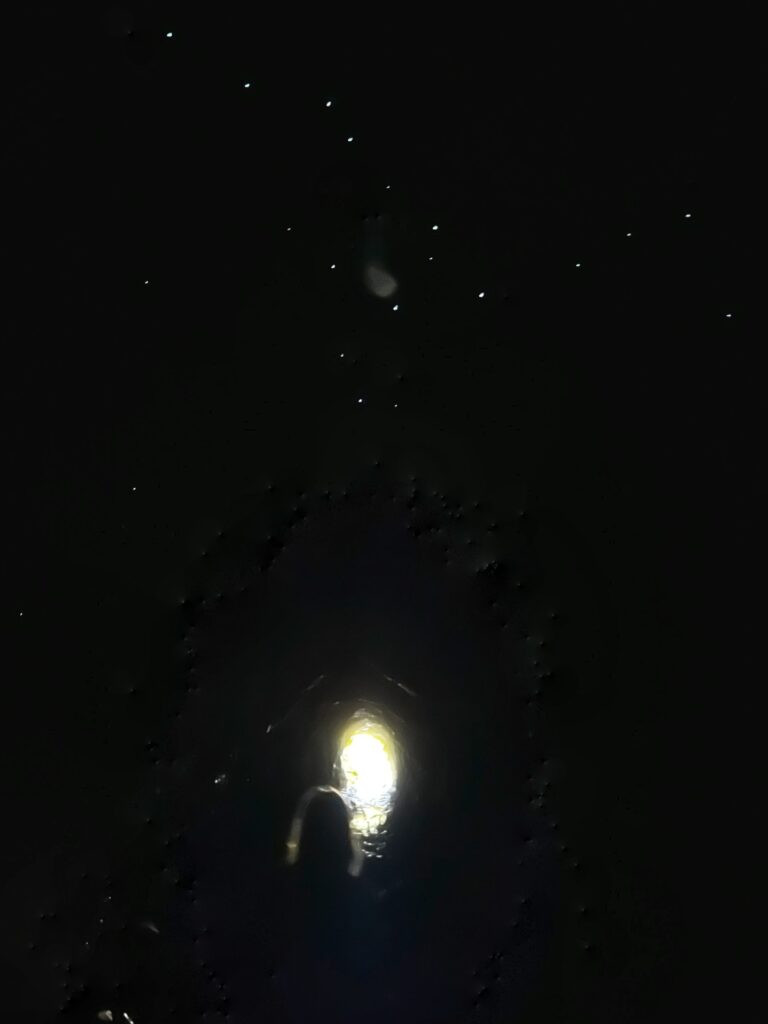
However, when we got to the halfway point, we got quite a surprise when we looked up and saw a blue-green celestial swath of what we immediately knew were glow worms, which people pay a lot of cash to see in this country. Our worms were free, and in fact, we soon learned, not worms. They’re the larvae of a small fly called Arachnocampa luminosa.
They glow because of a chemical reaction in their bodies called bioluminescence. They use their glow to attract insects — like little living fishing lures. The glow worms hang down sticky threads, and when an insect gets attracted to the light and touches a thread, the glow worm reels it in and eats it. It was quite a sight gazing back to the tunnel entrance and up to the “starry sky” above us.

